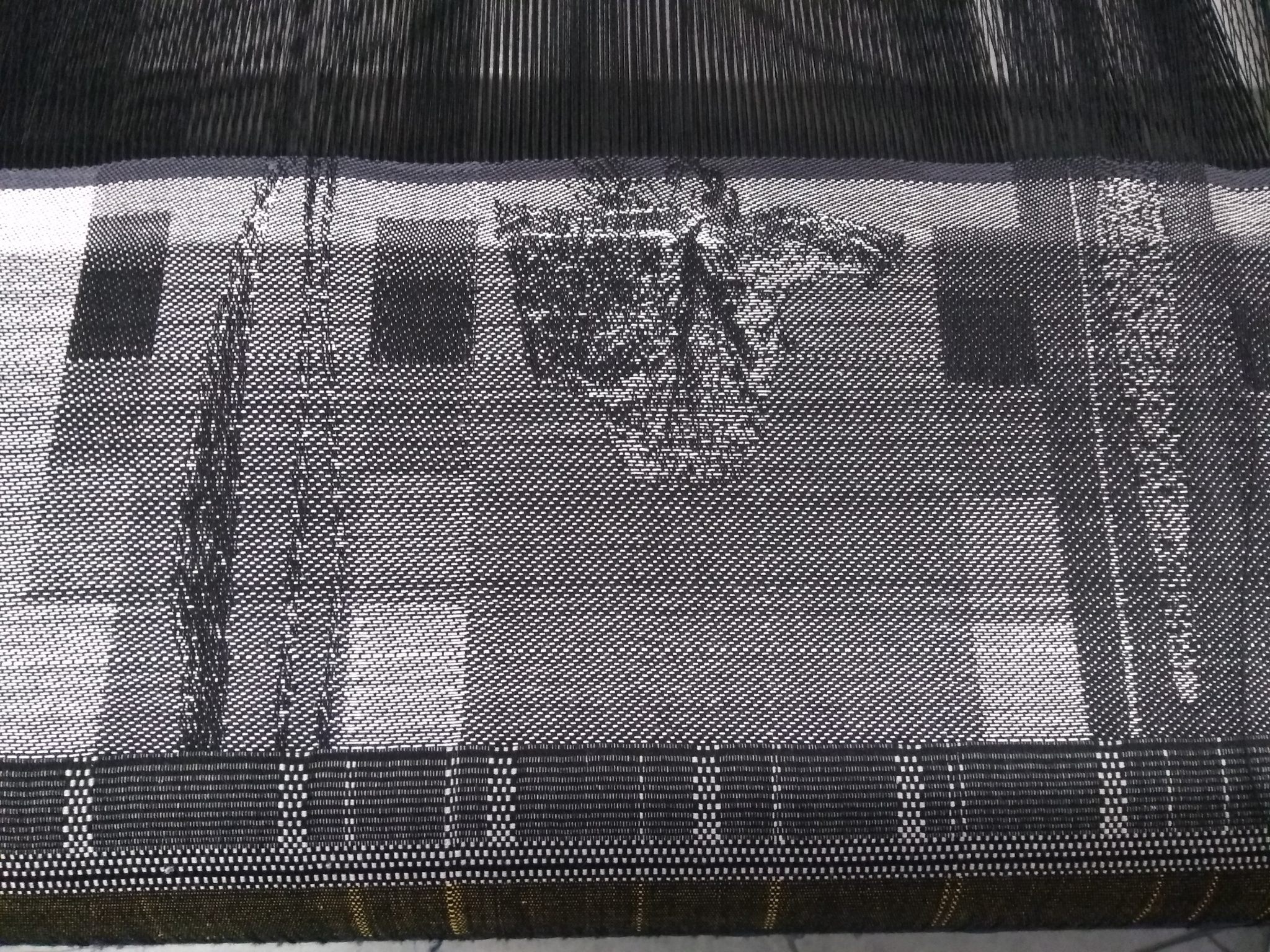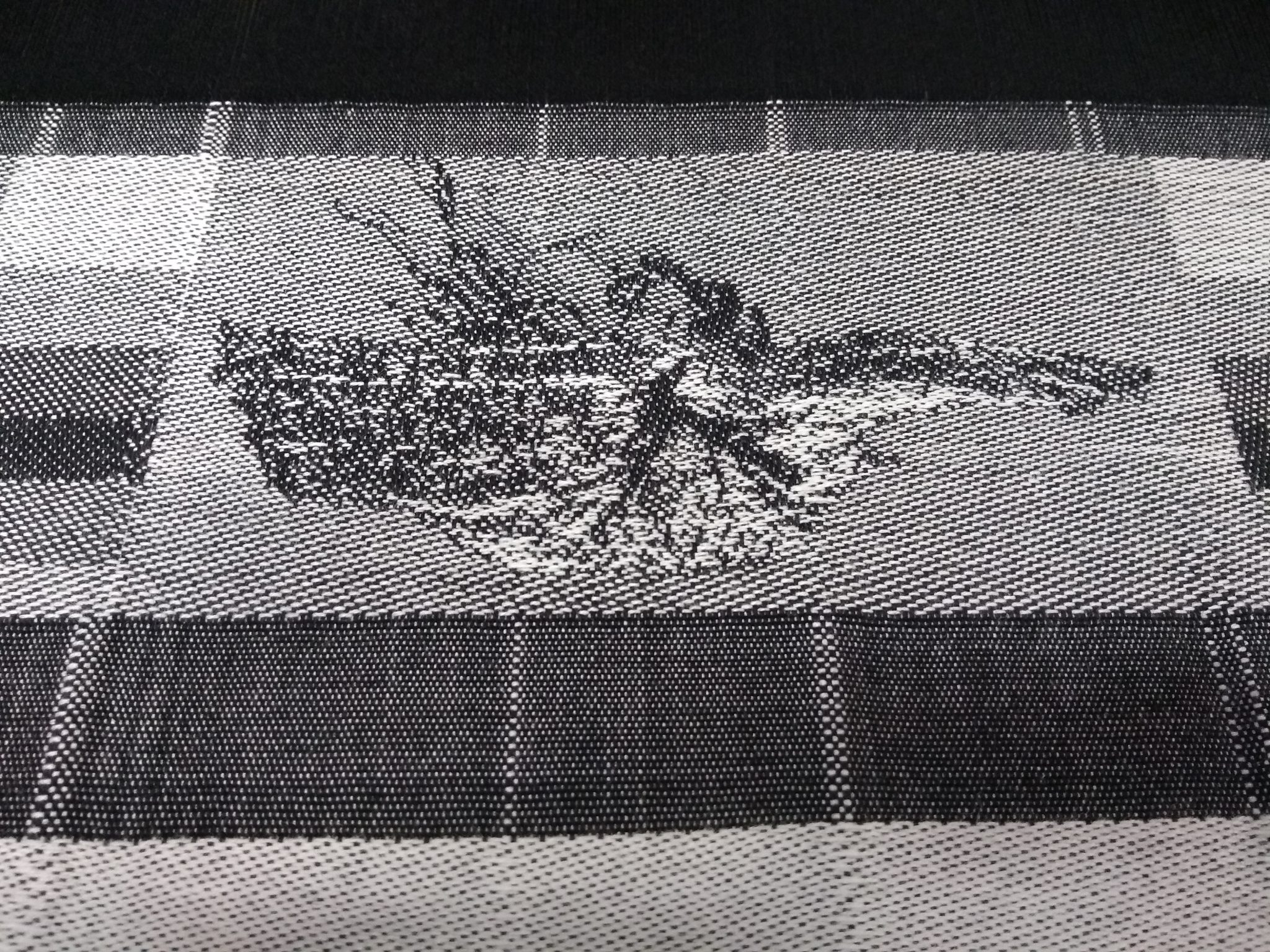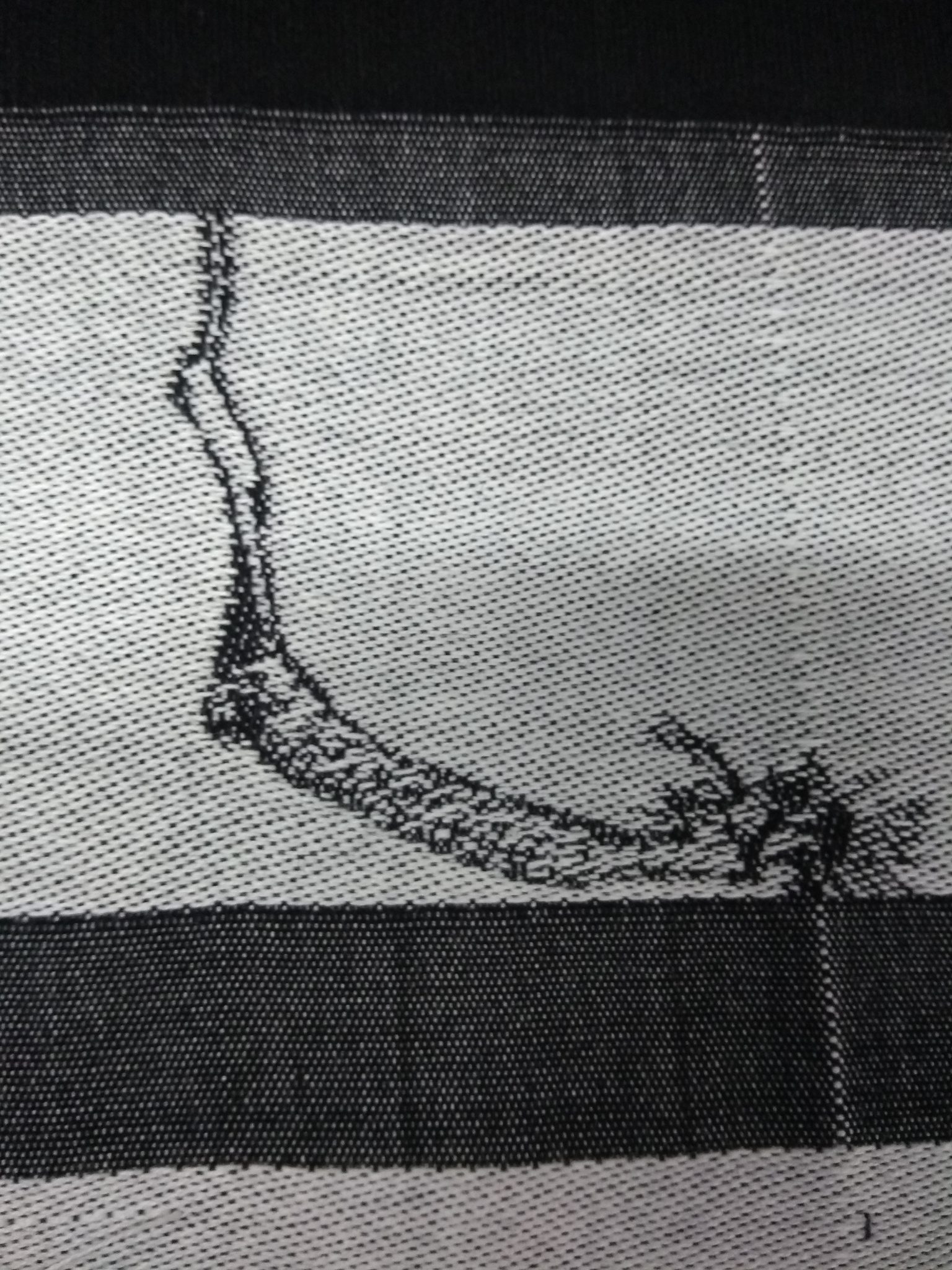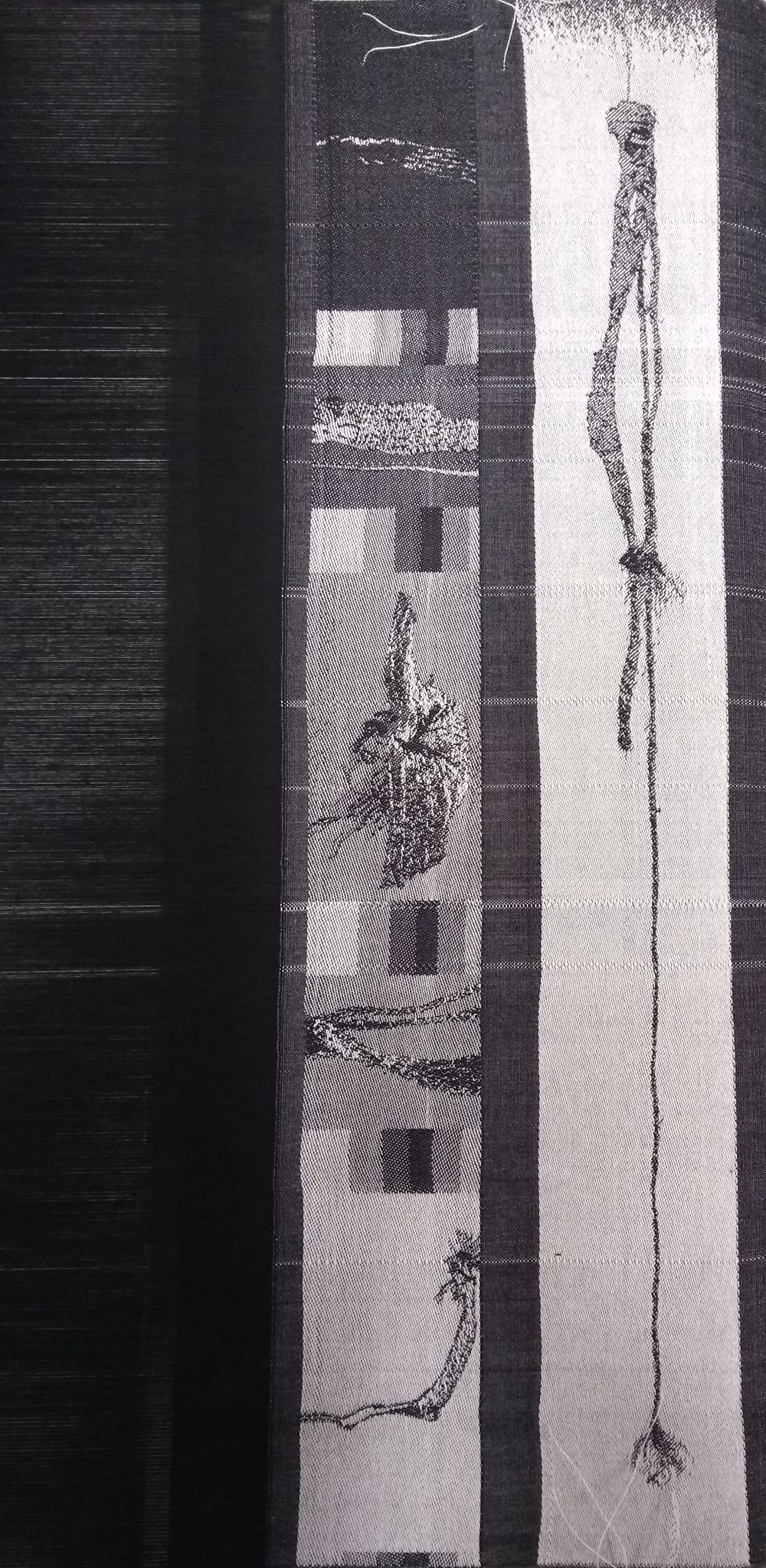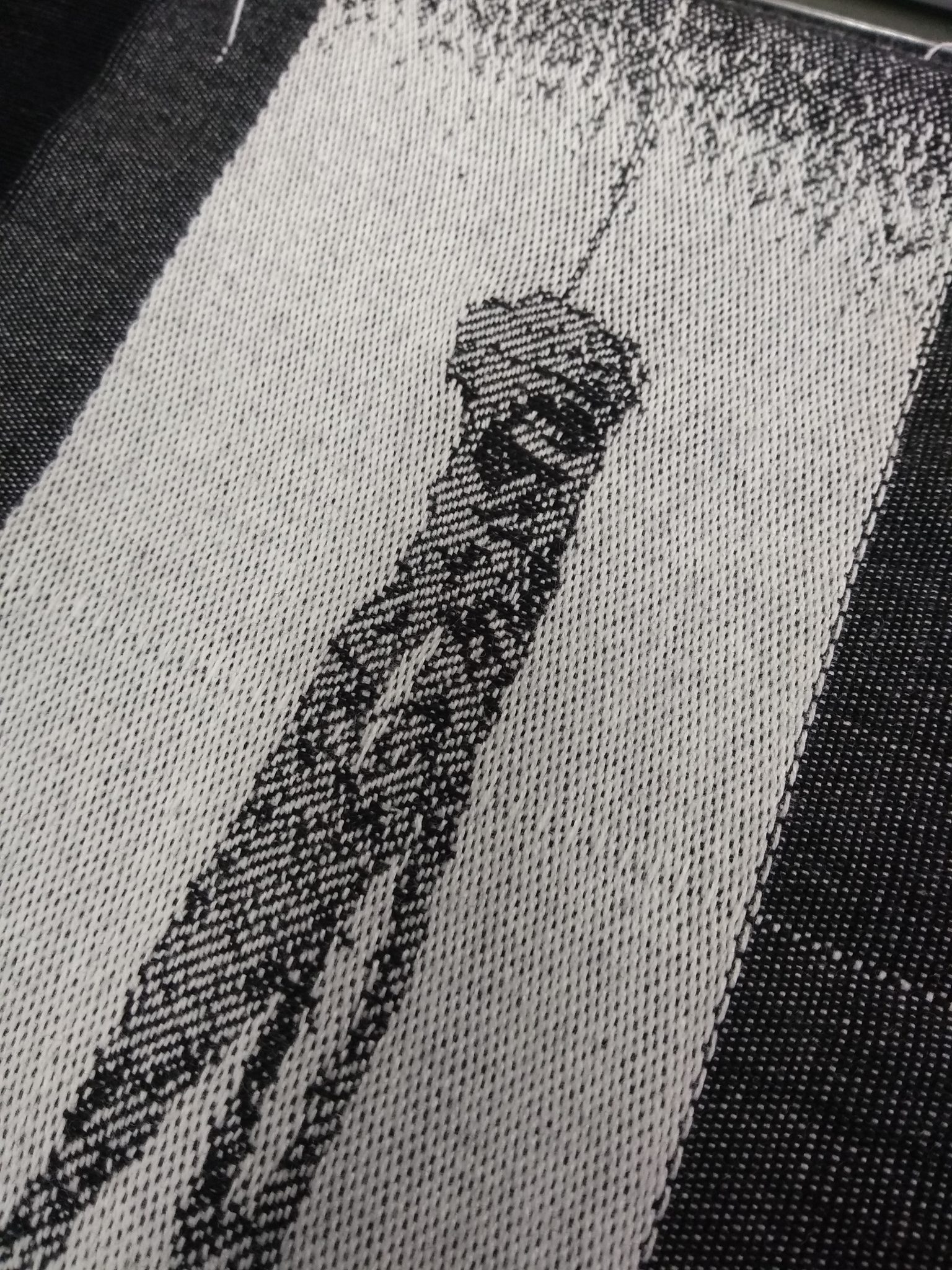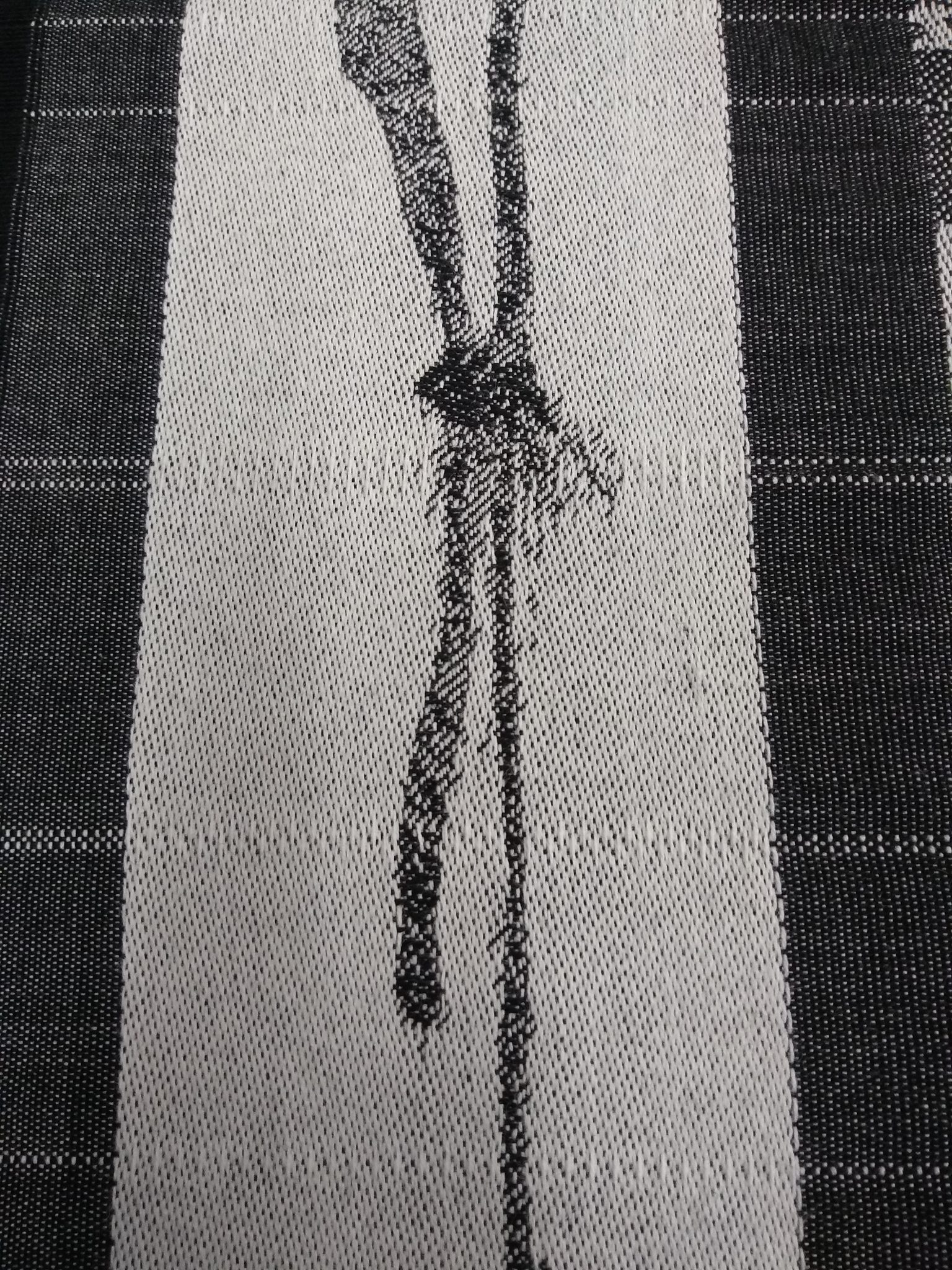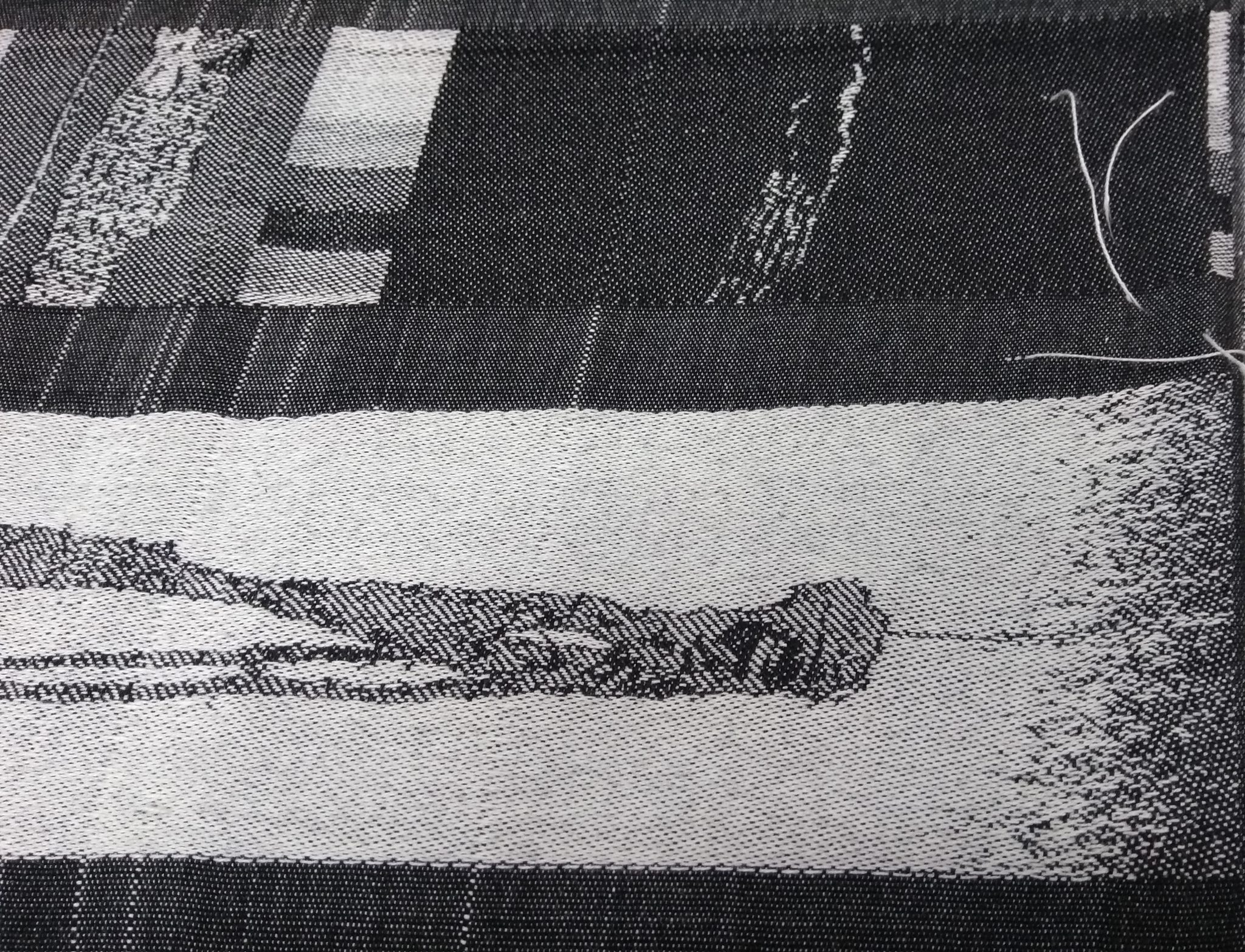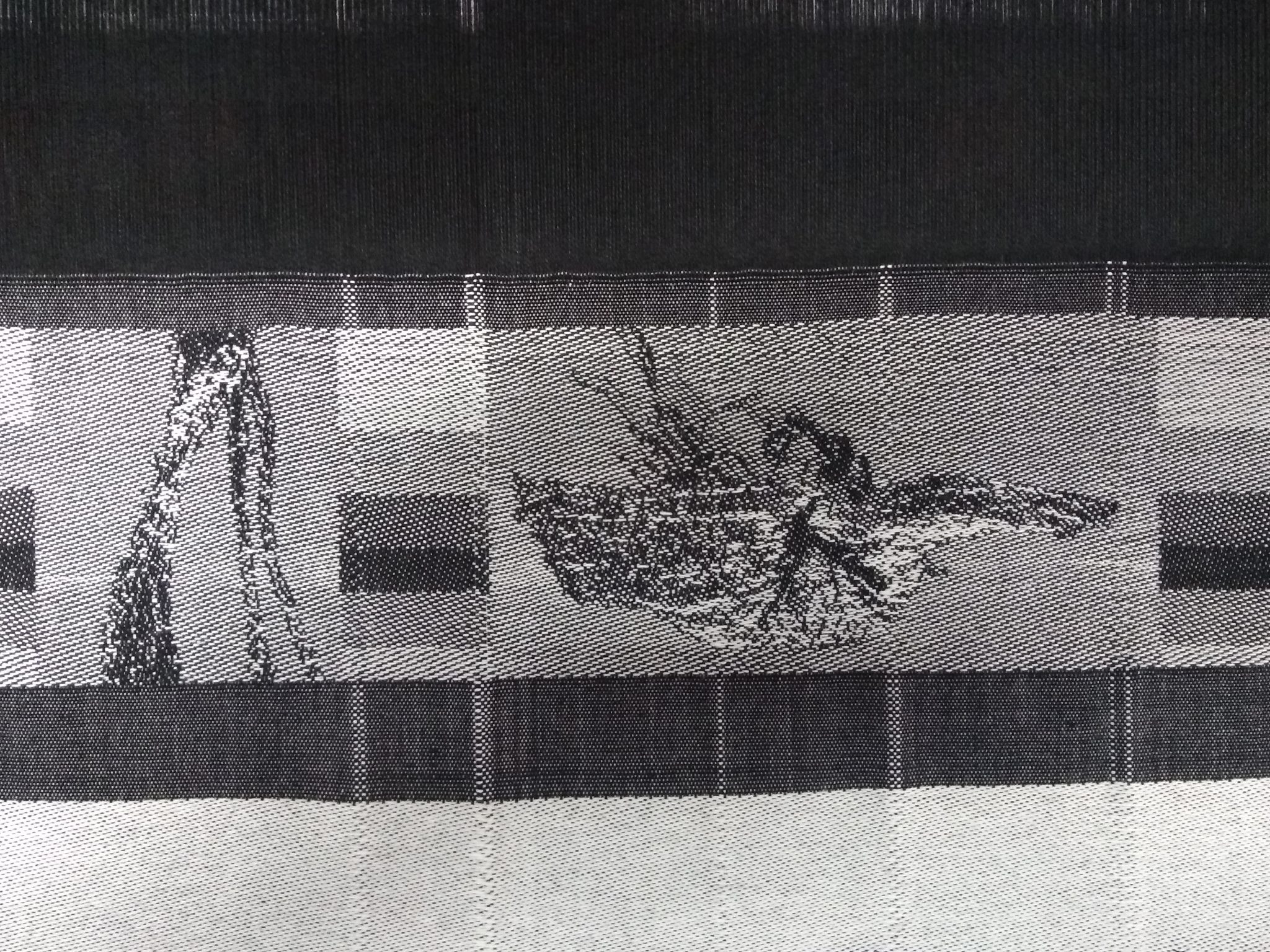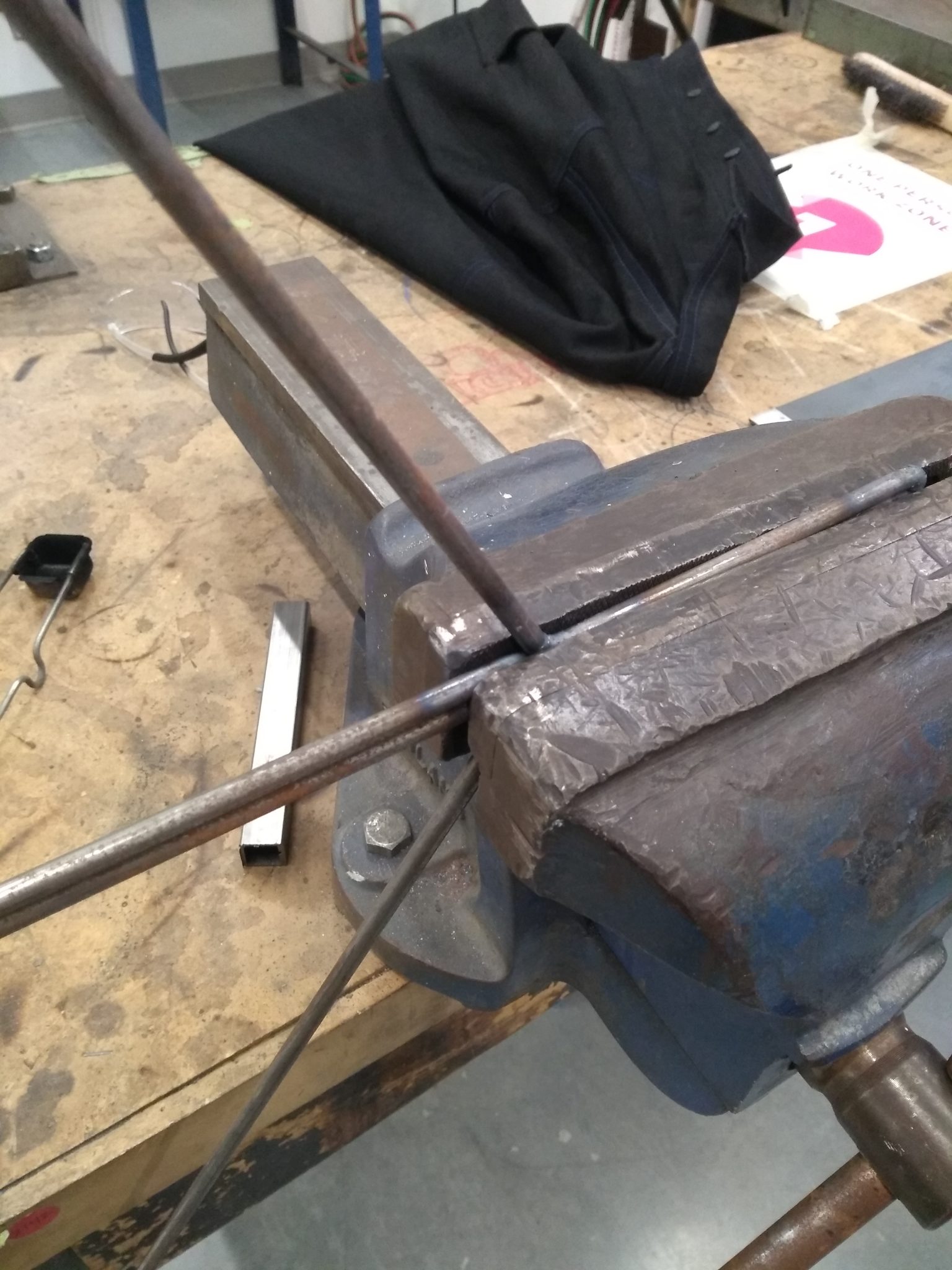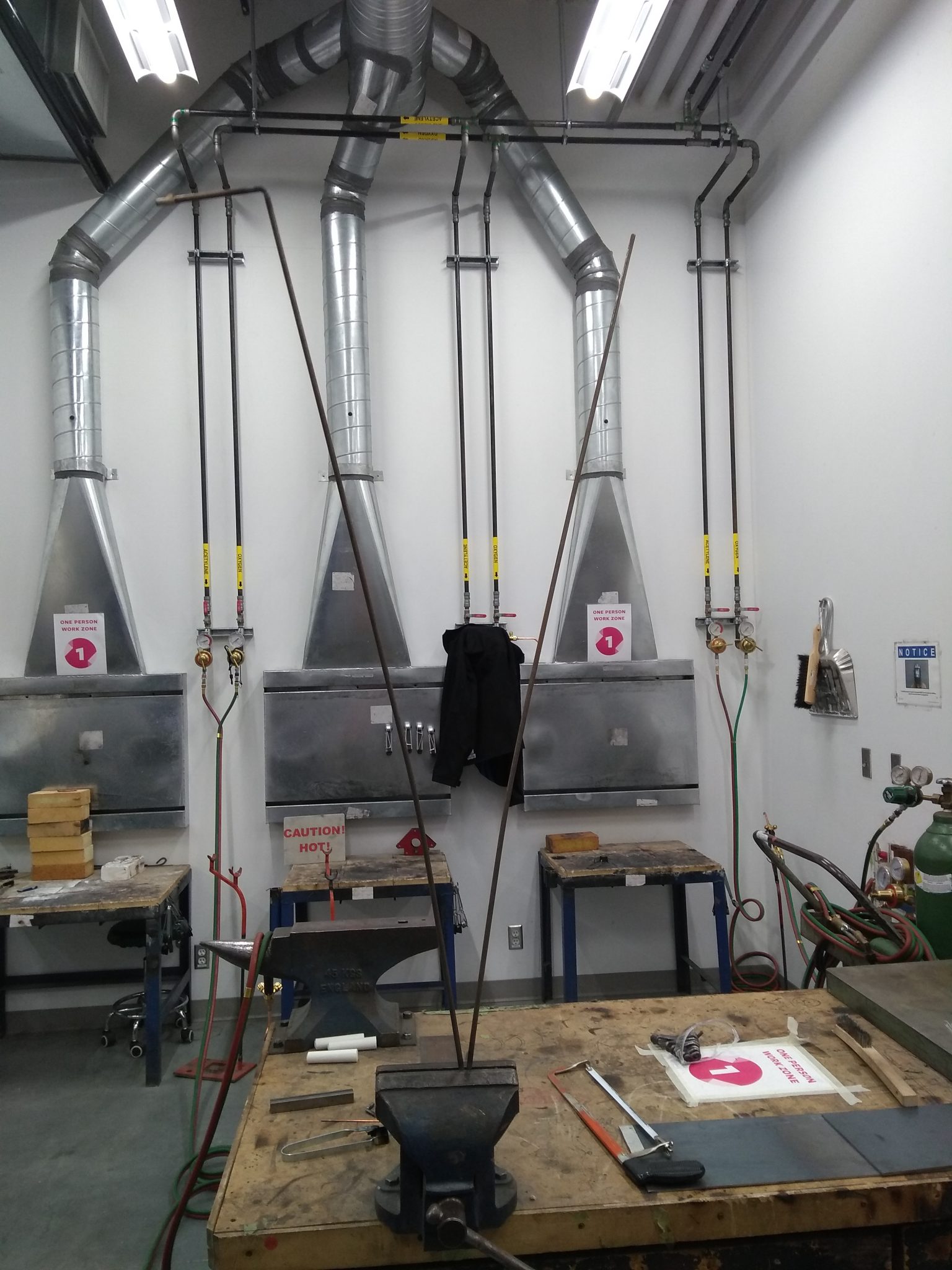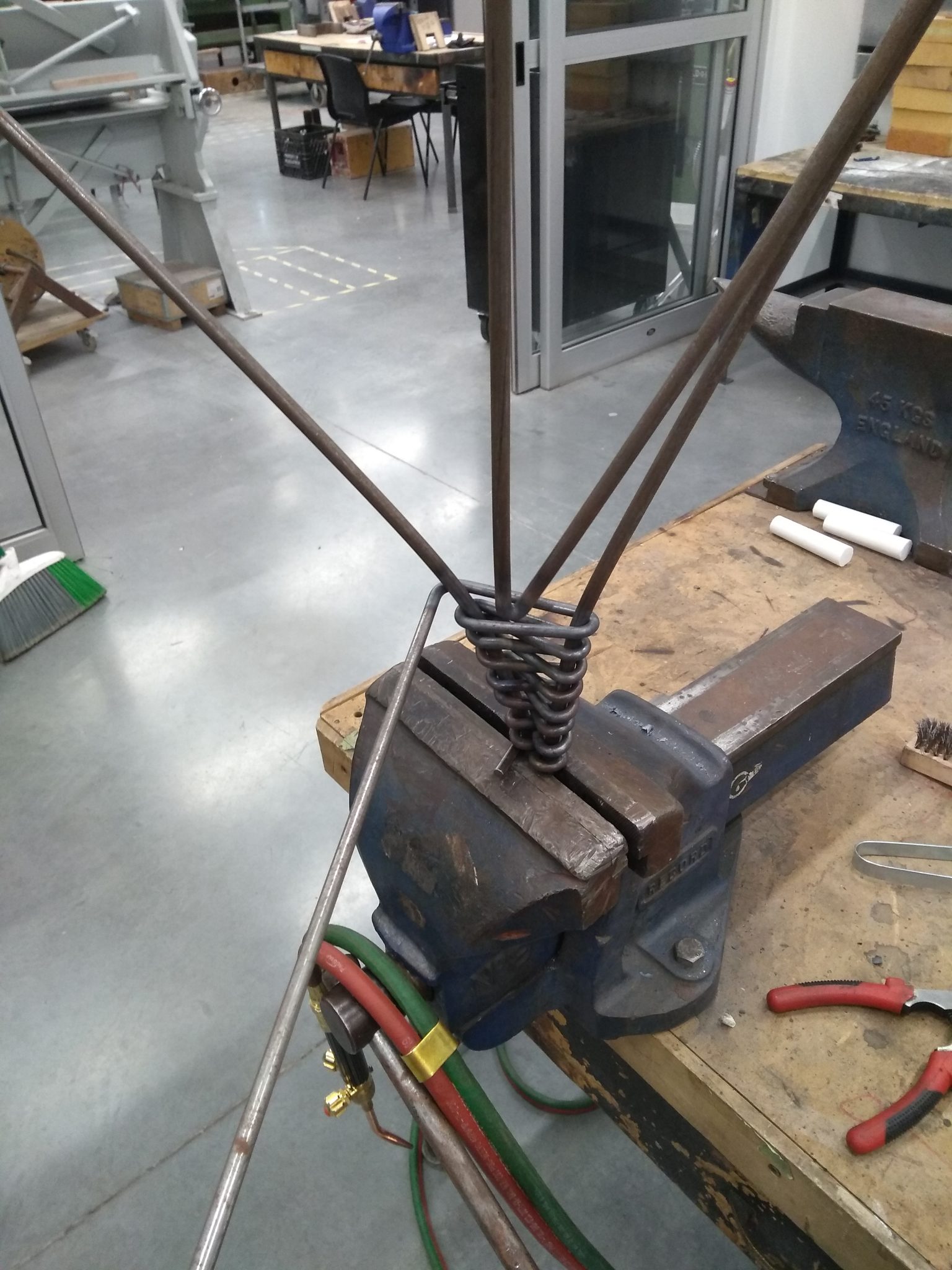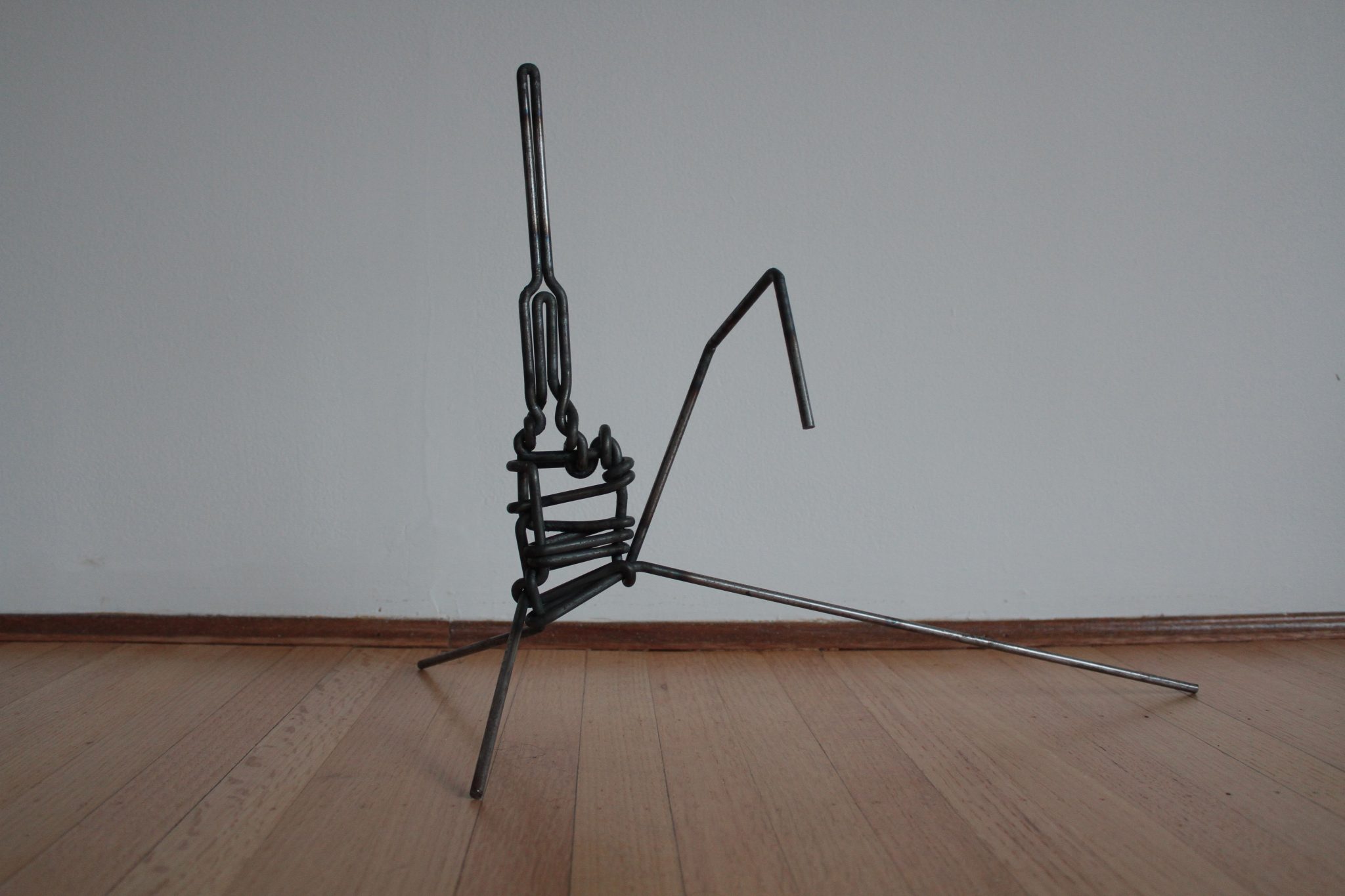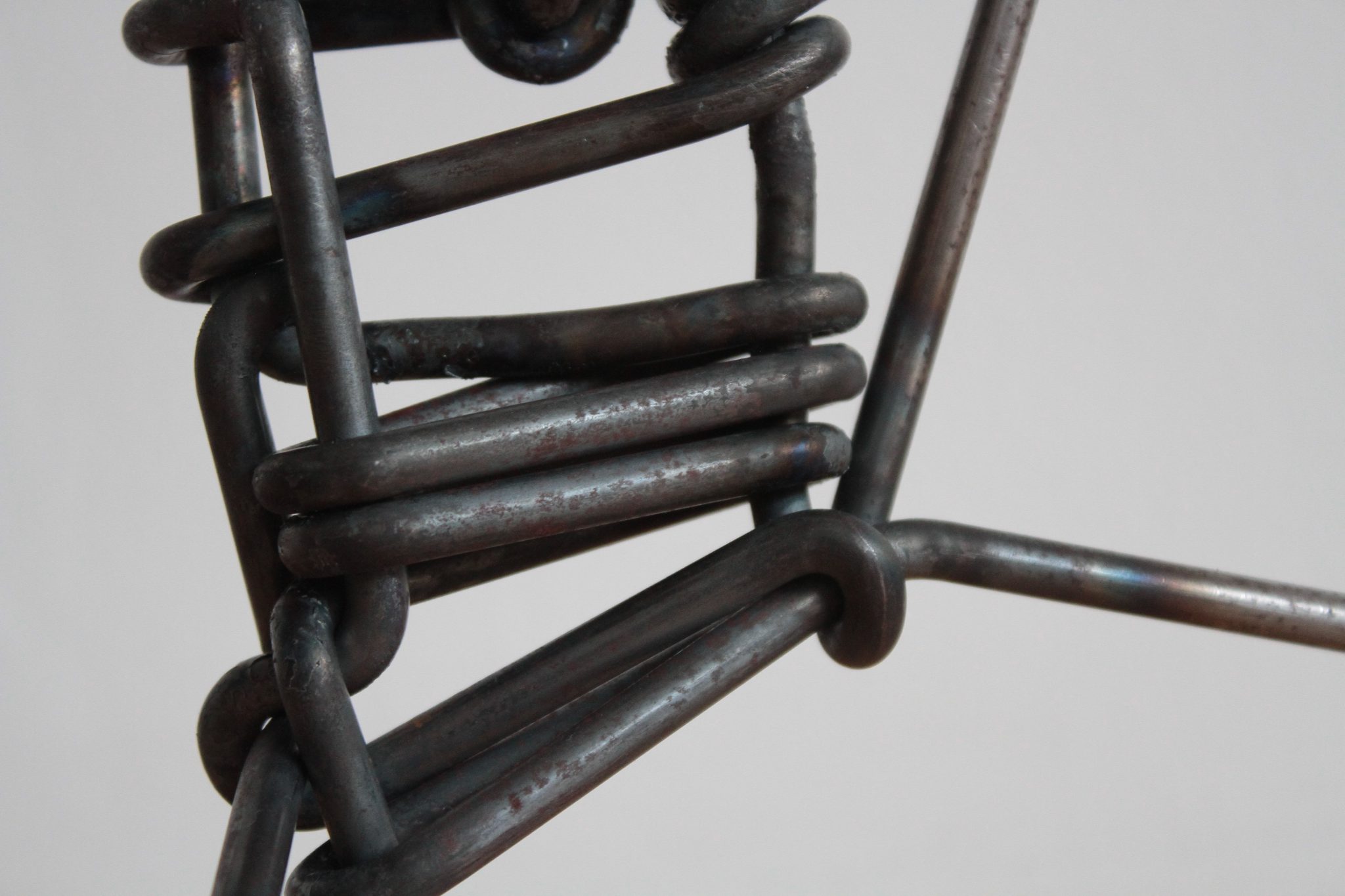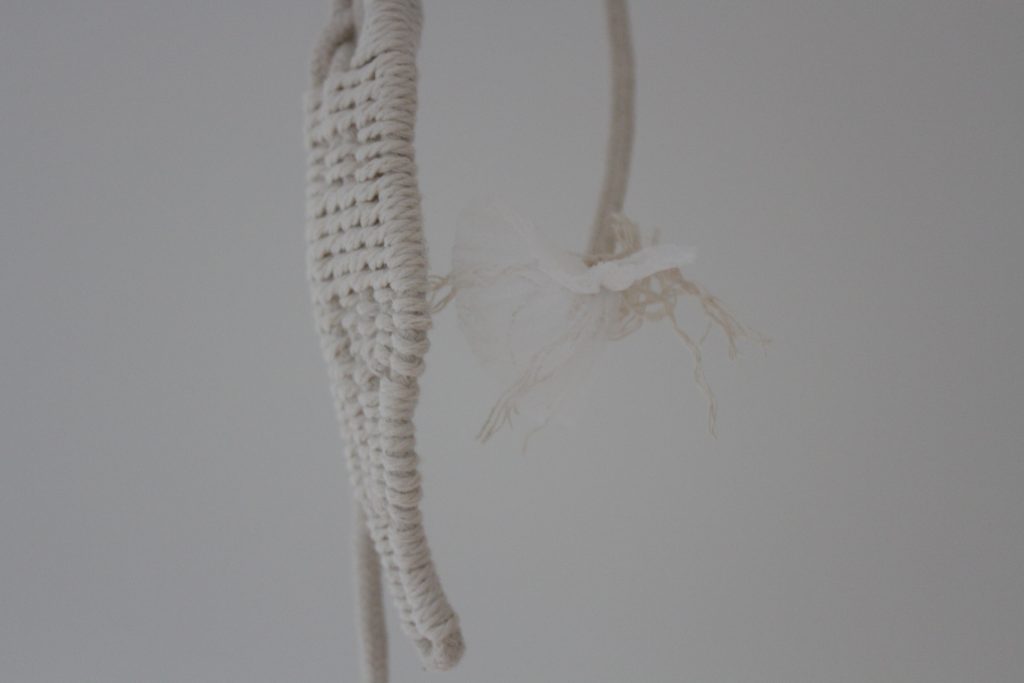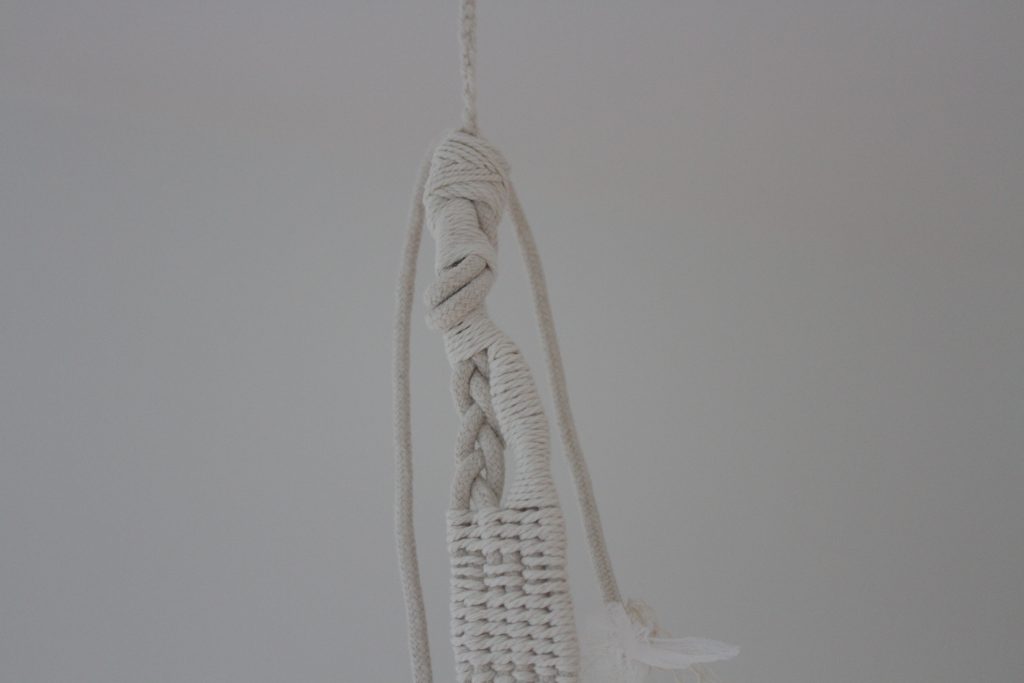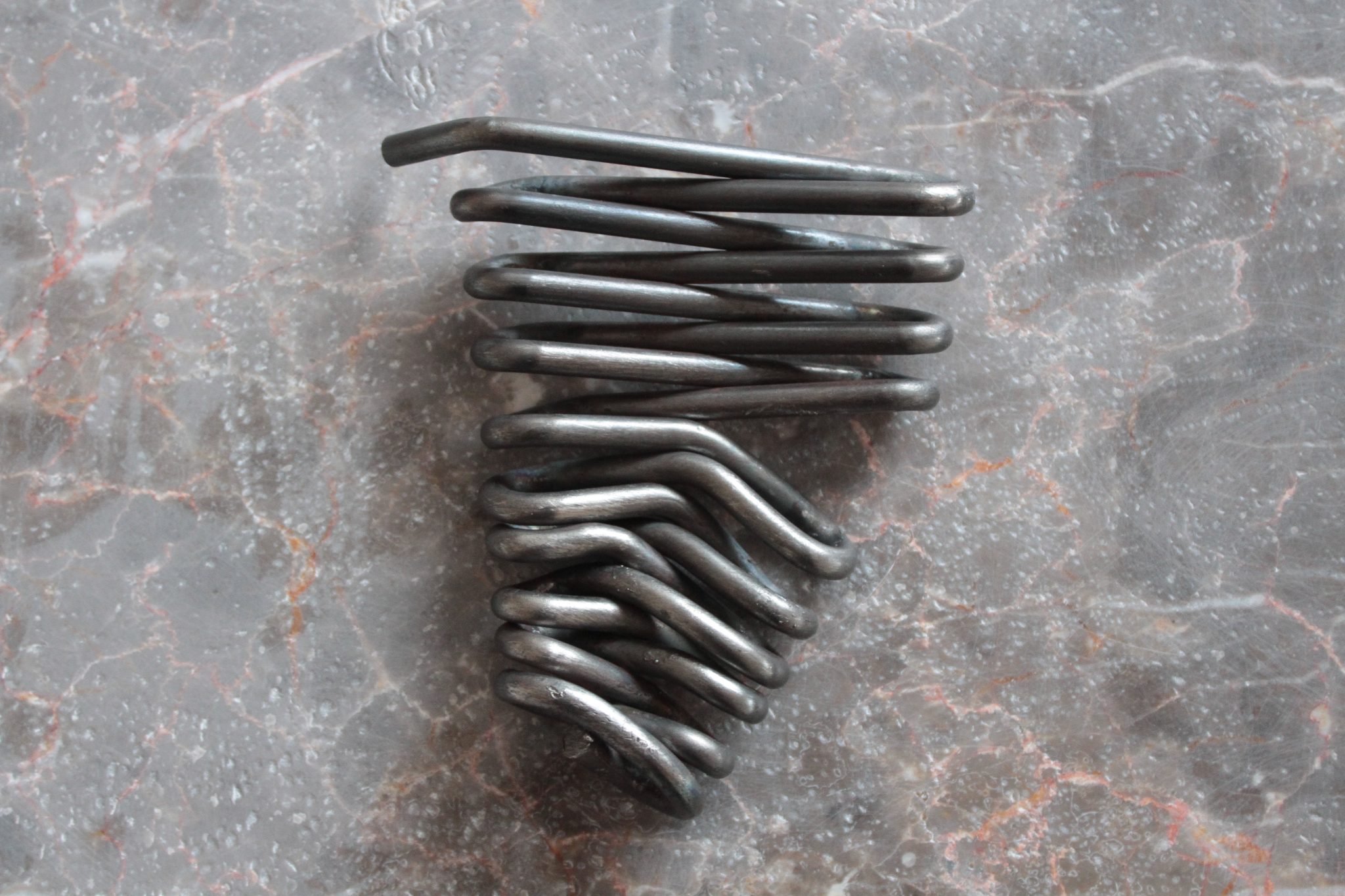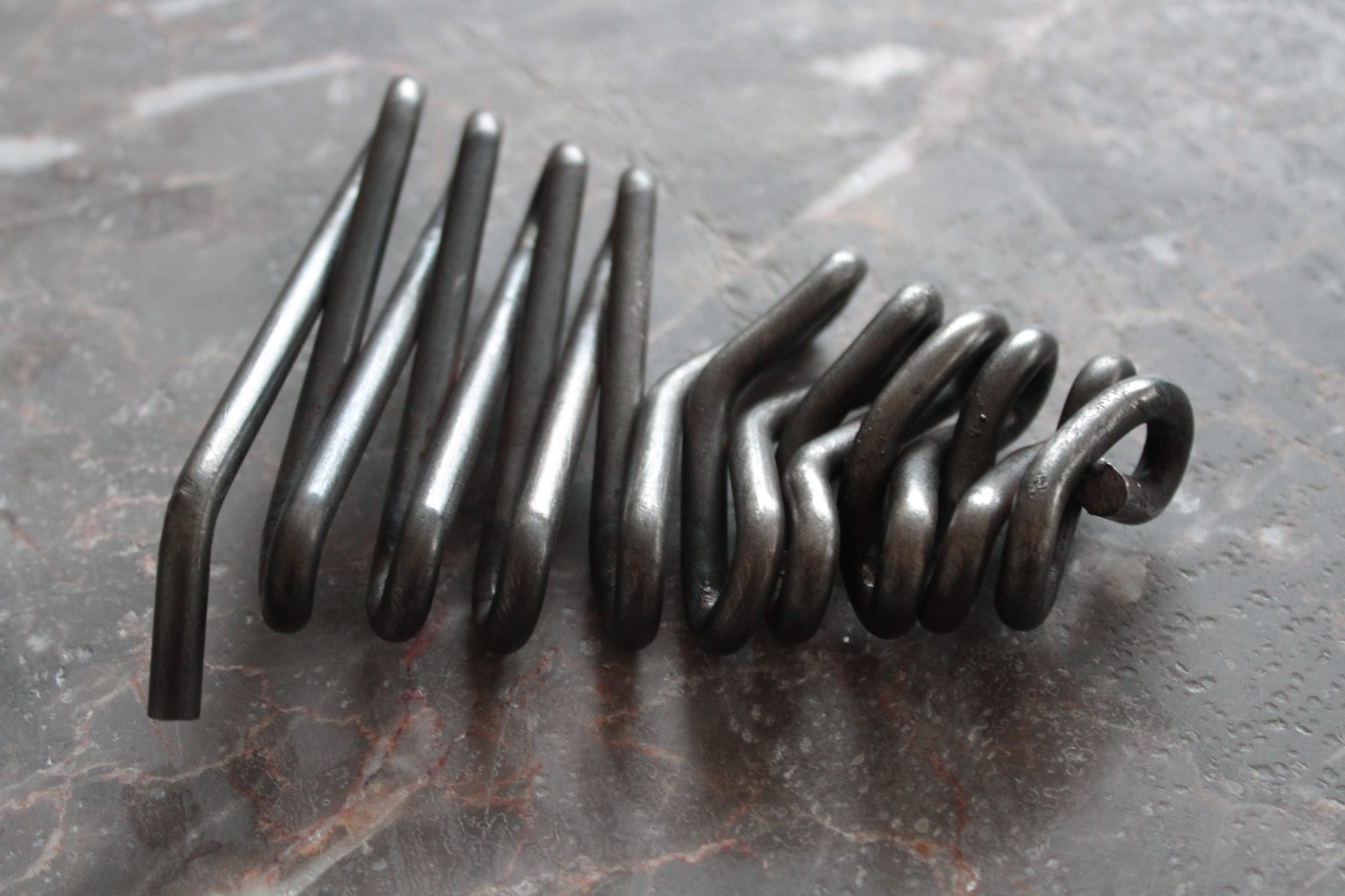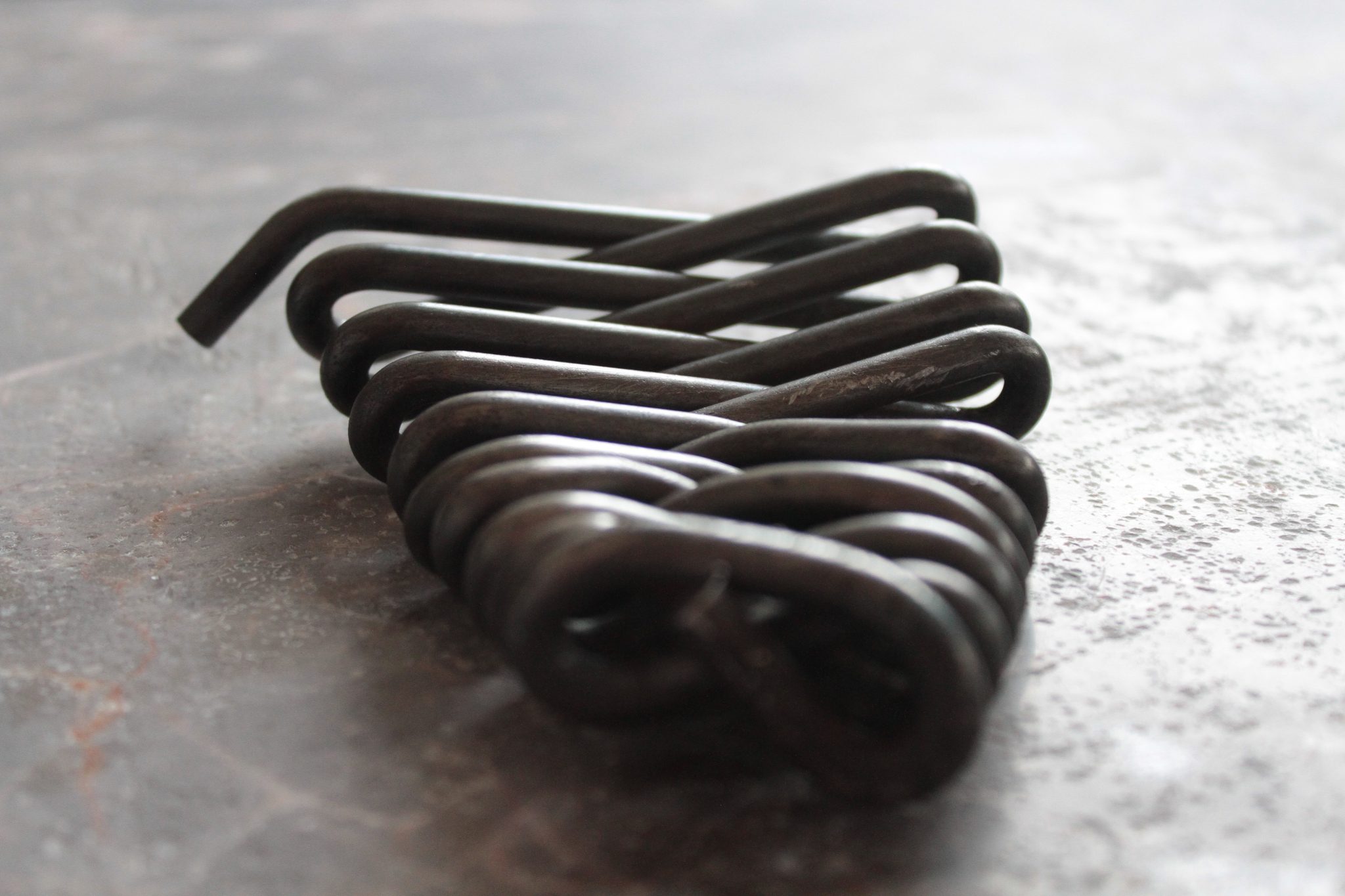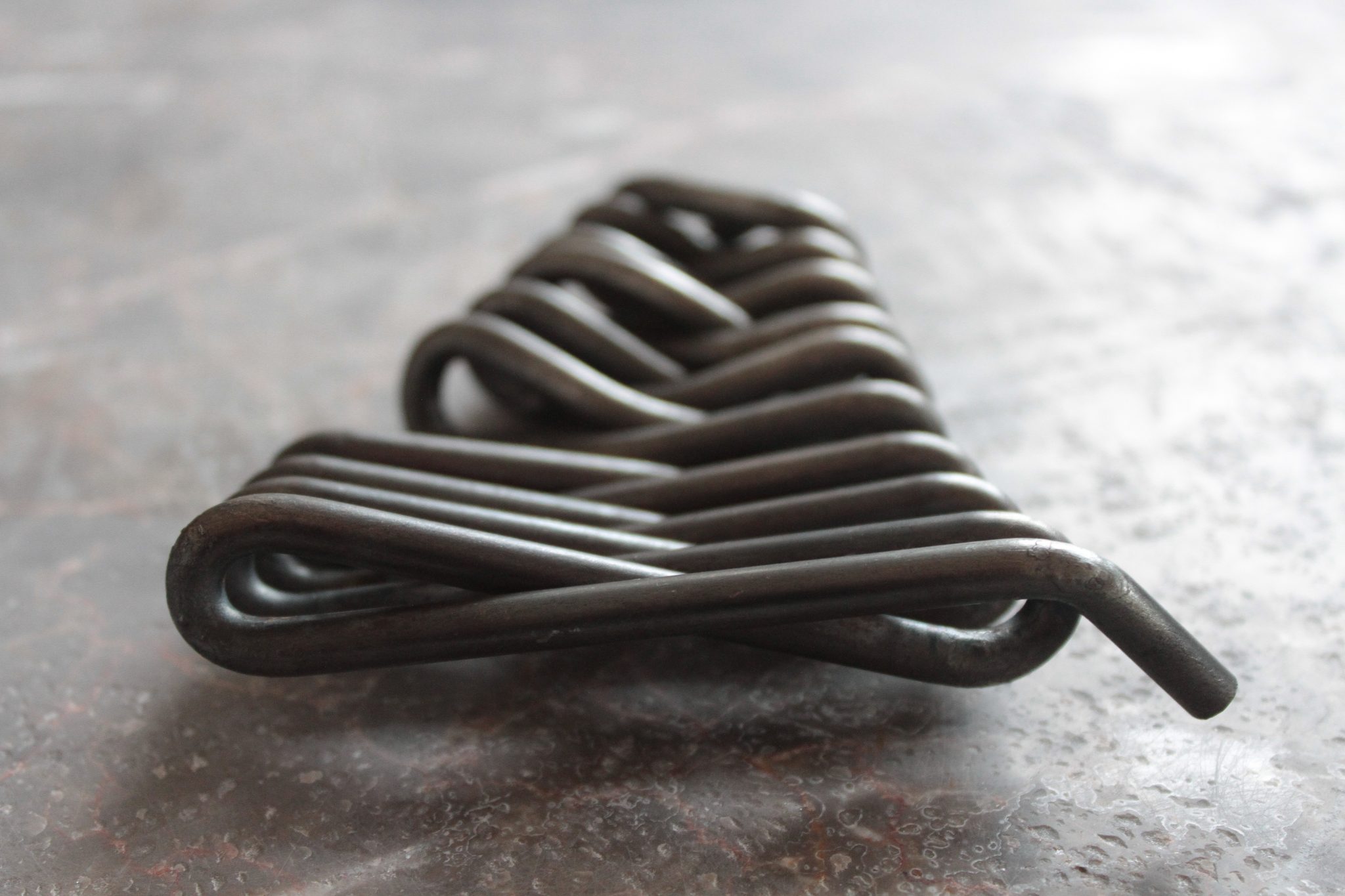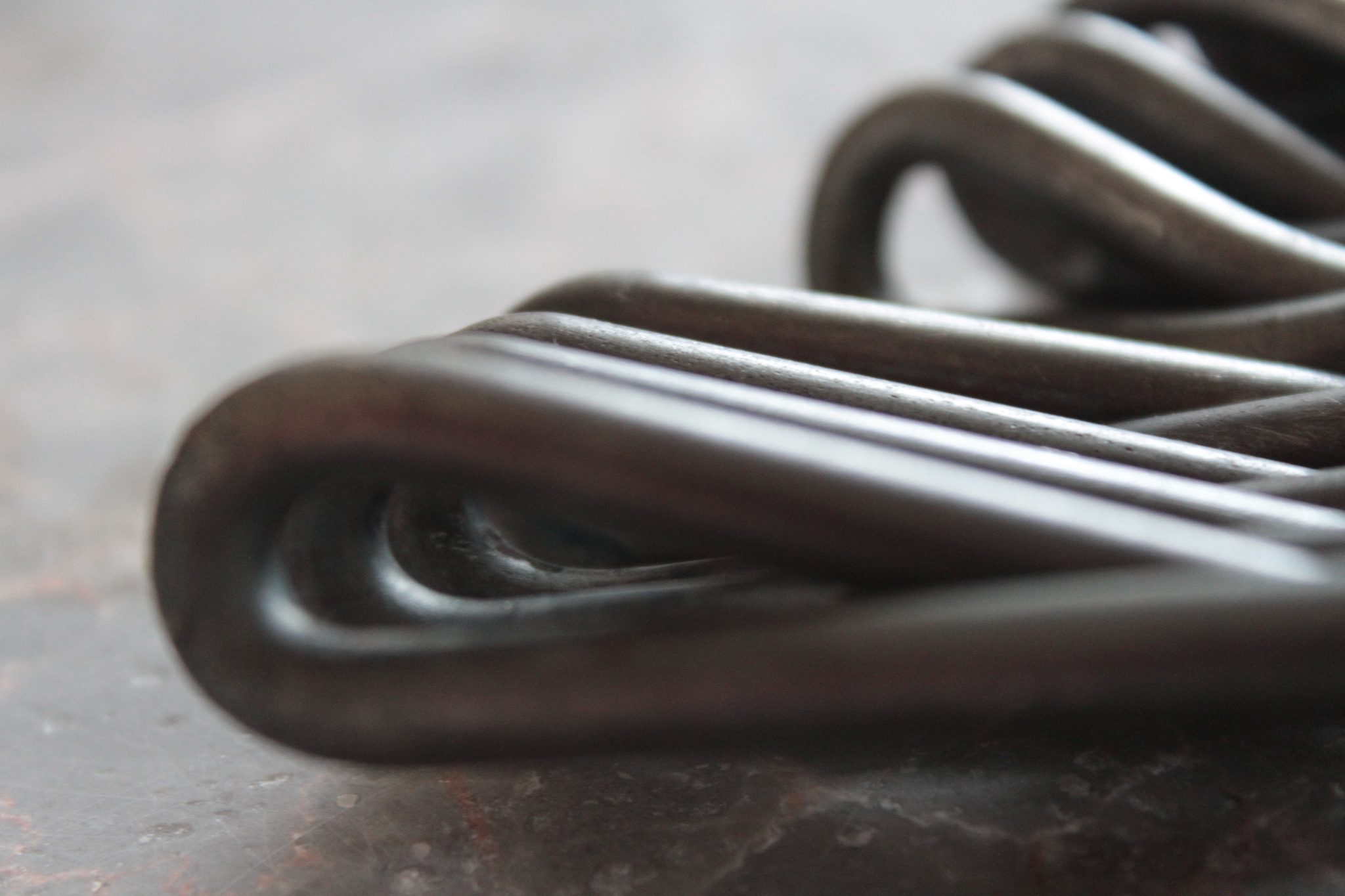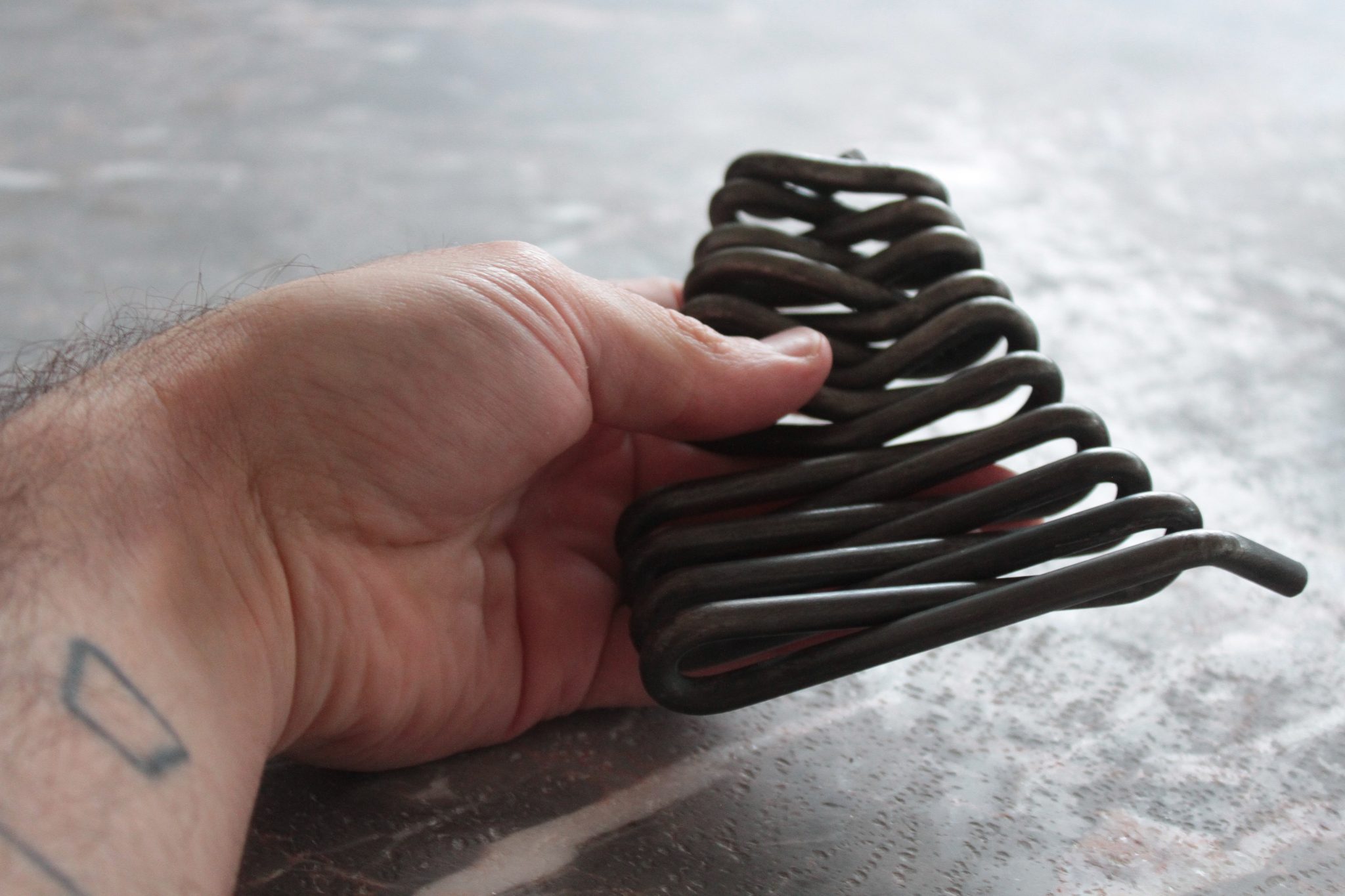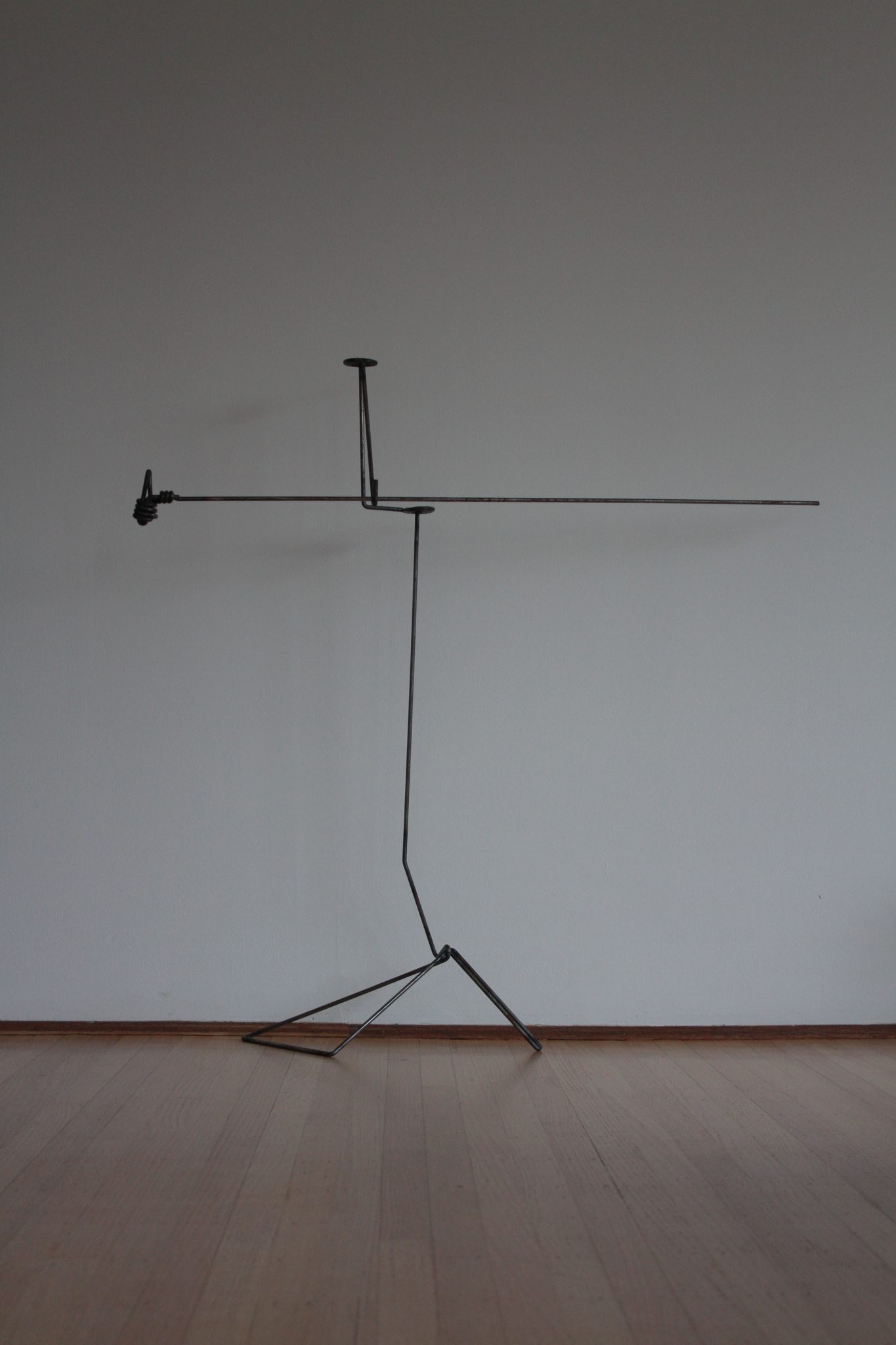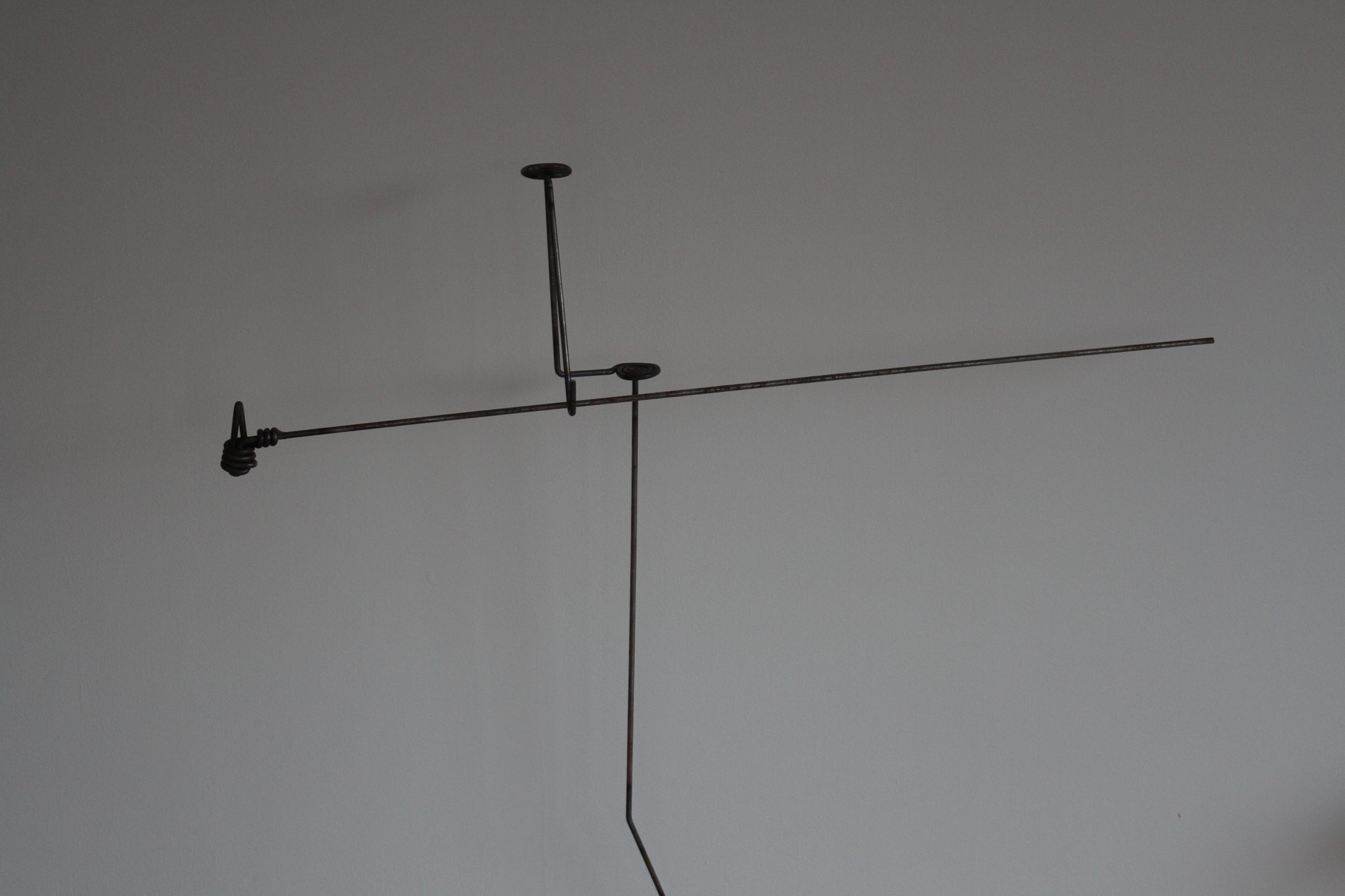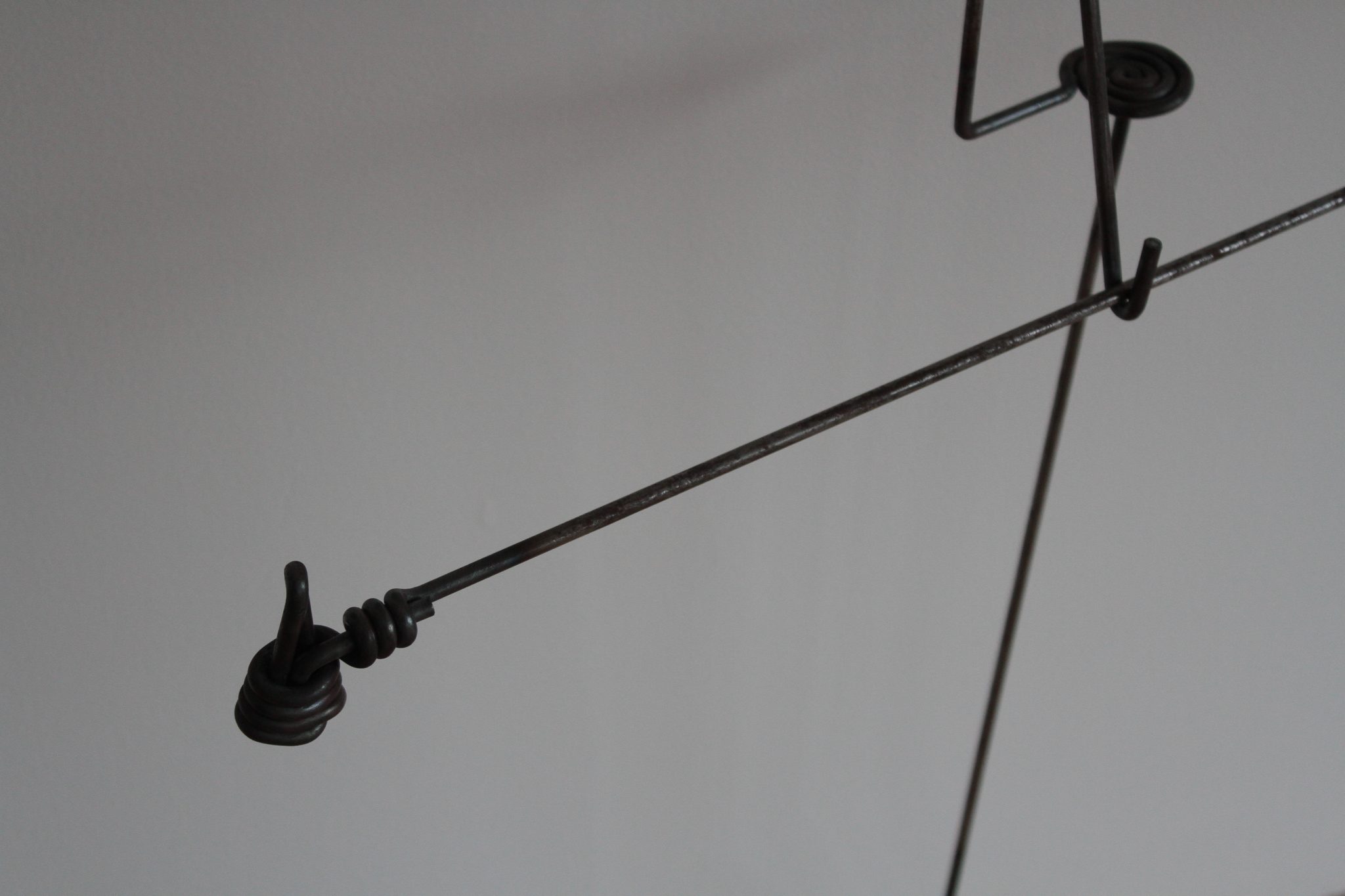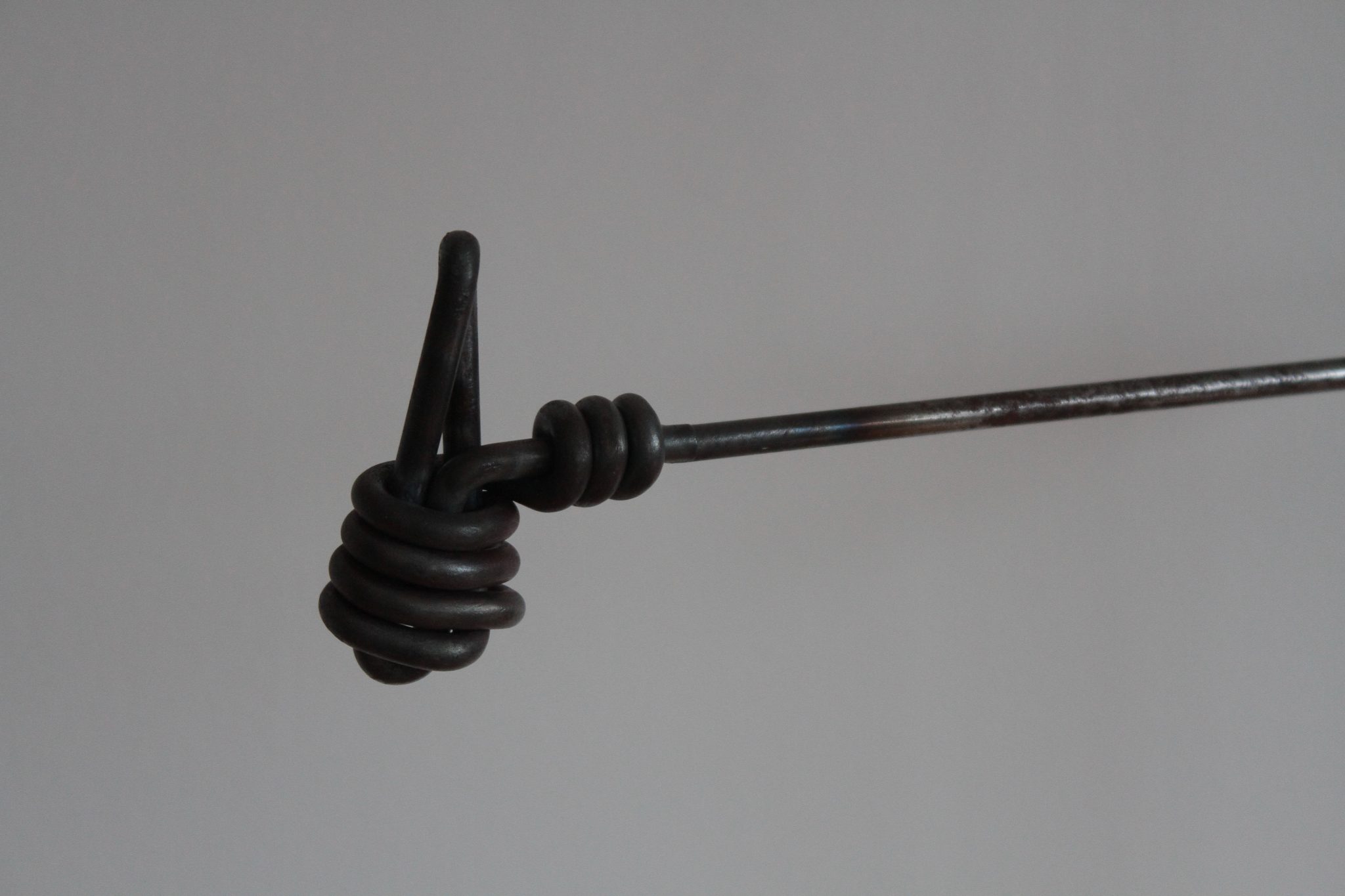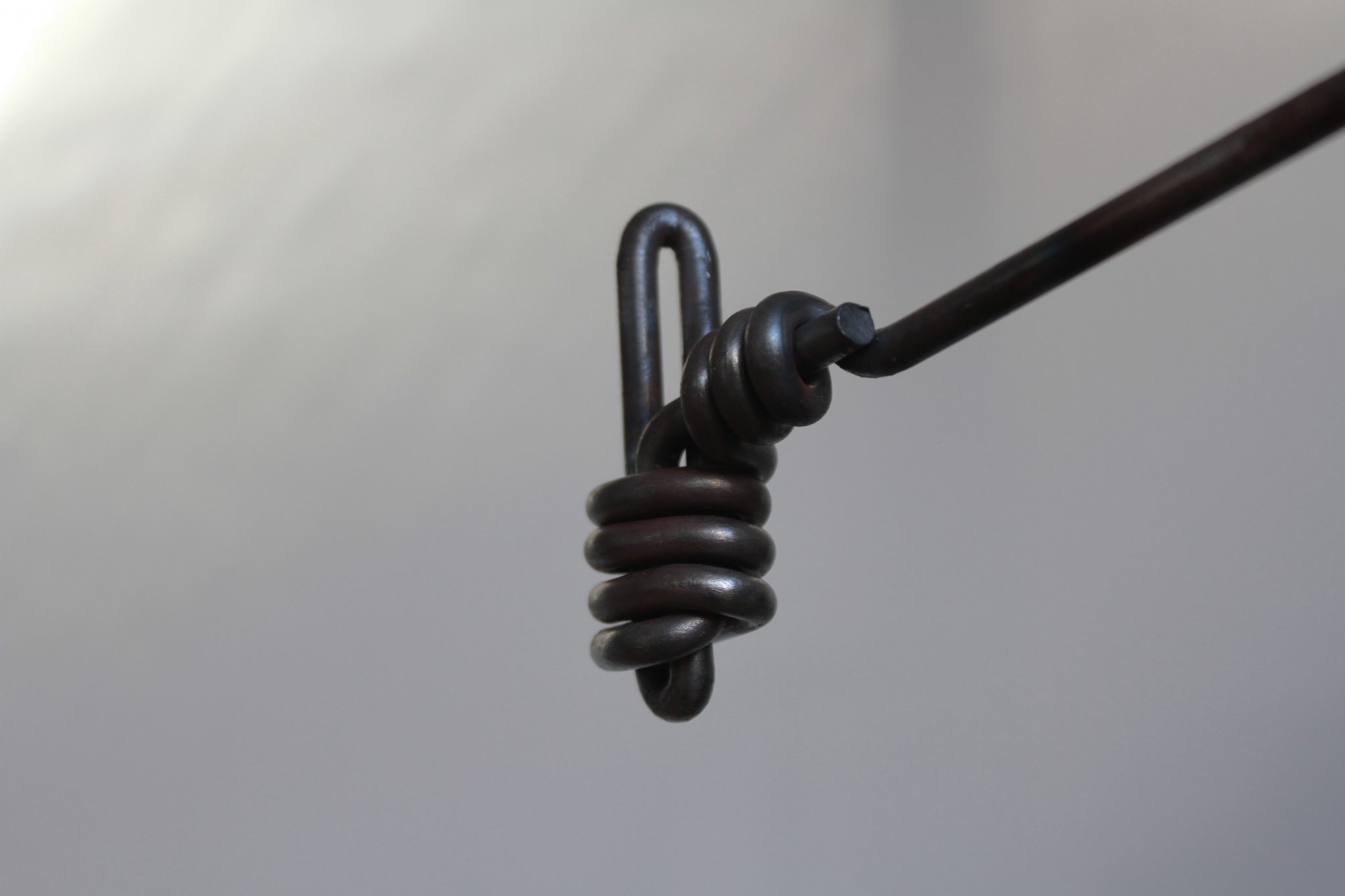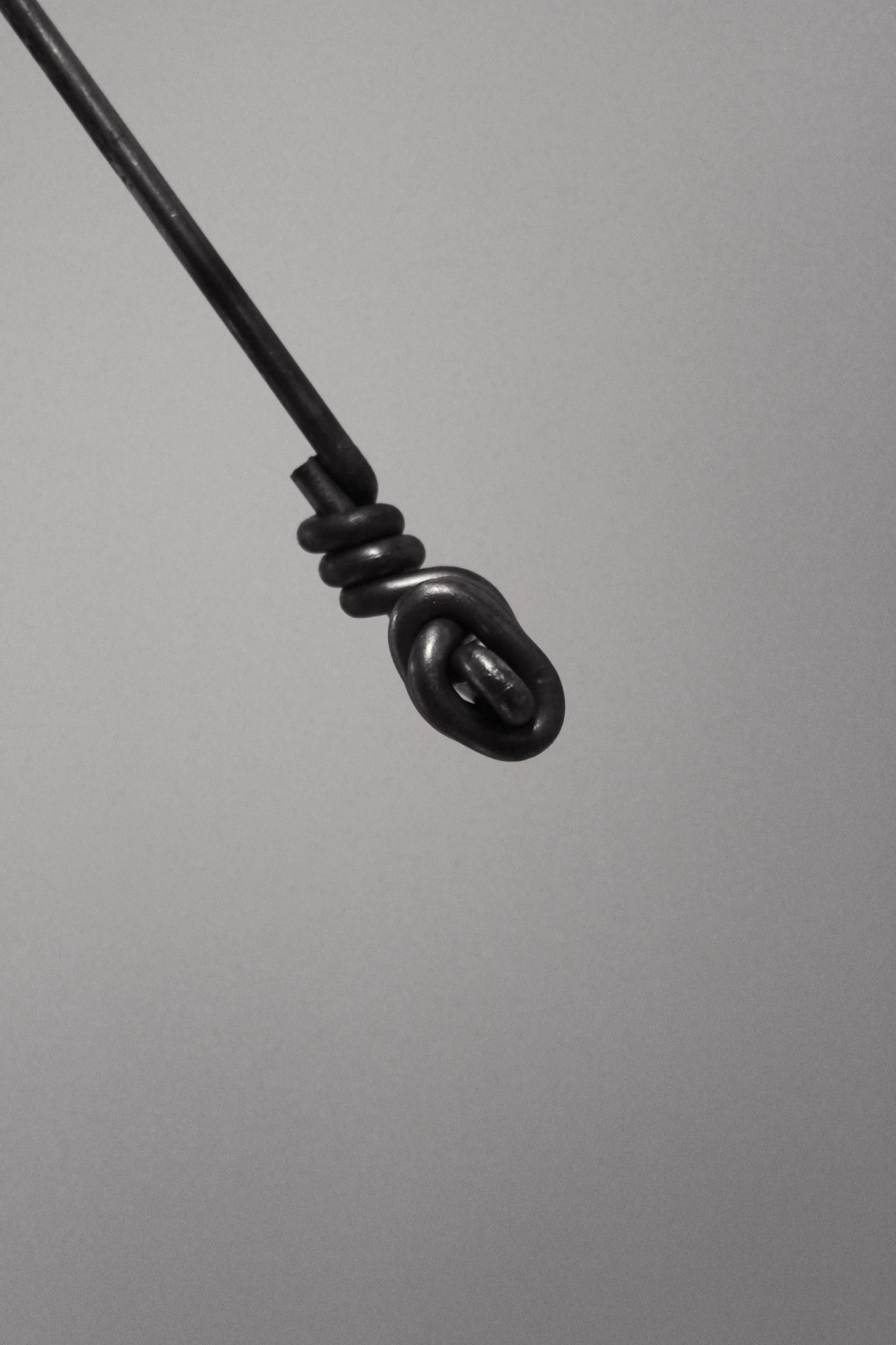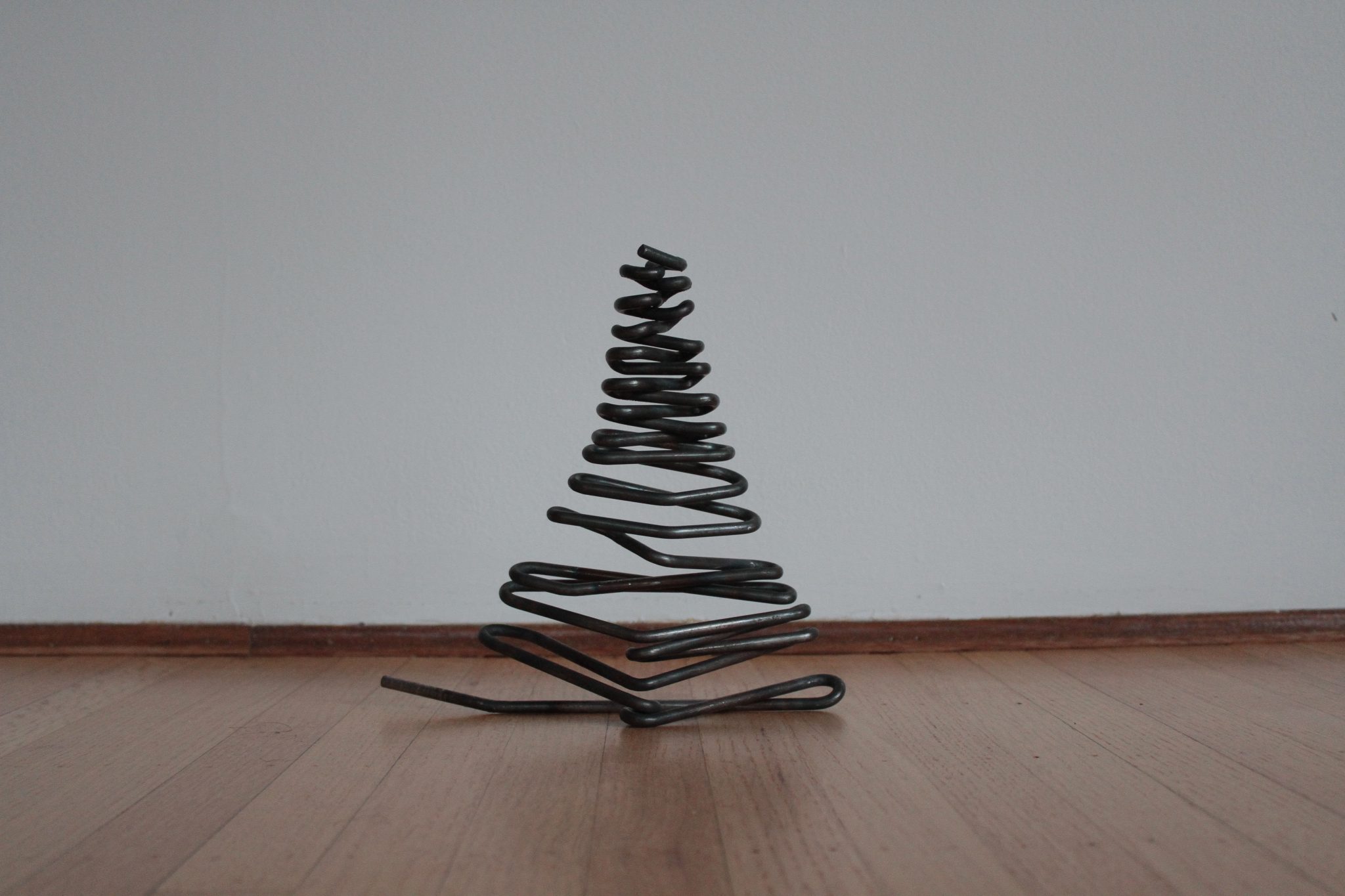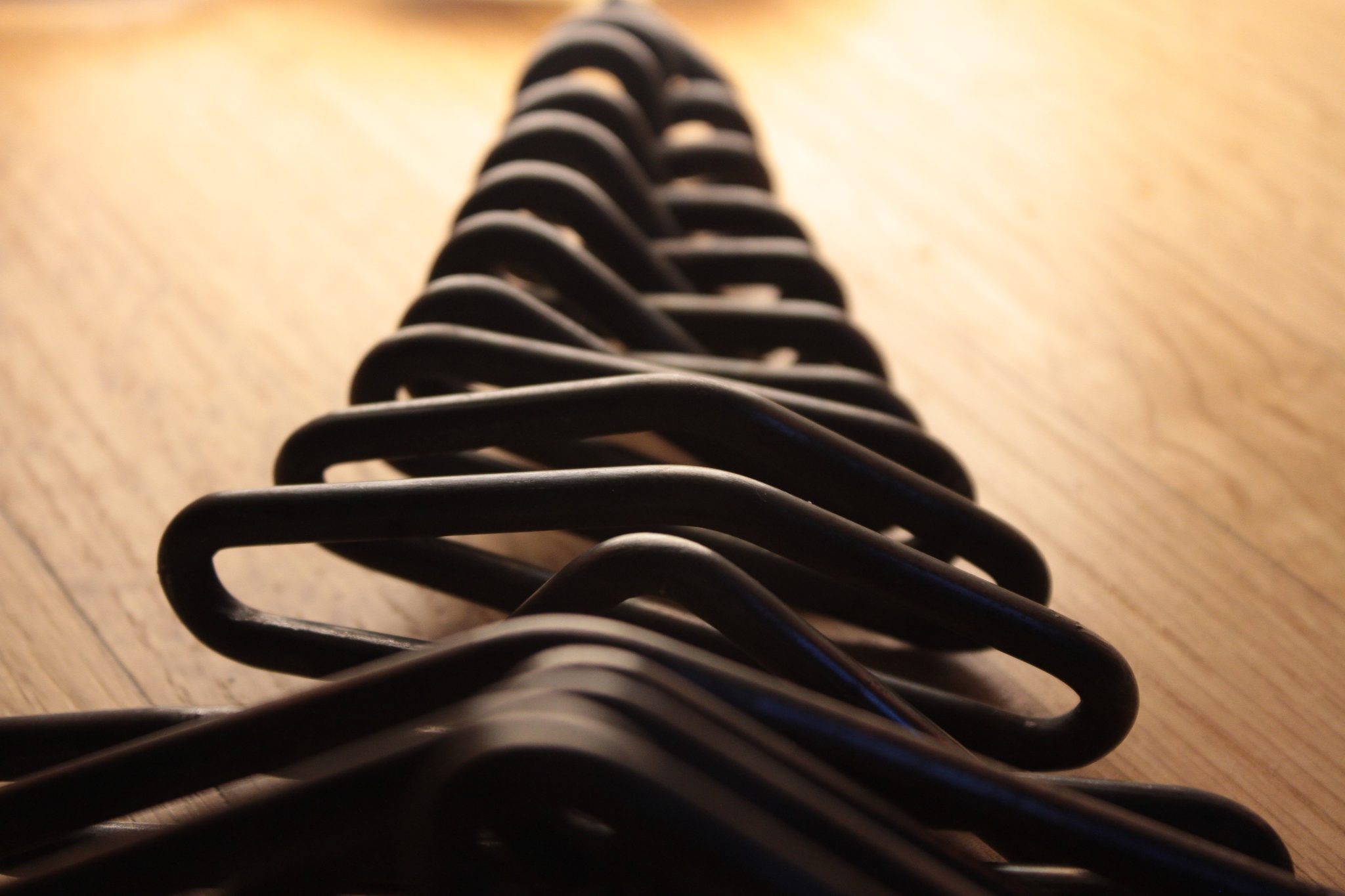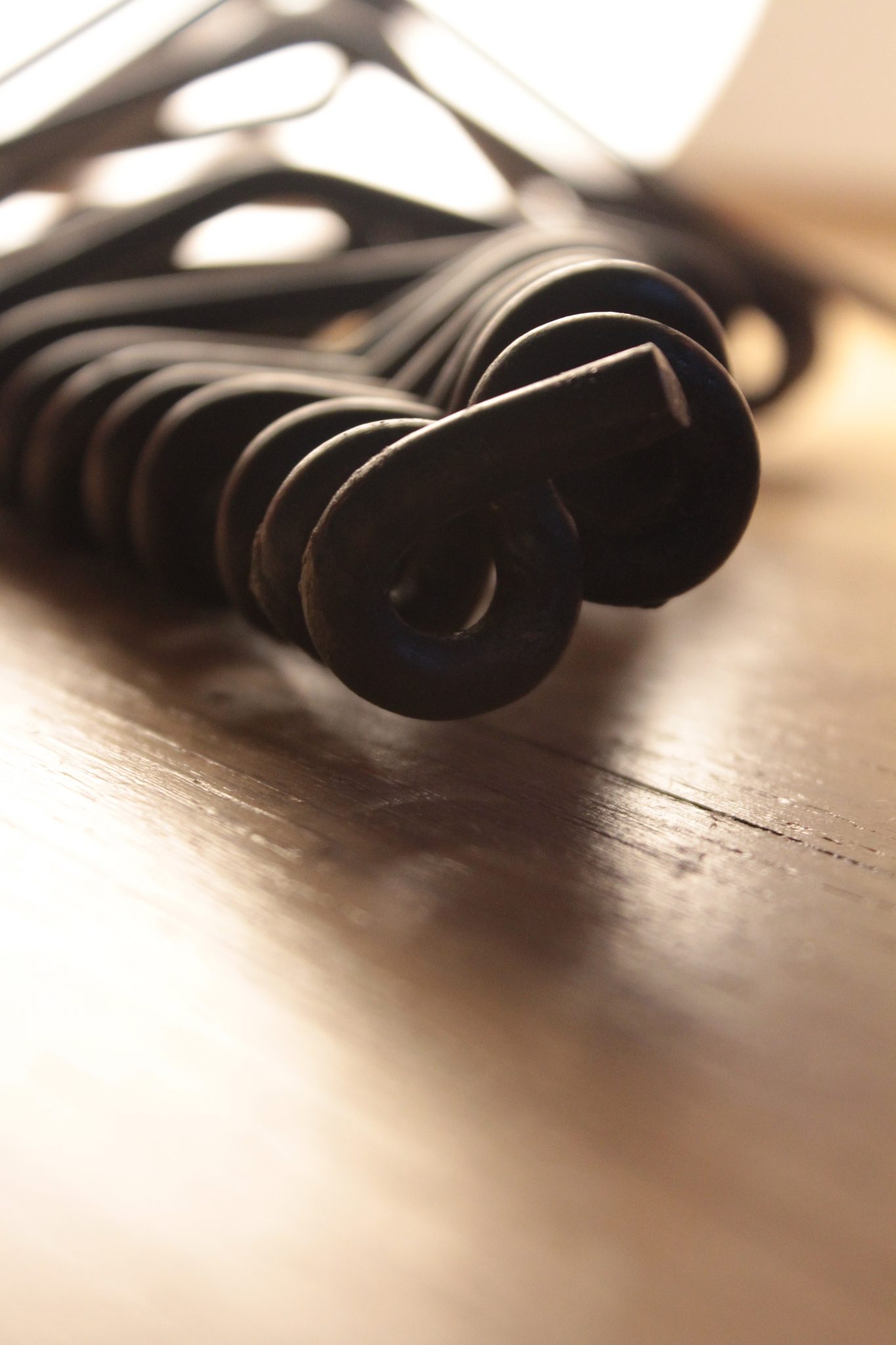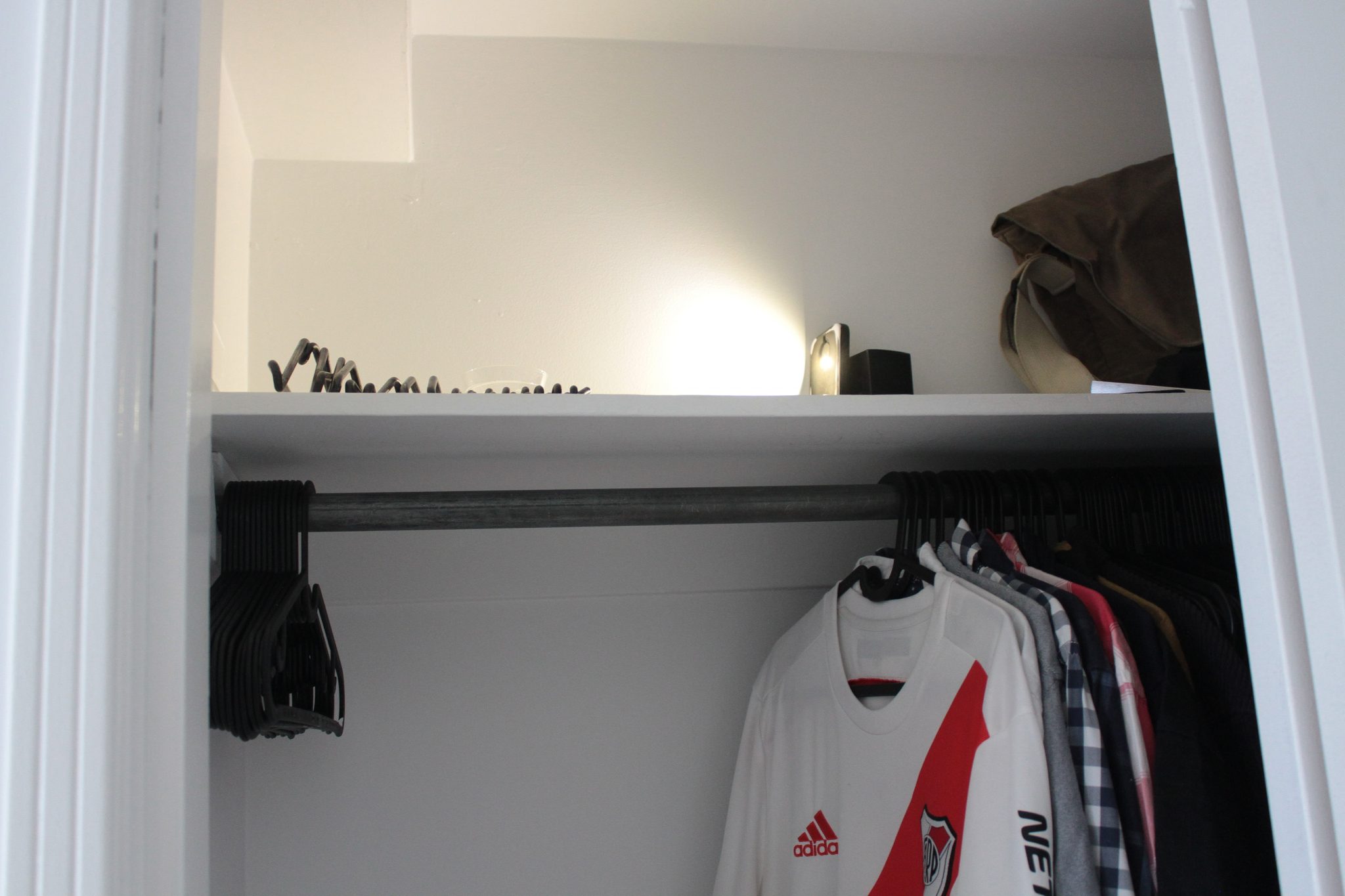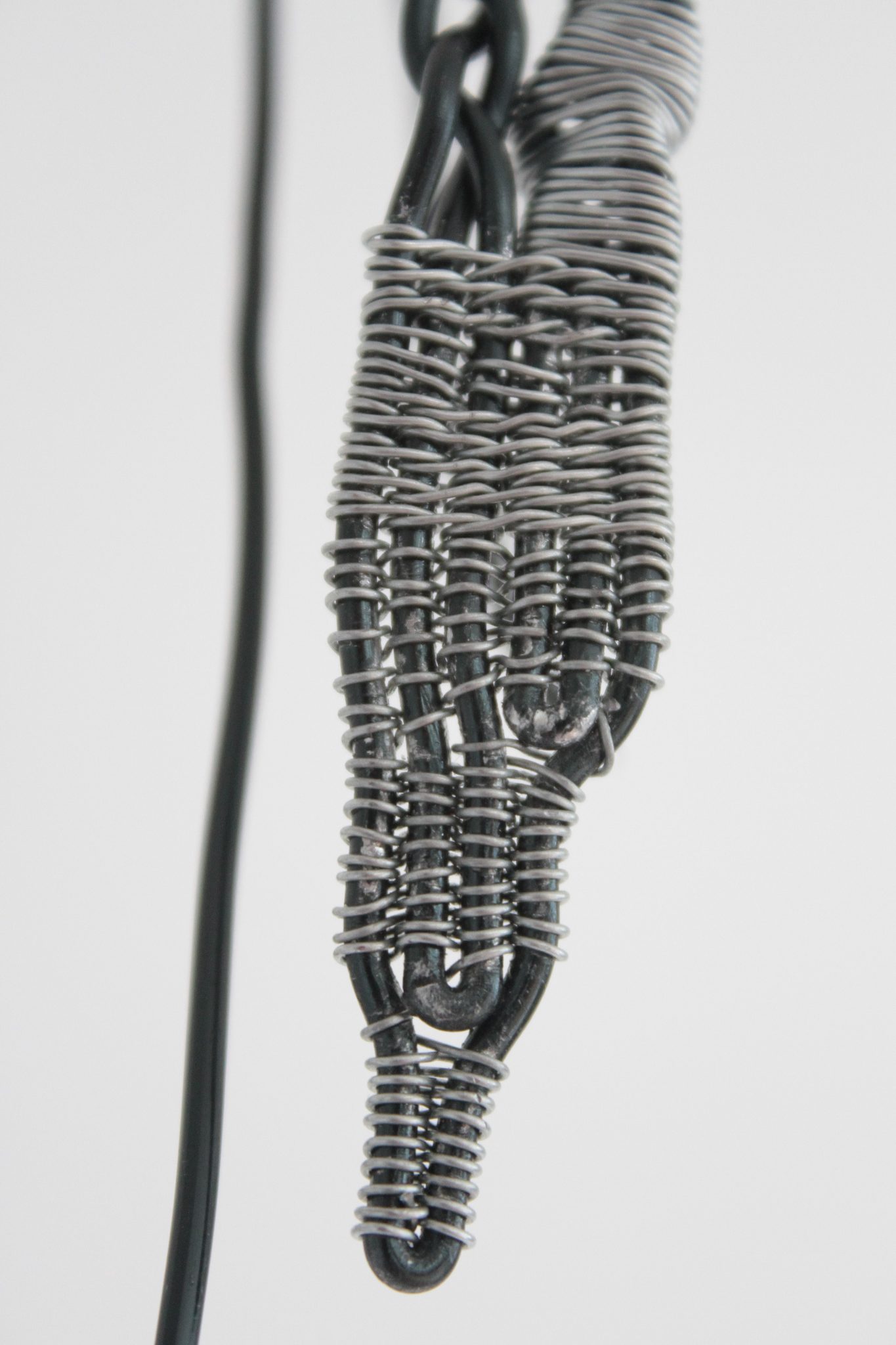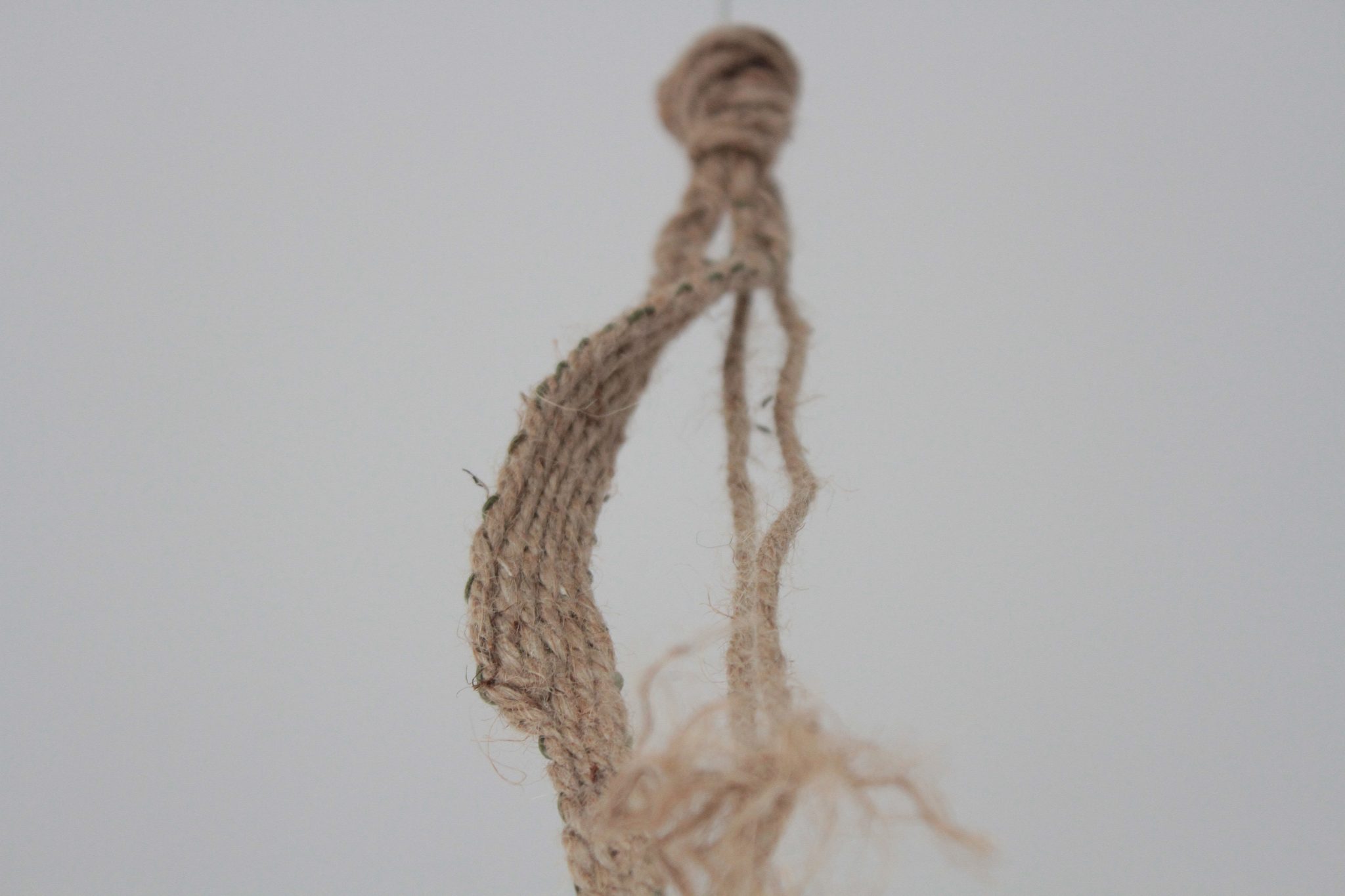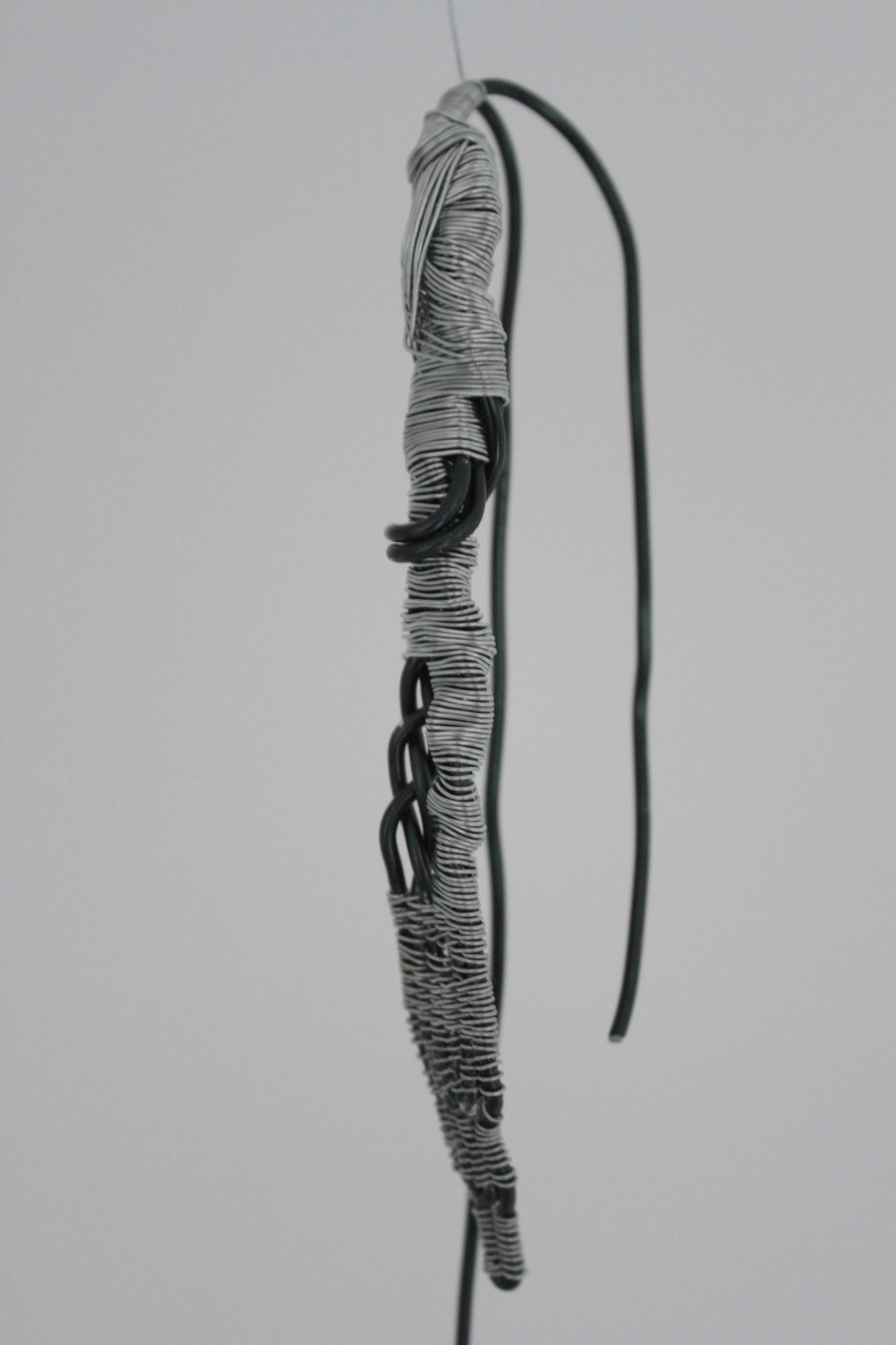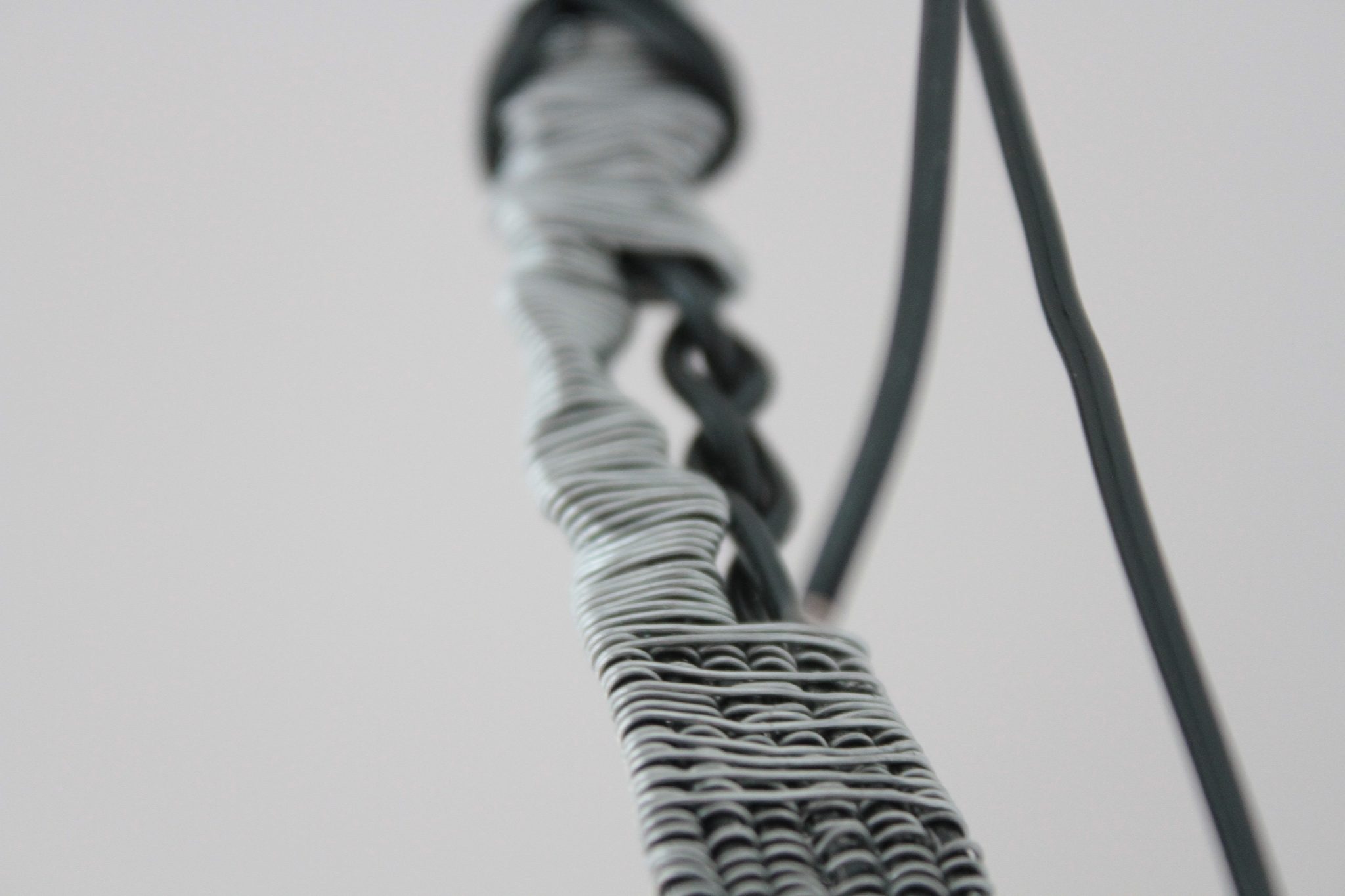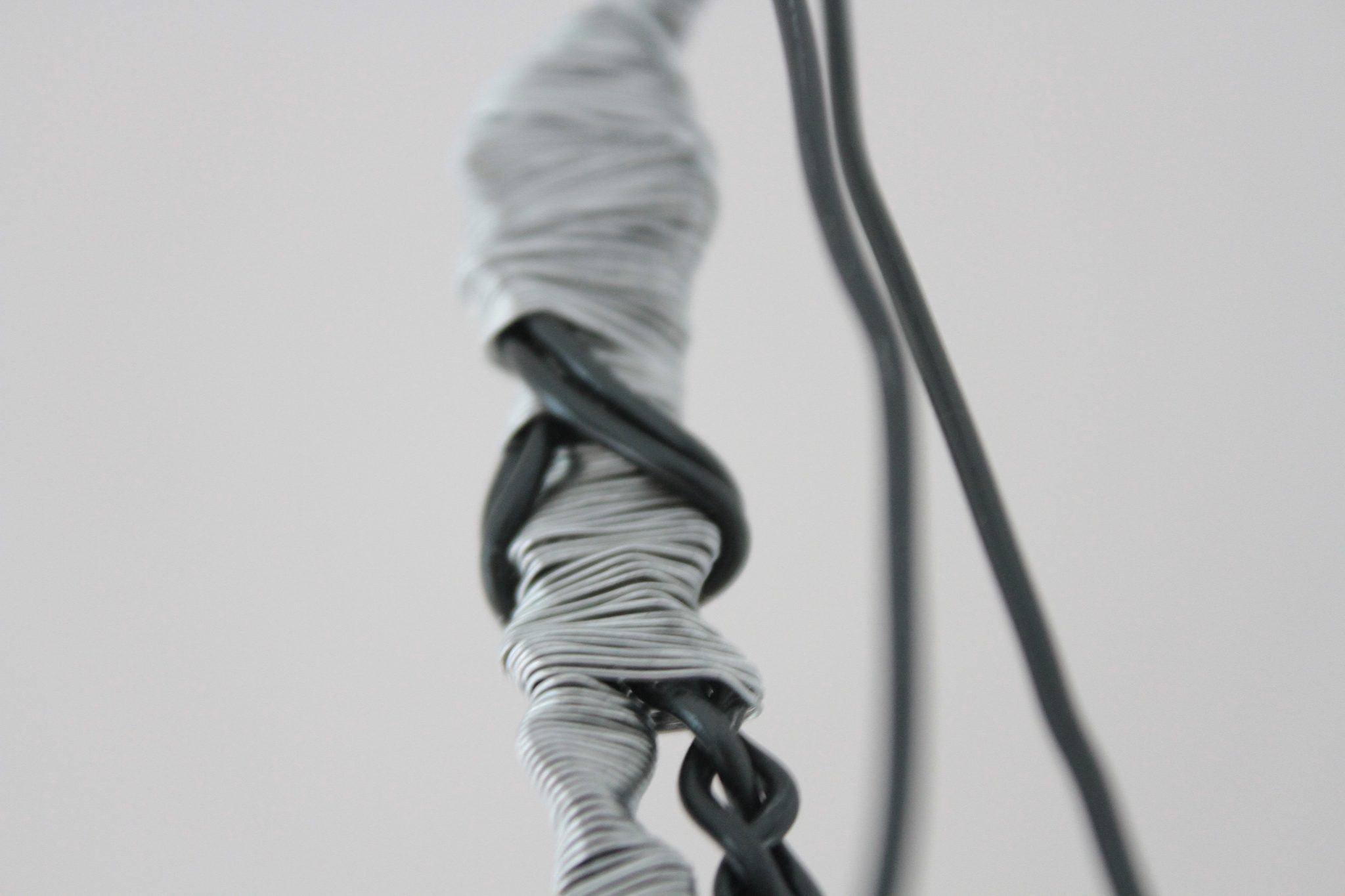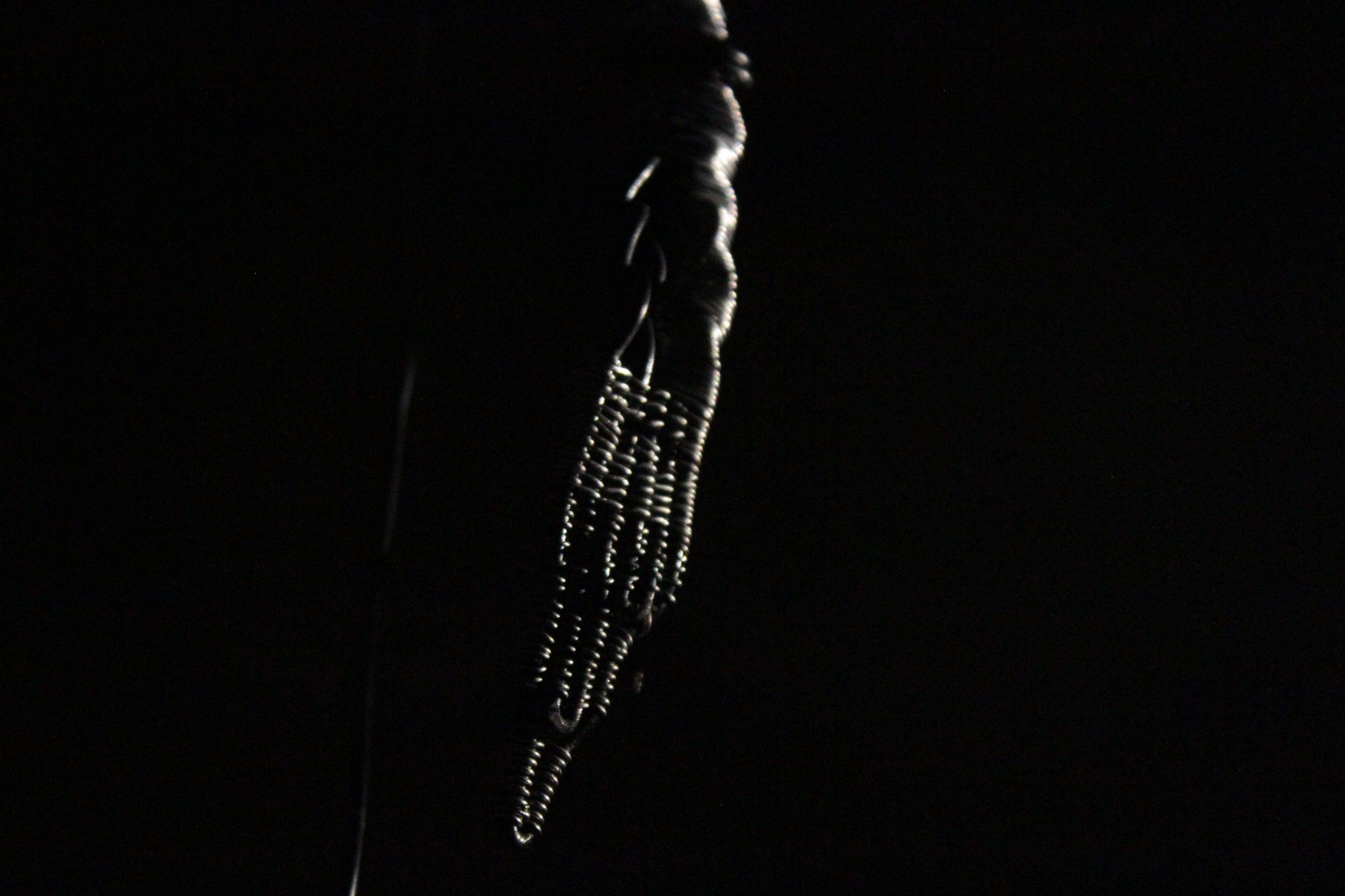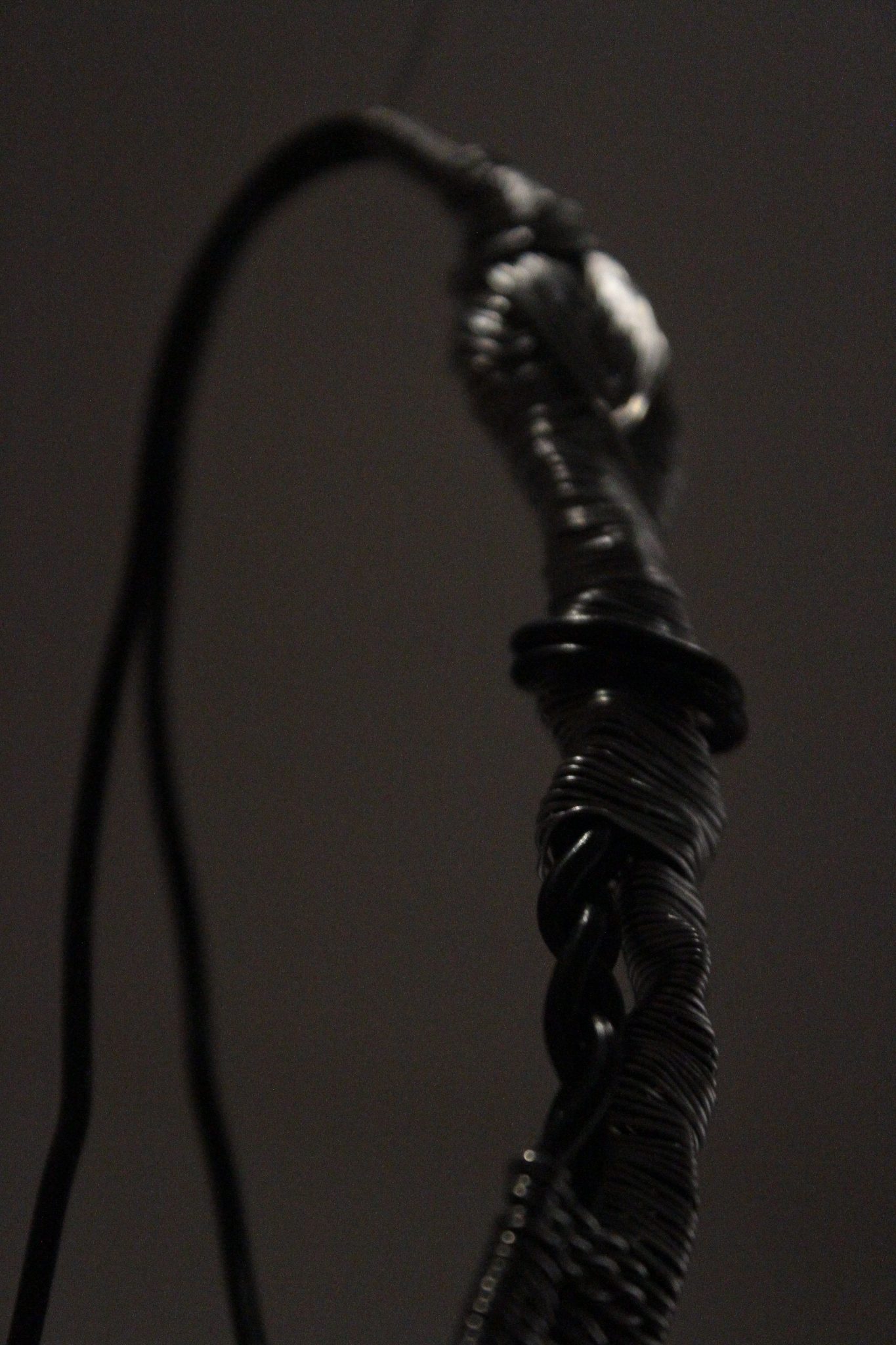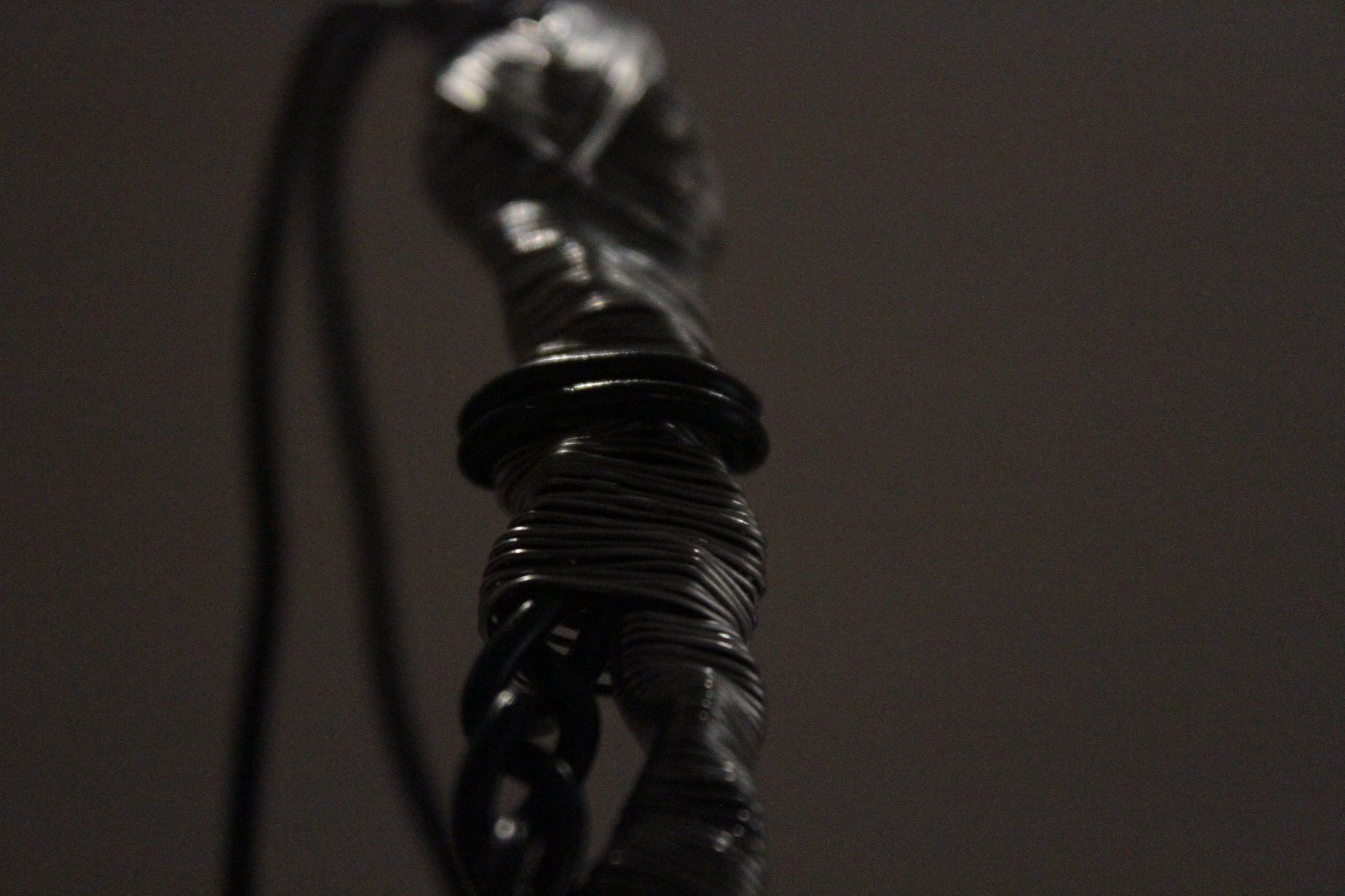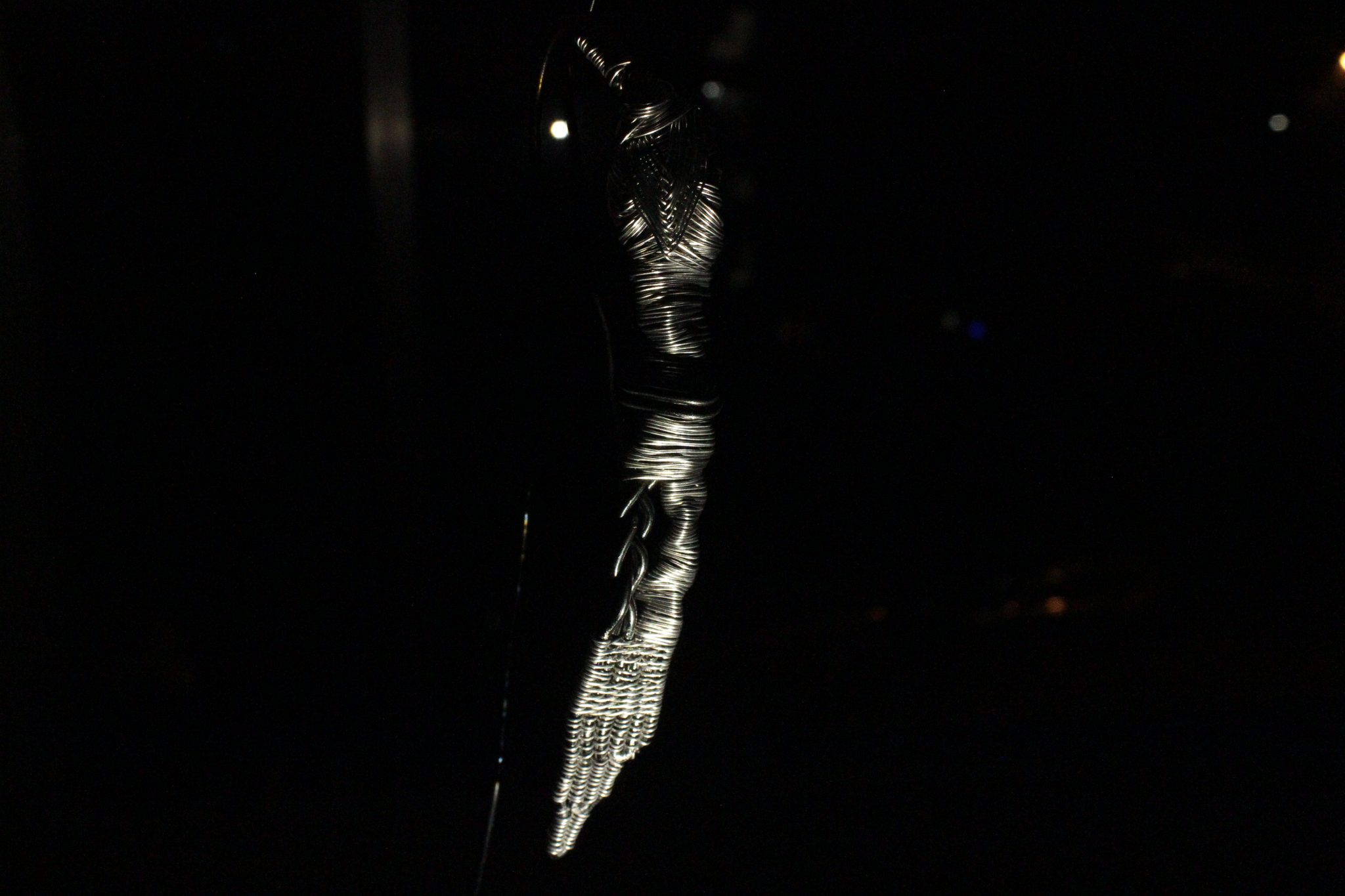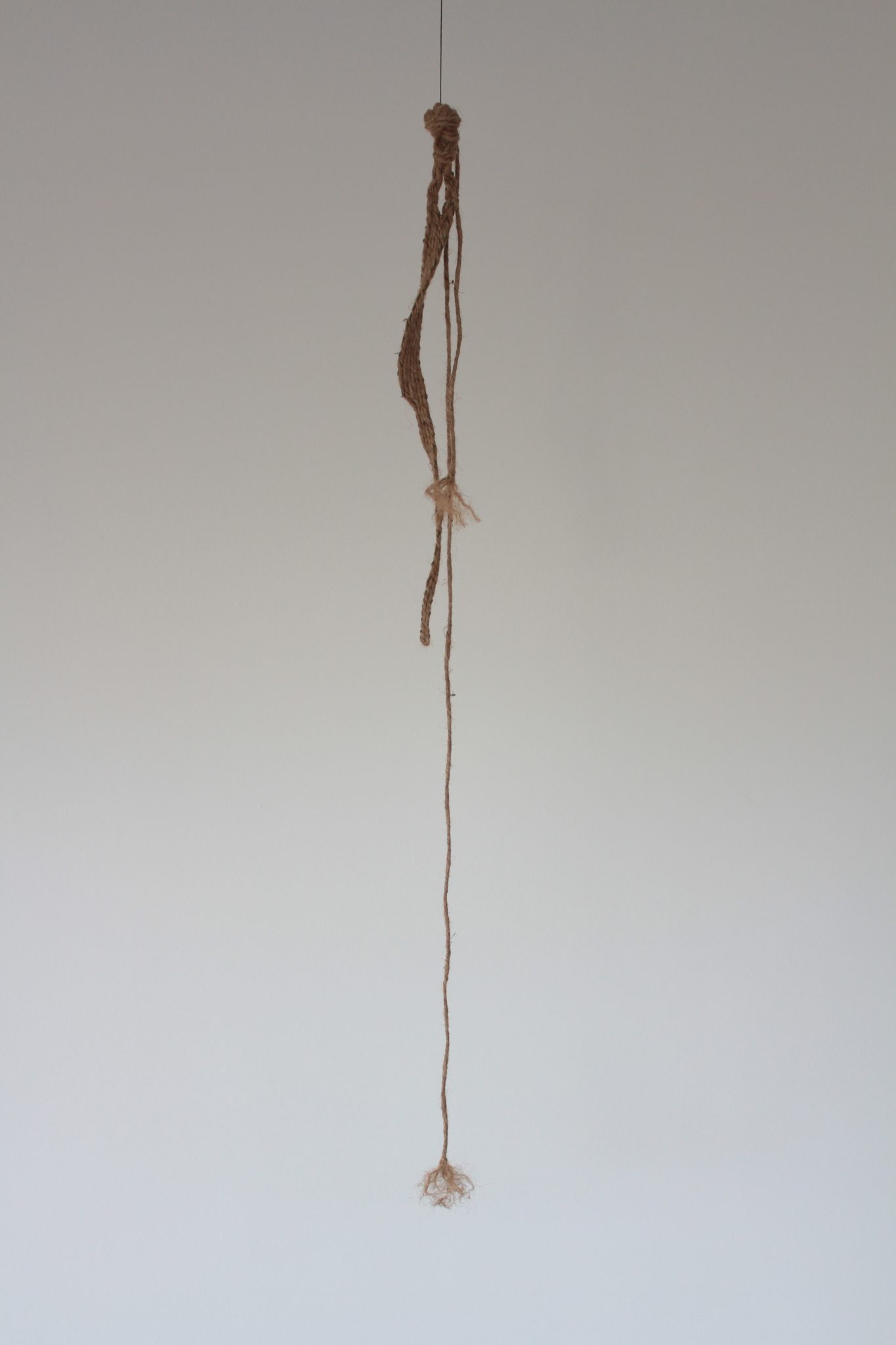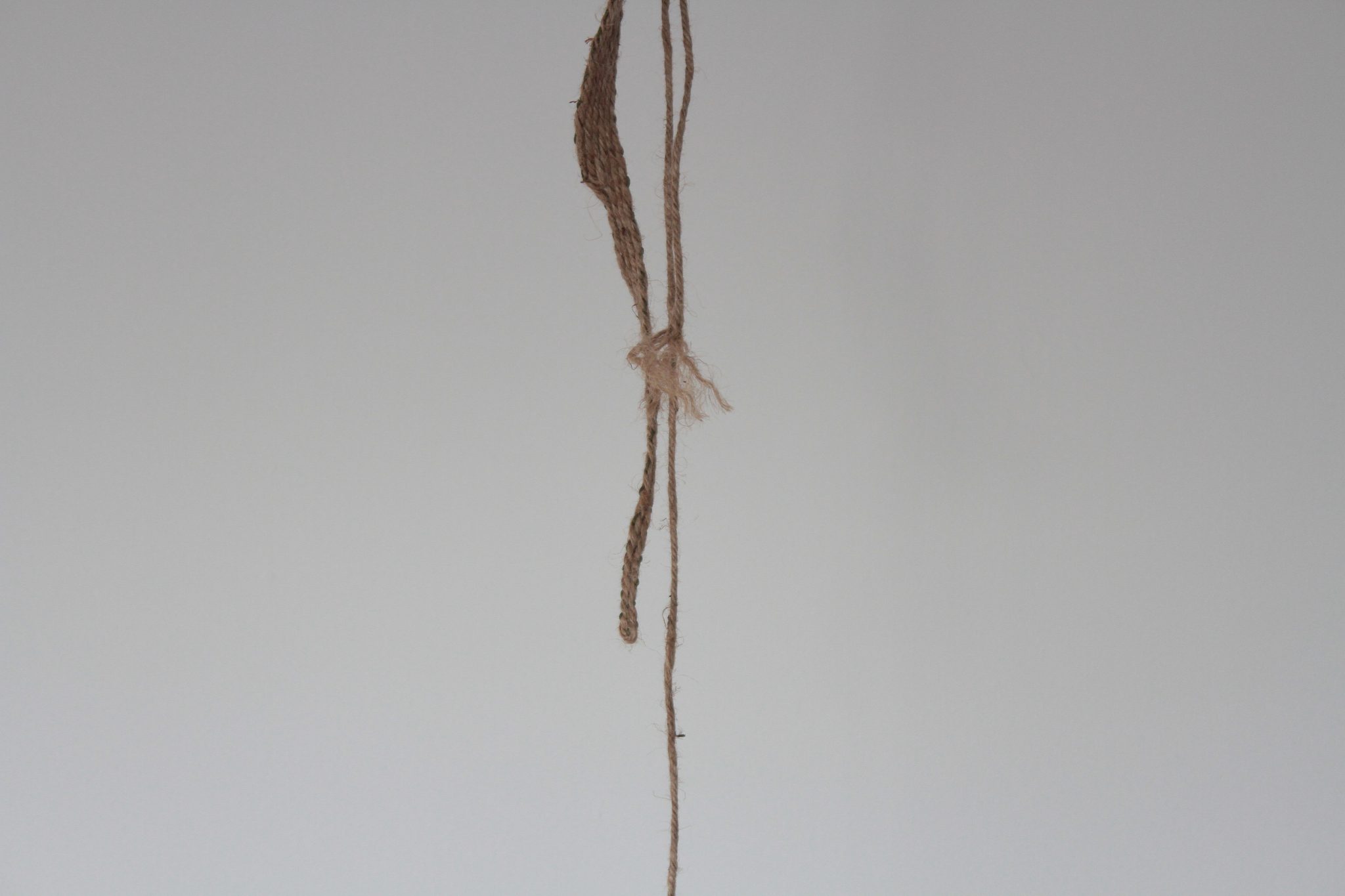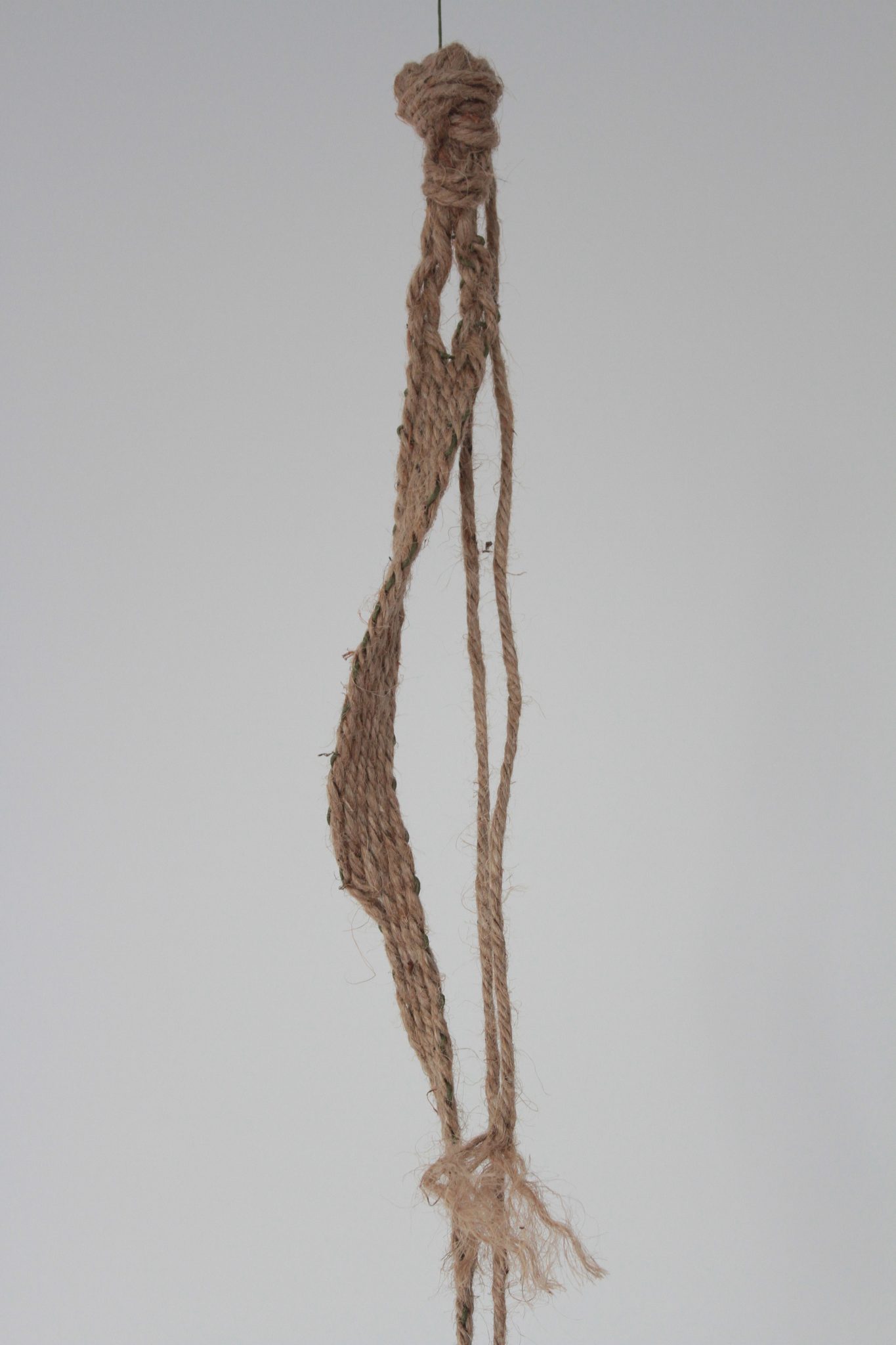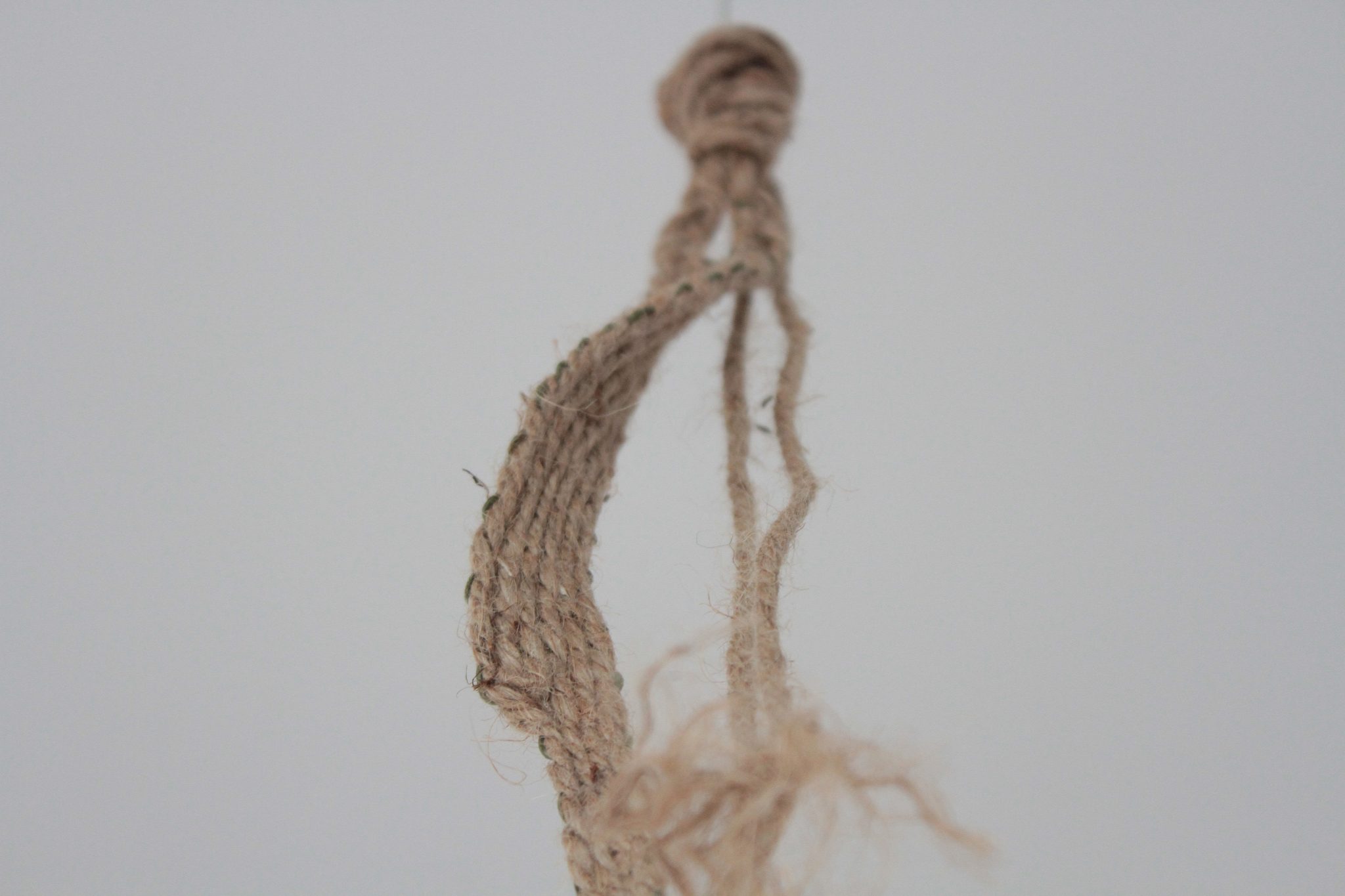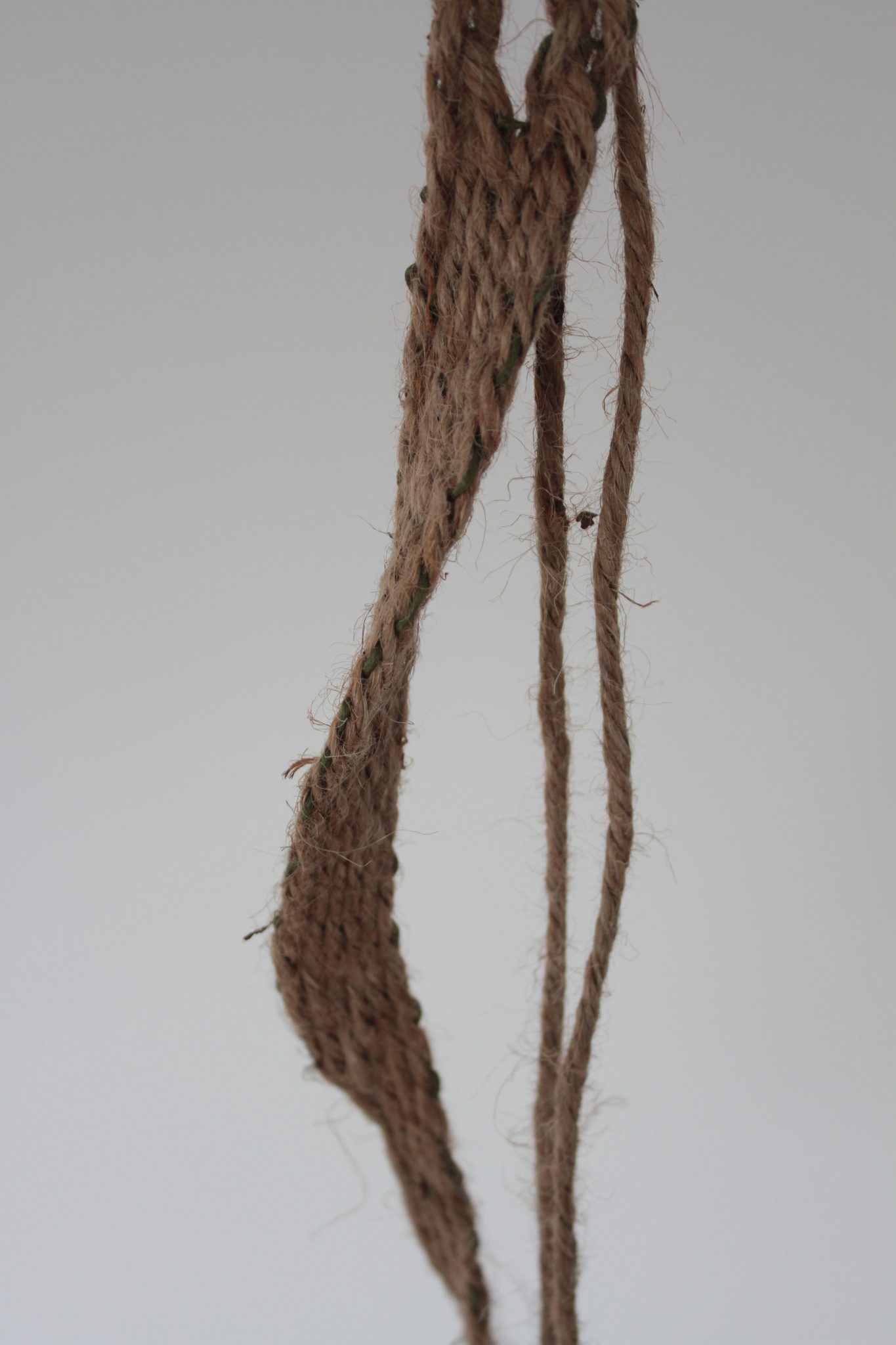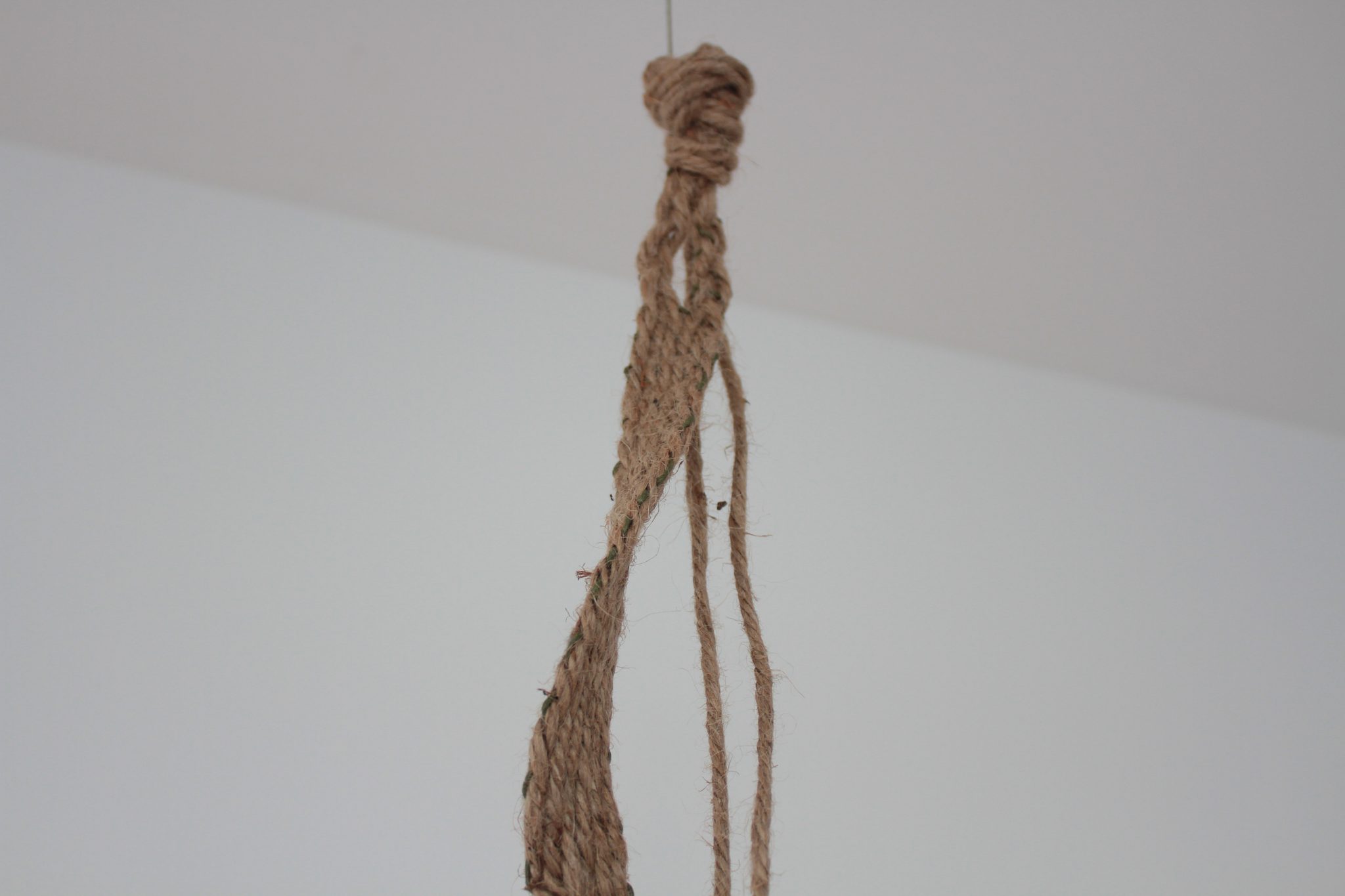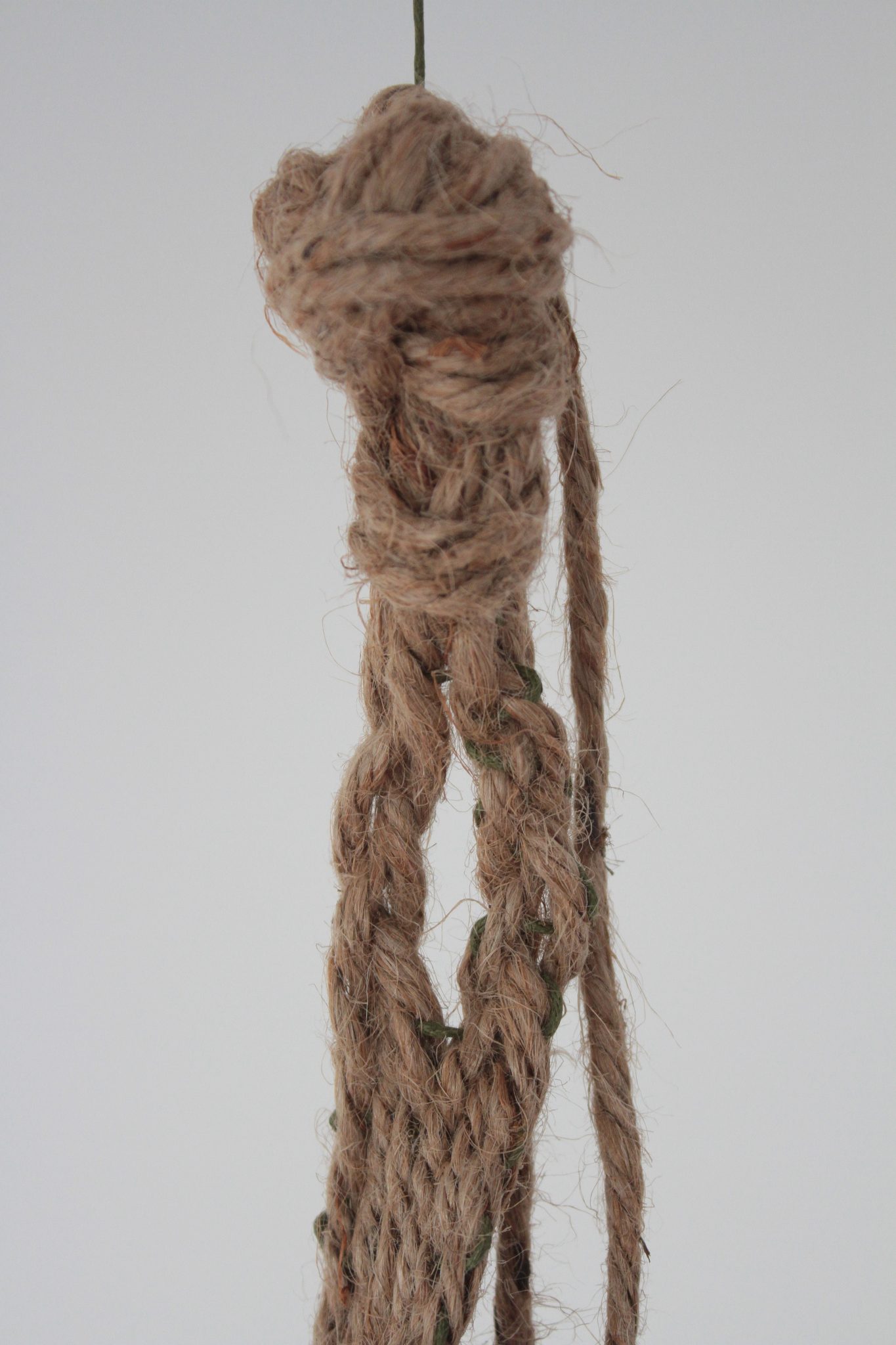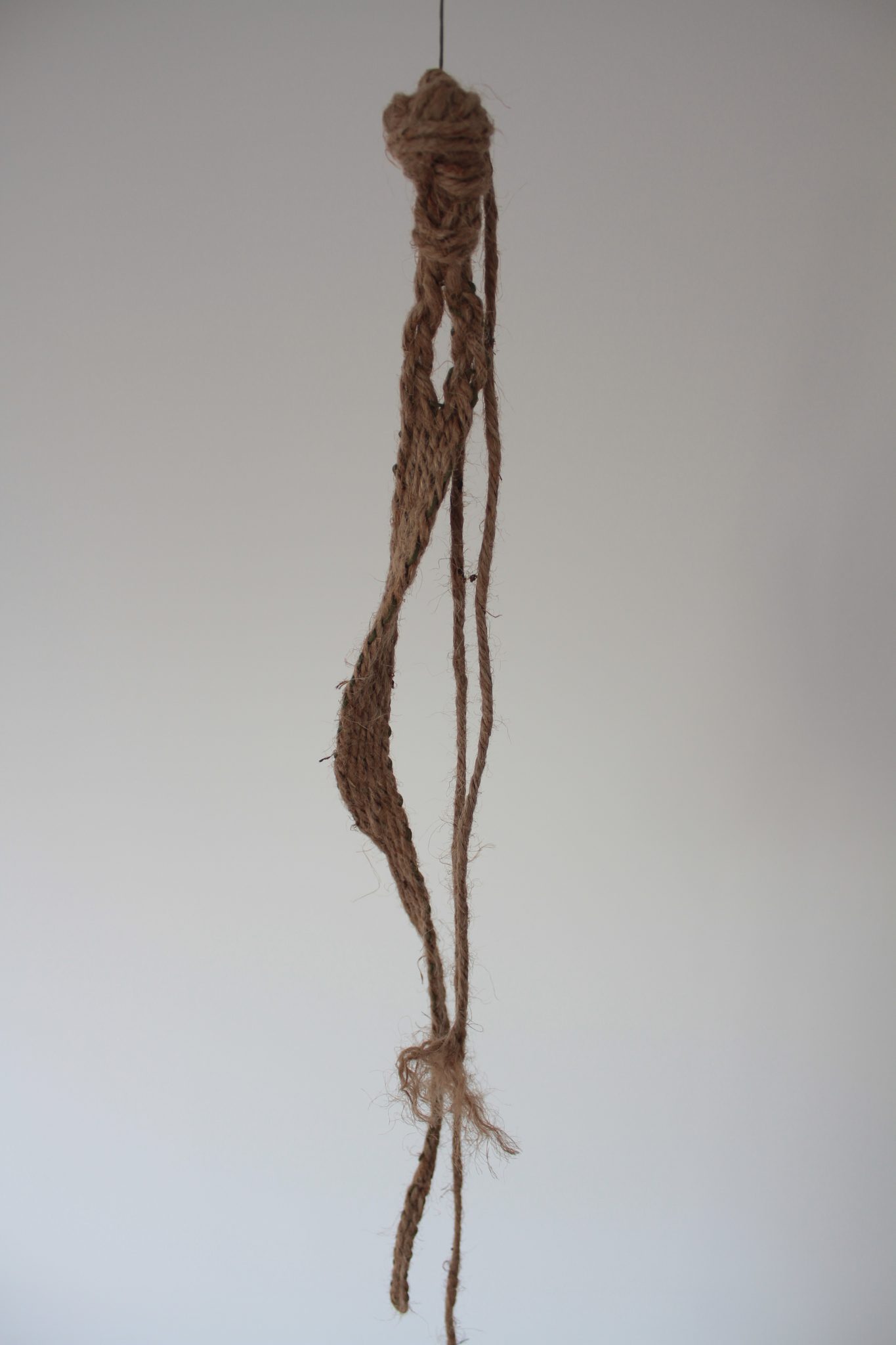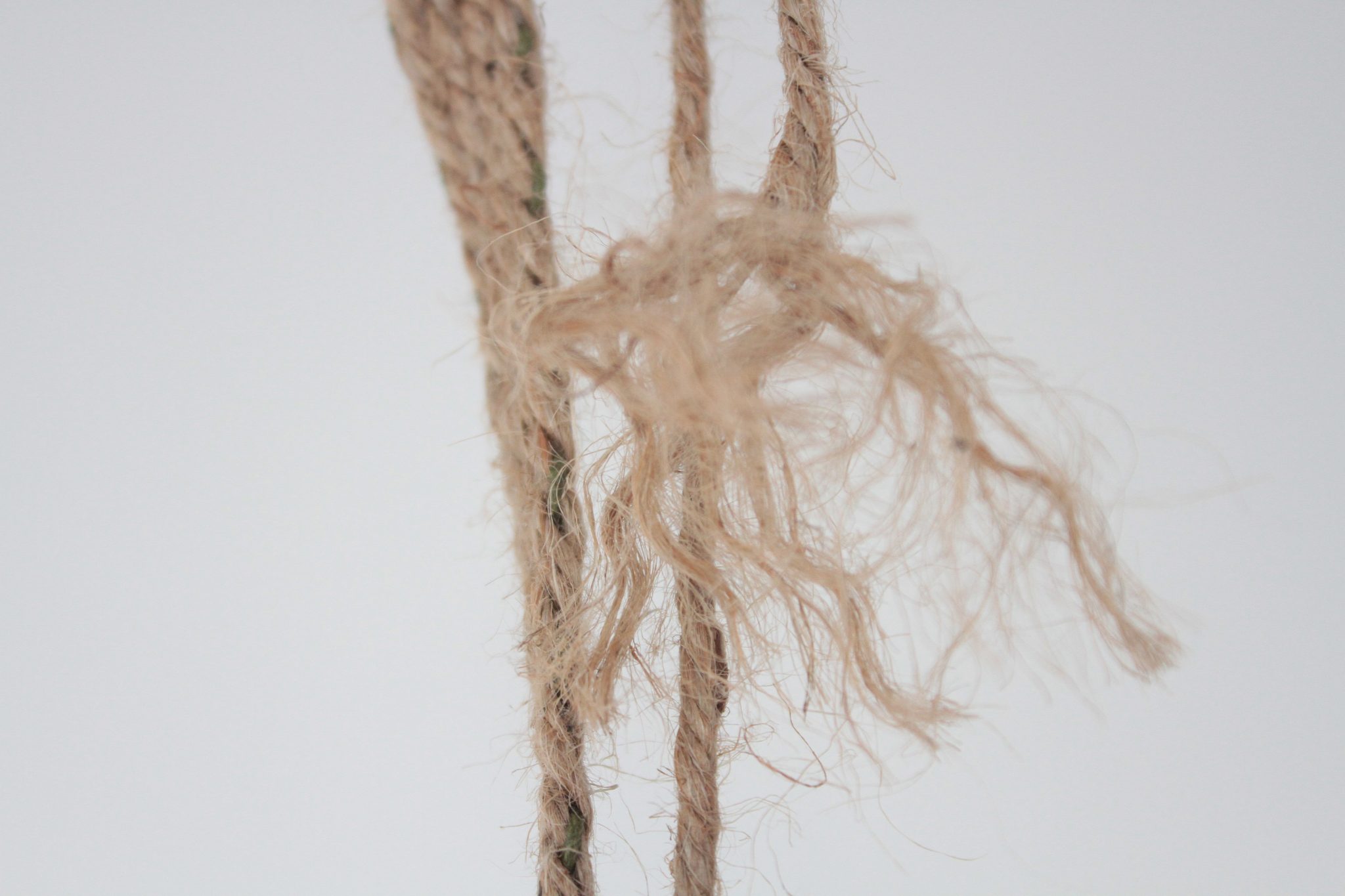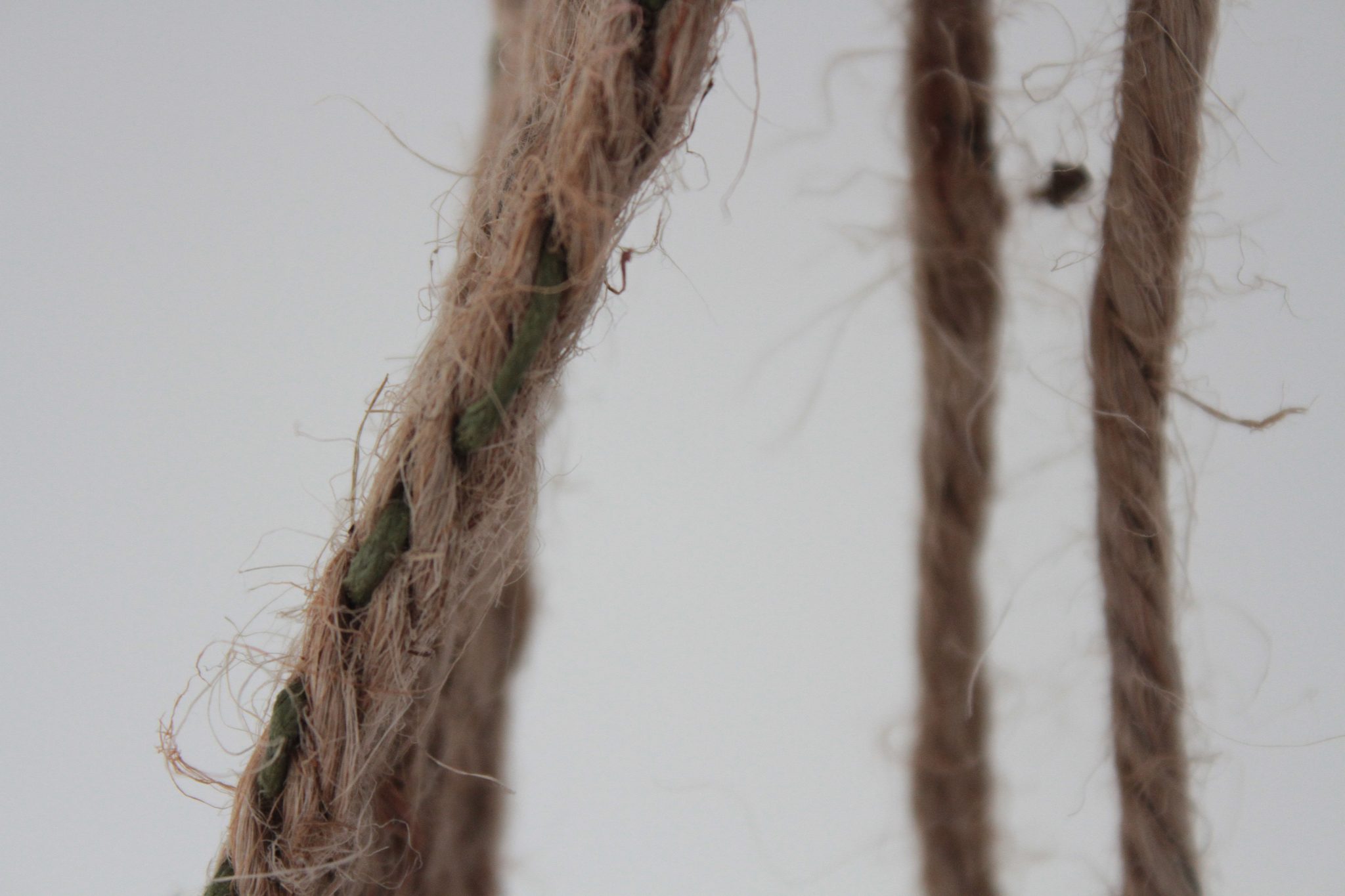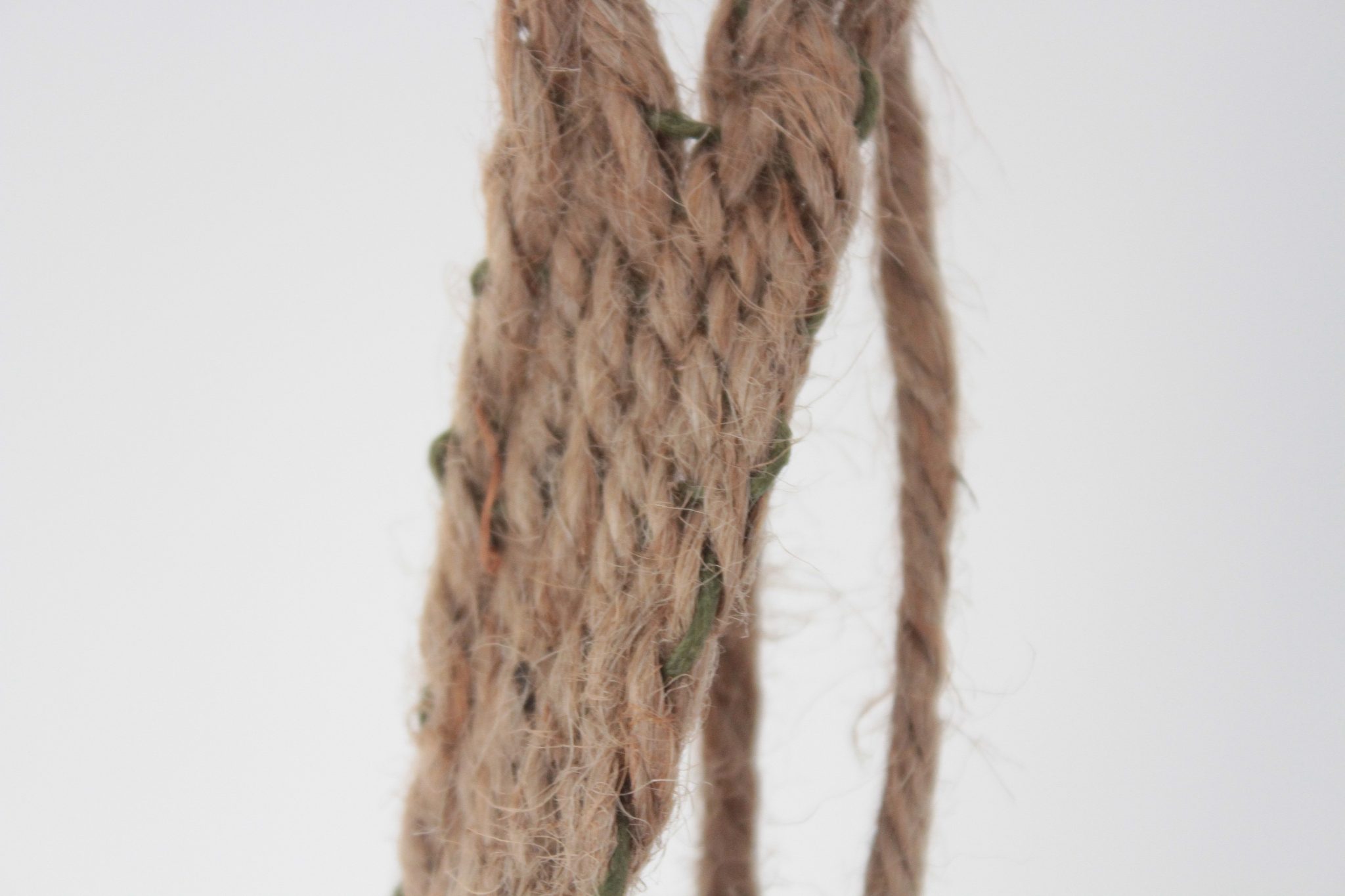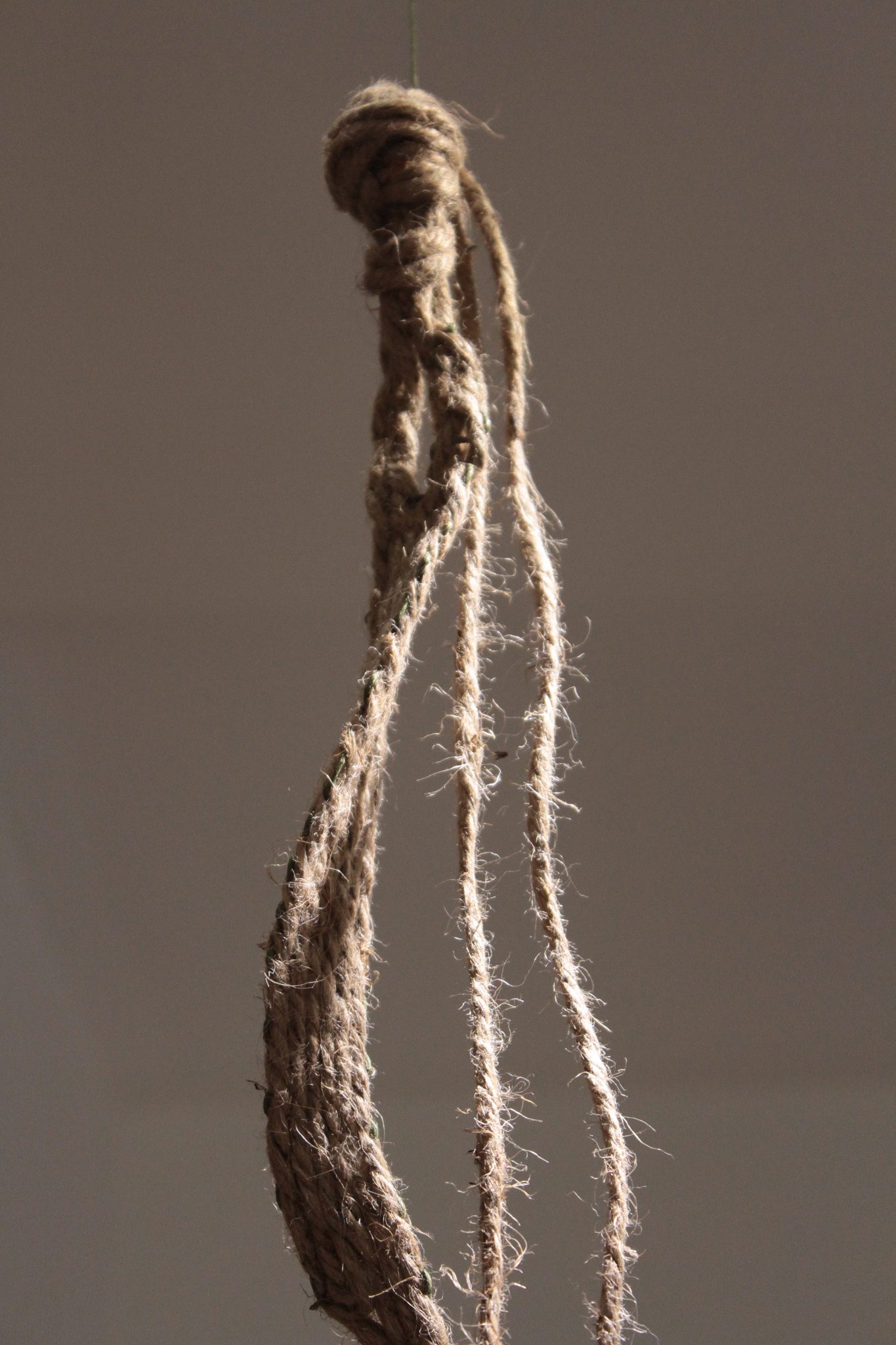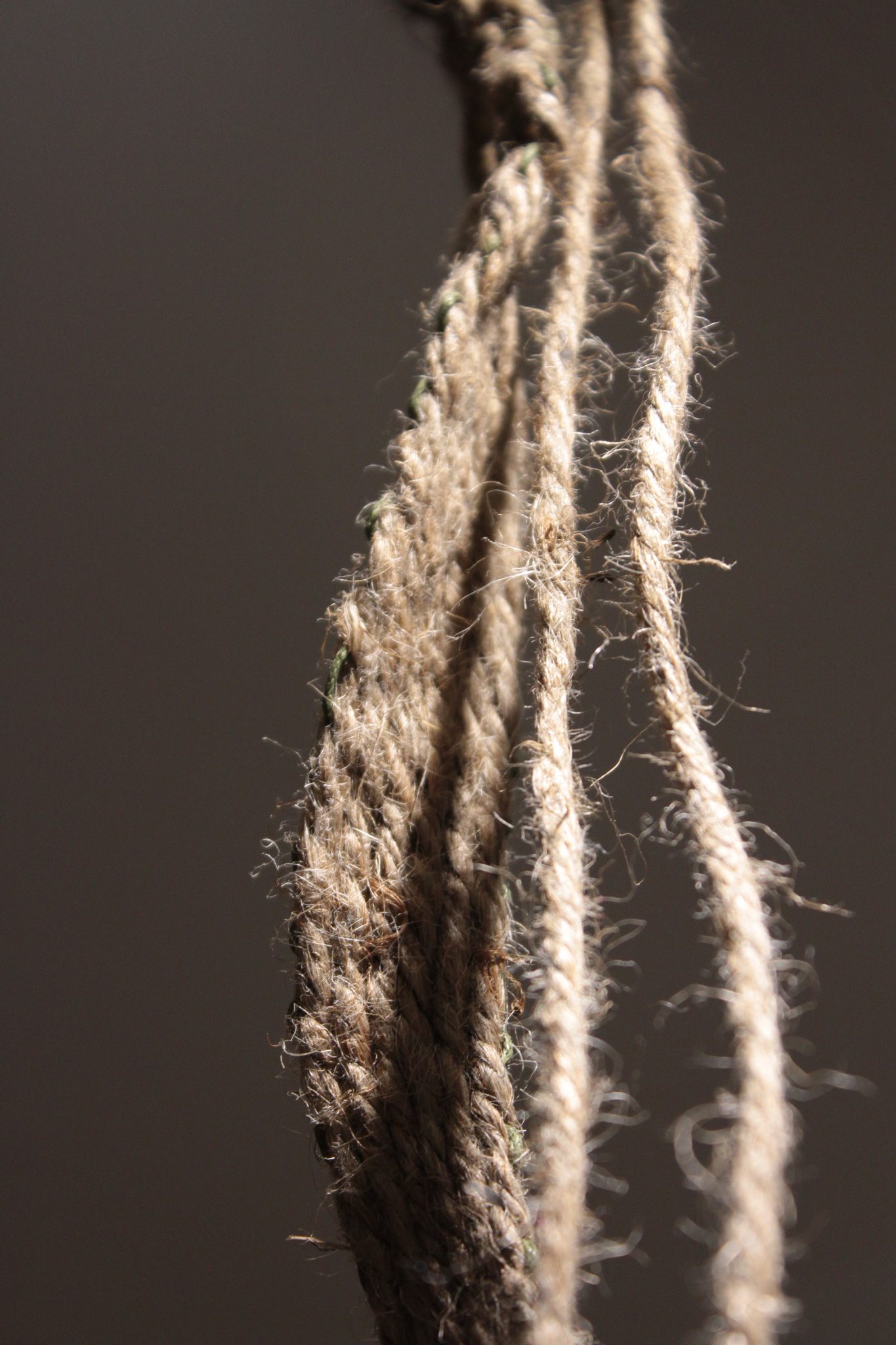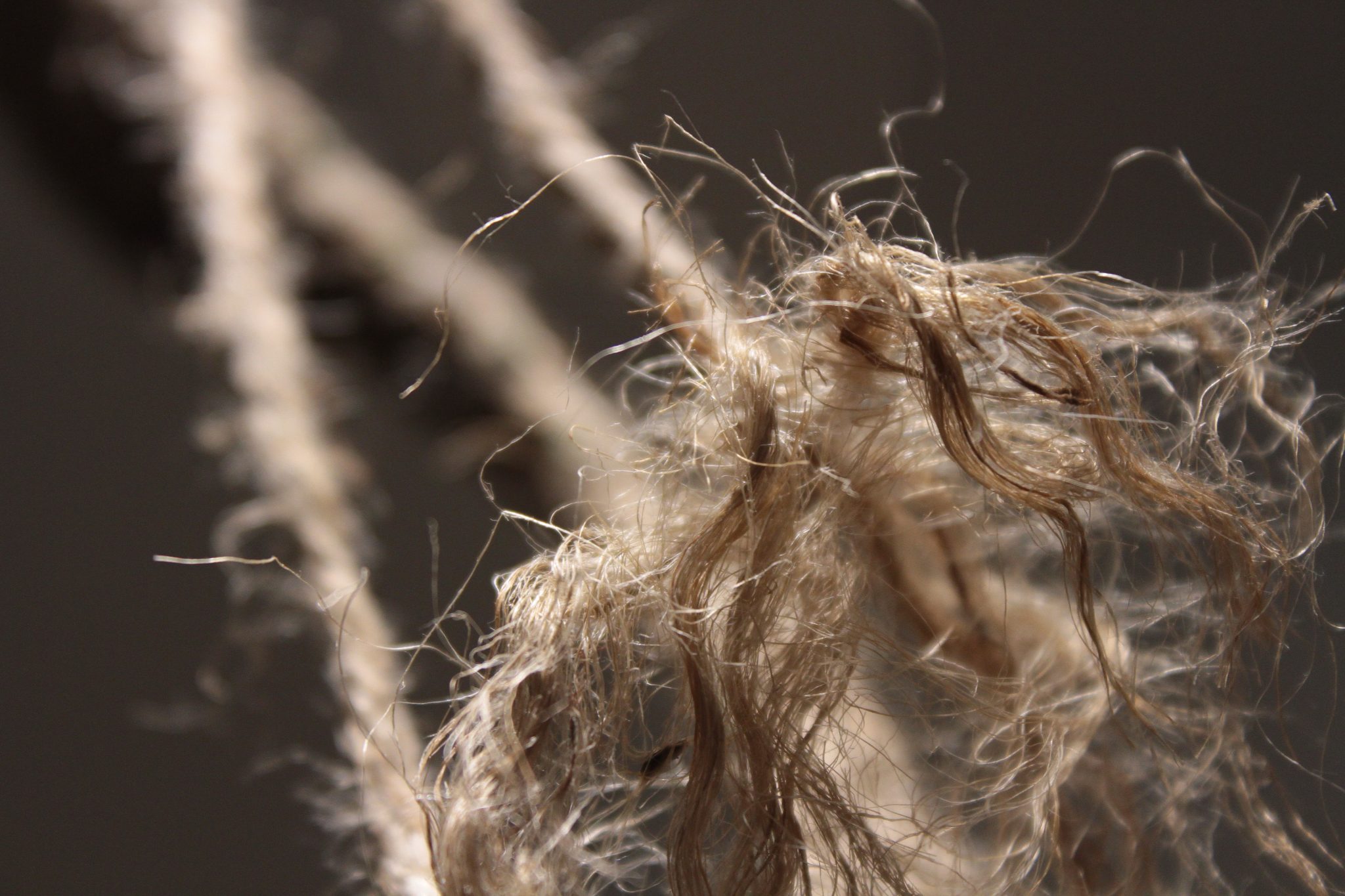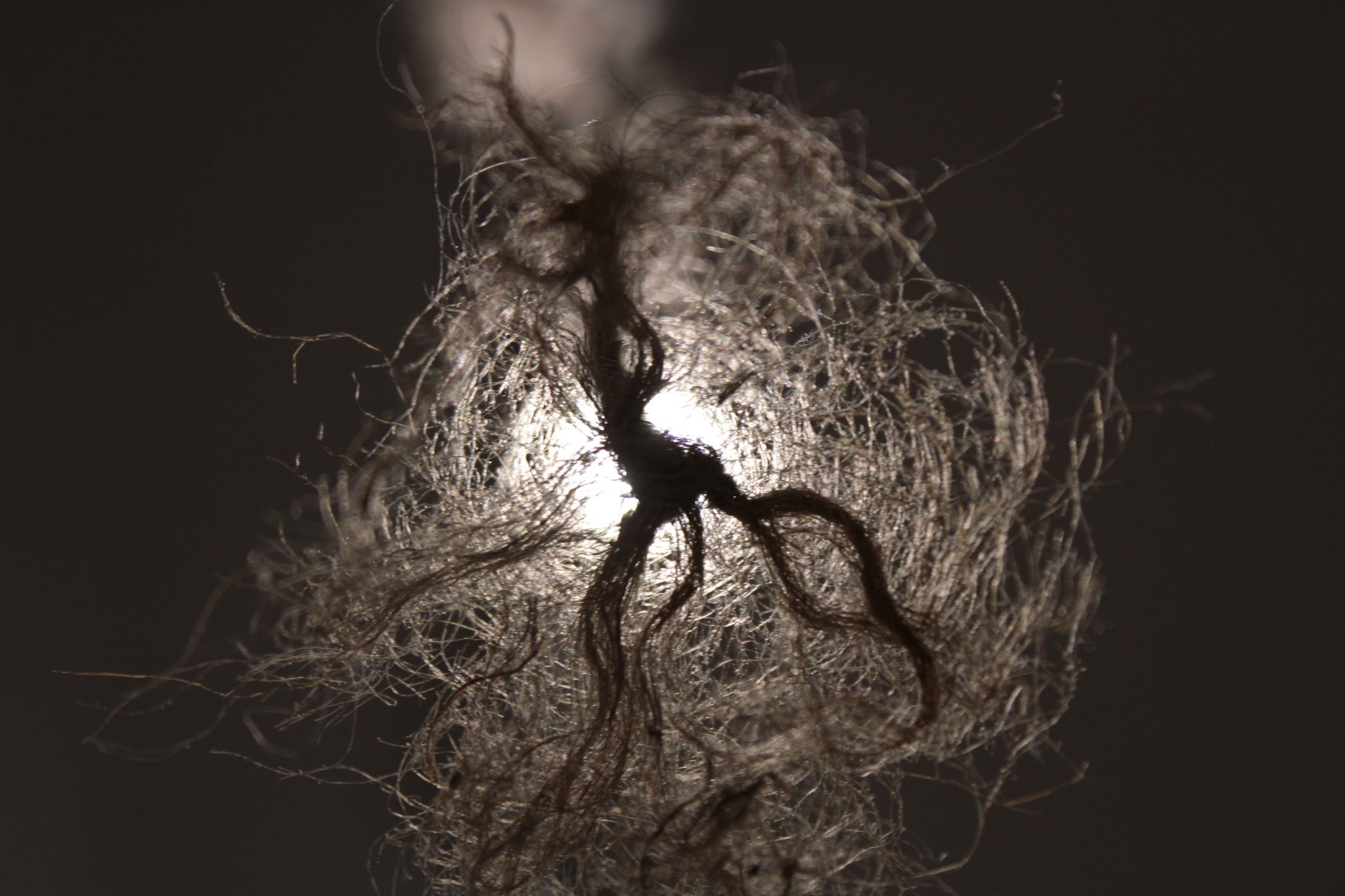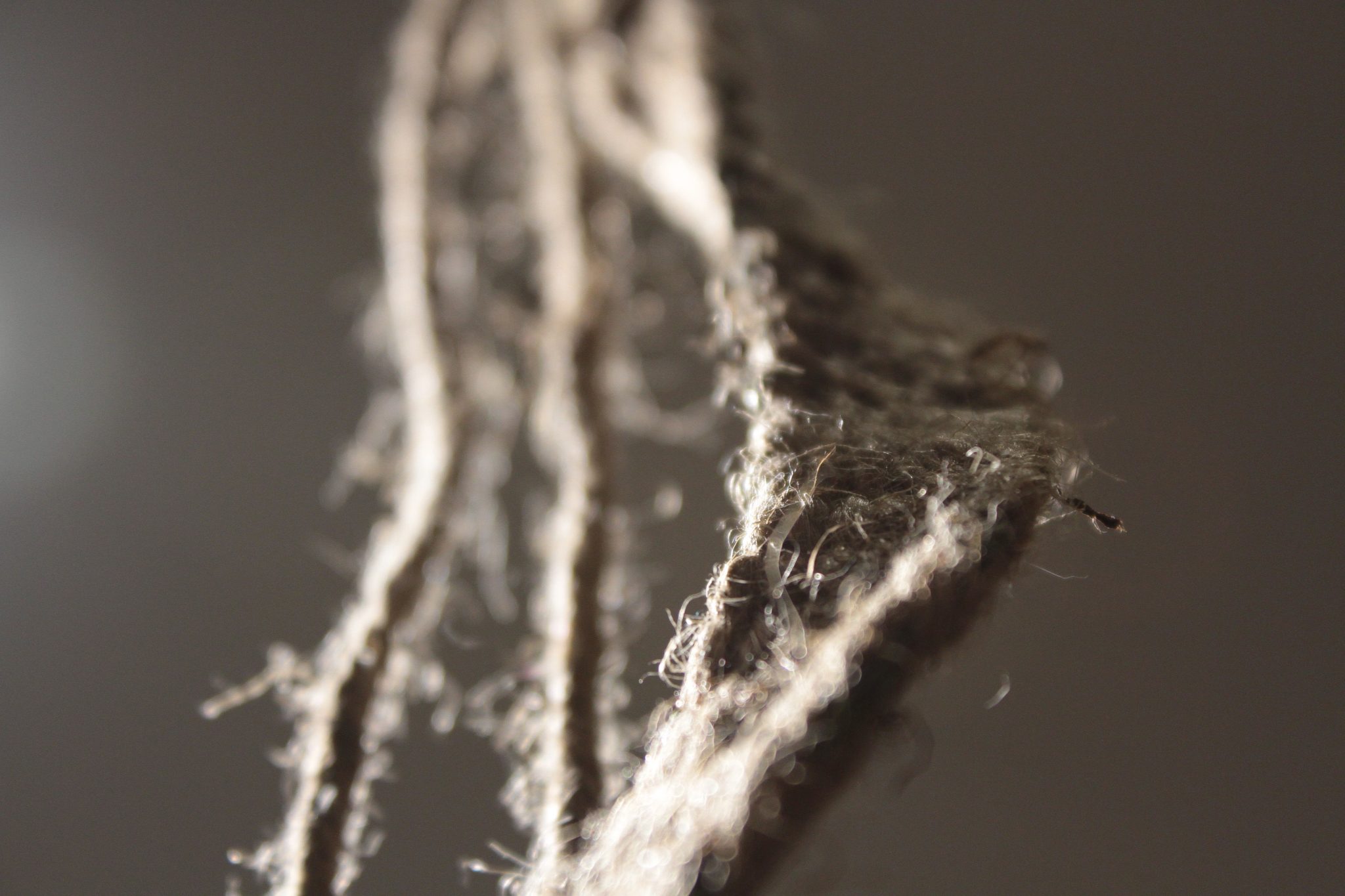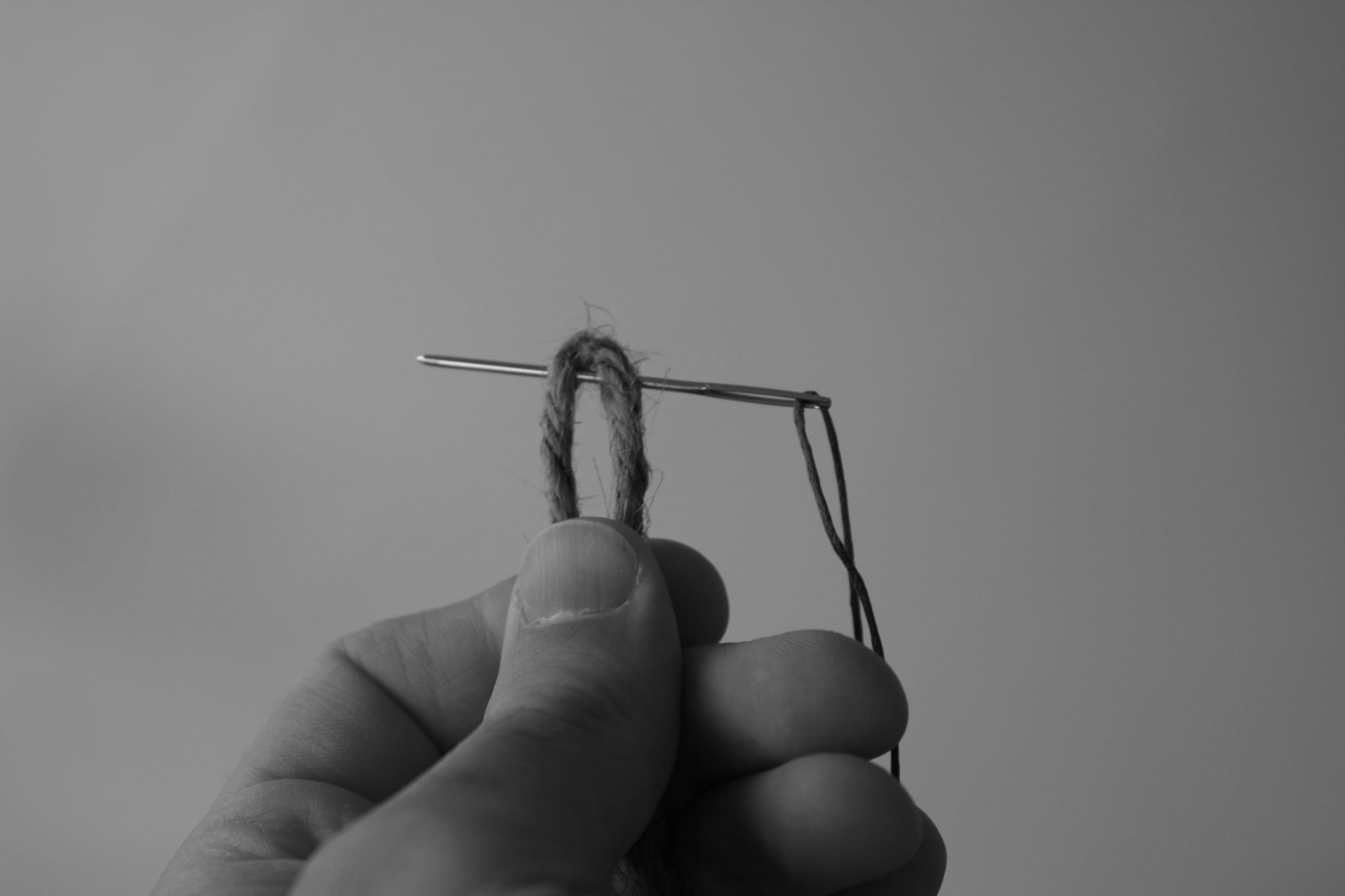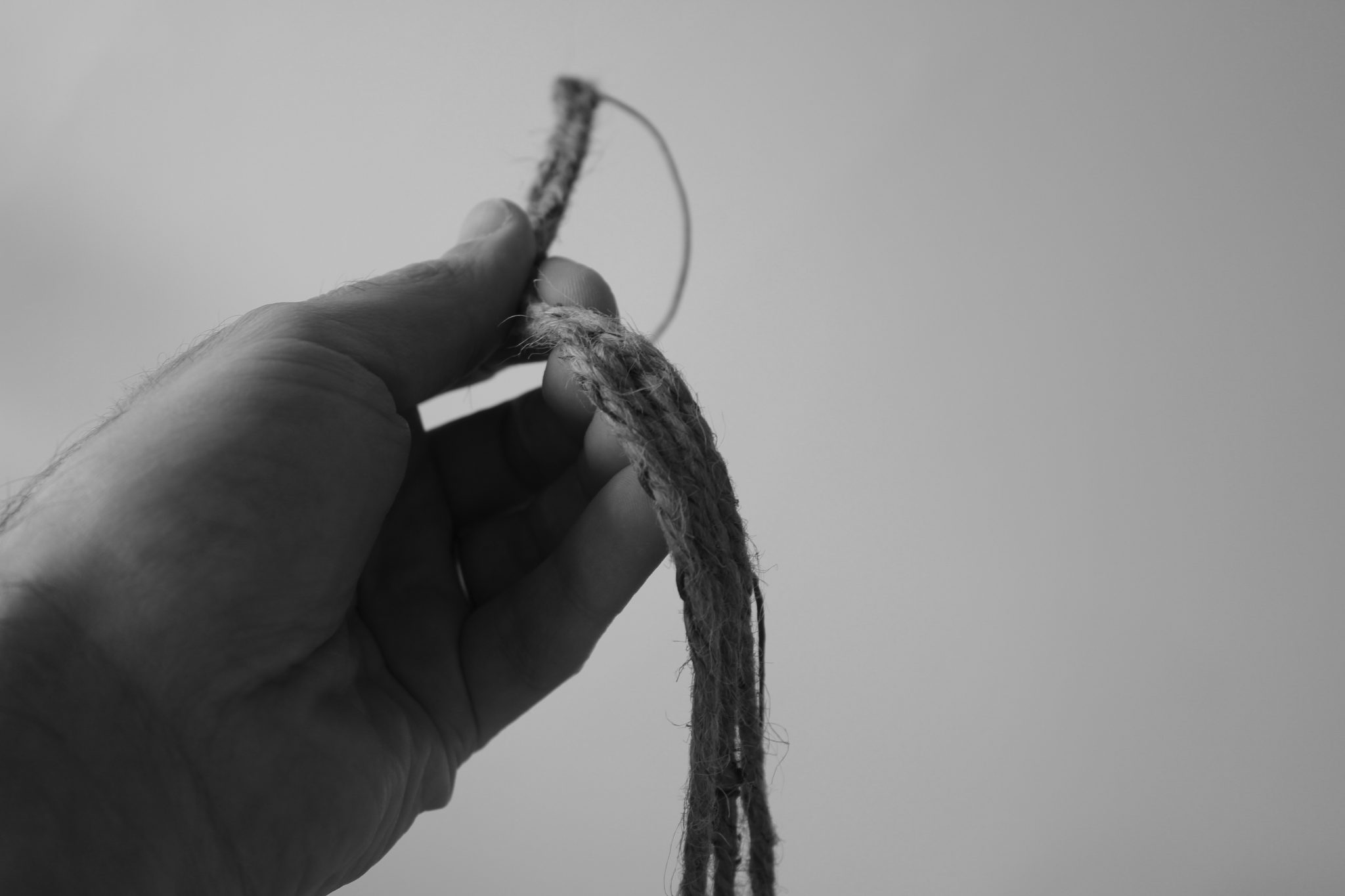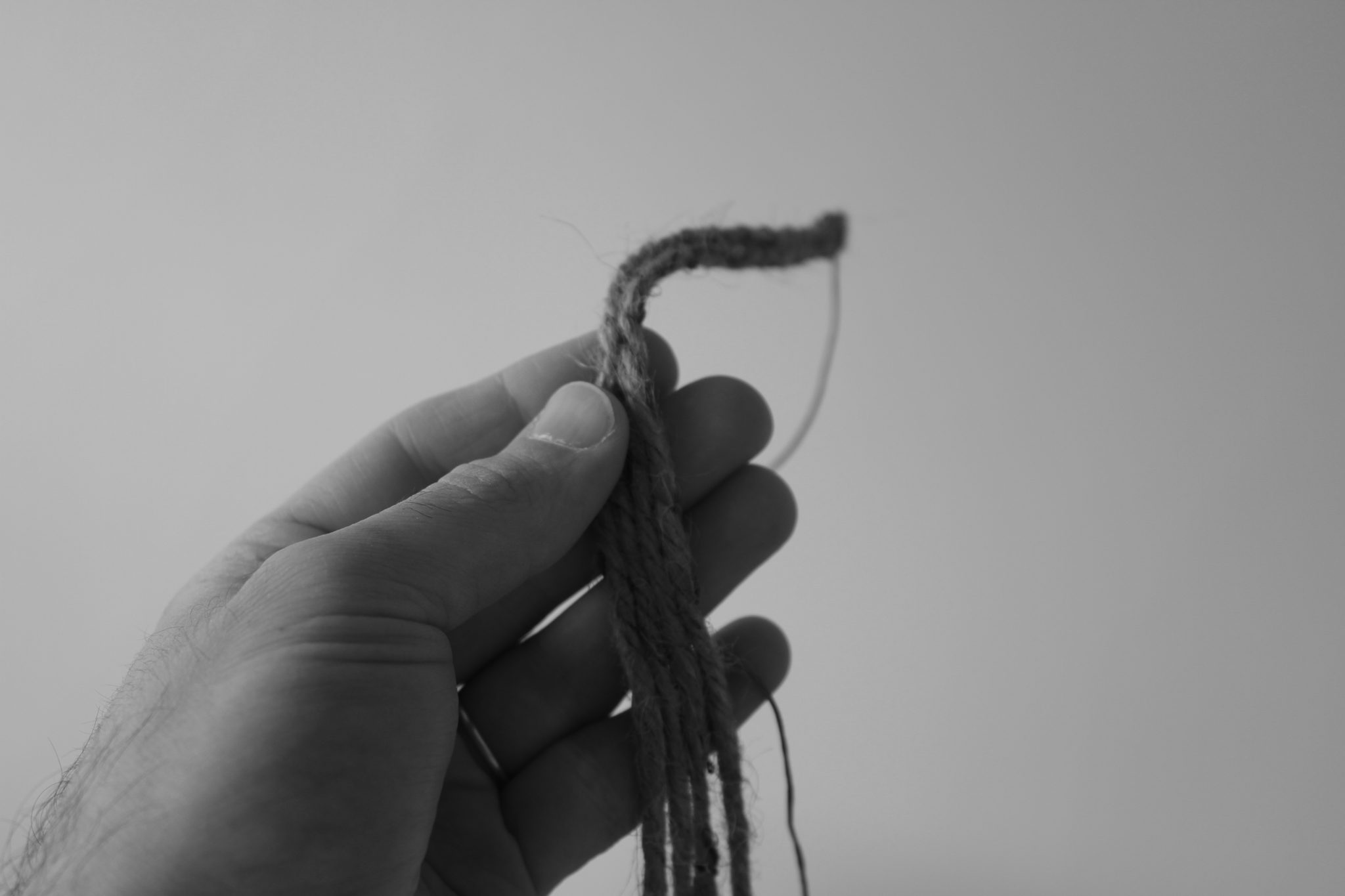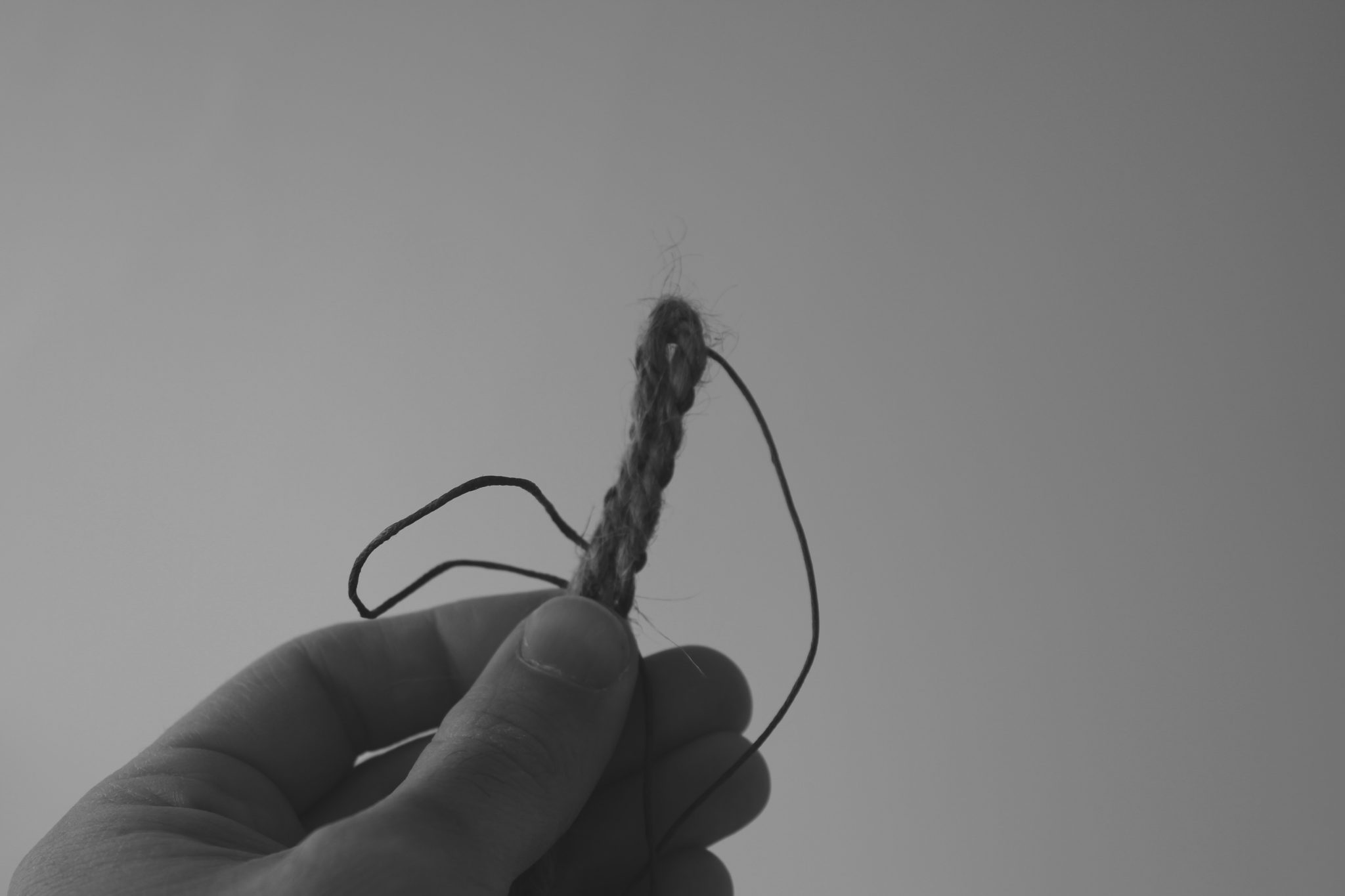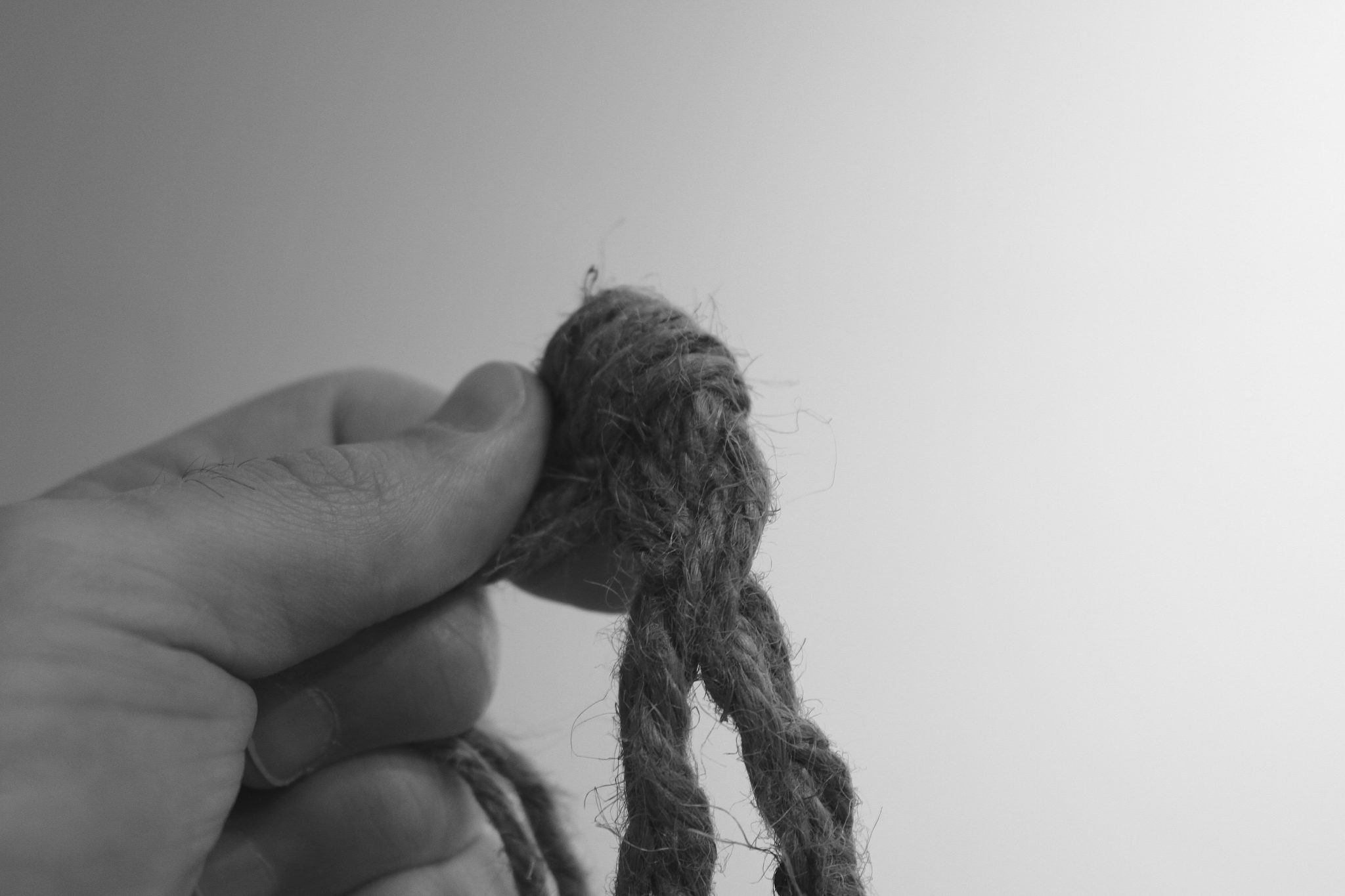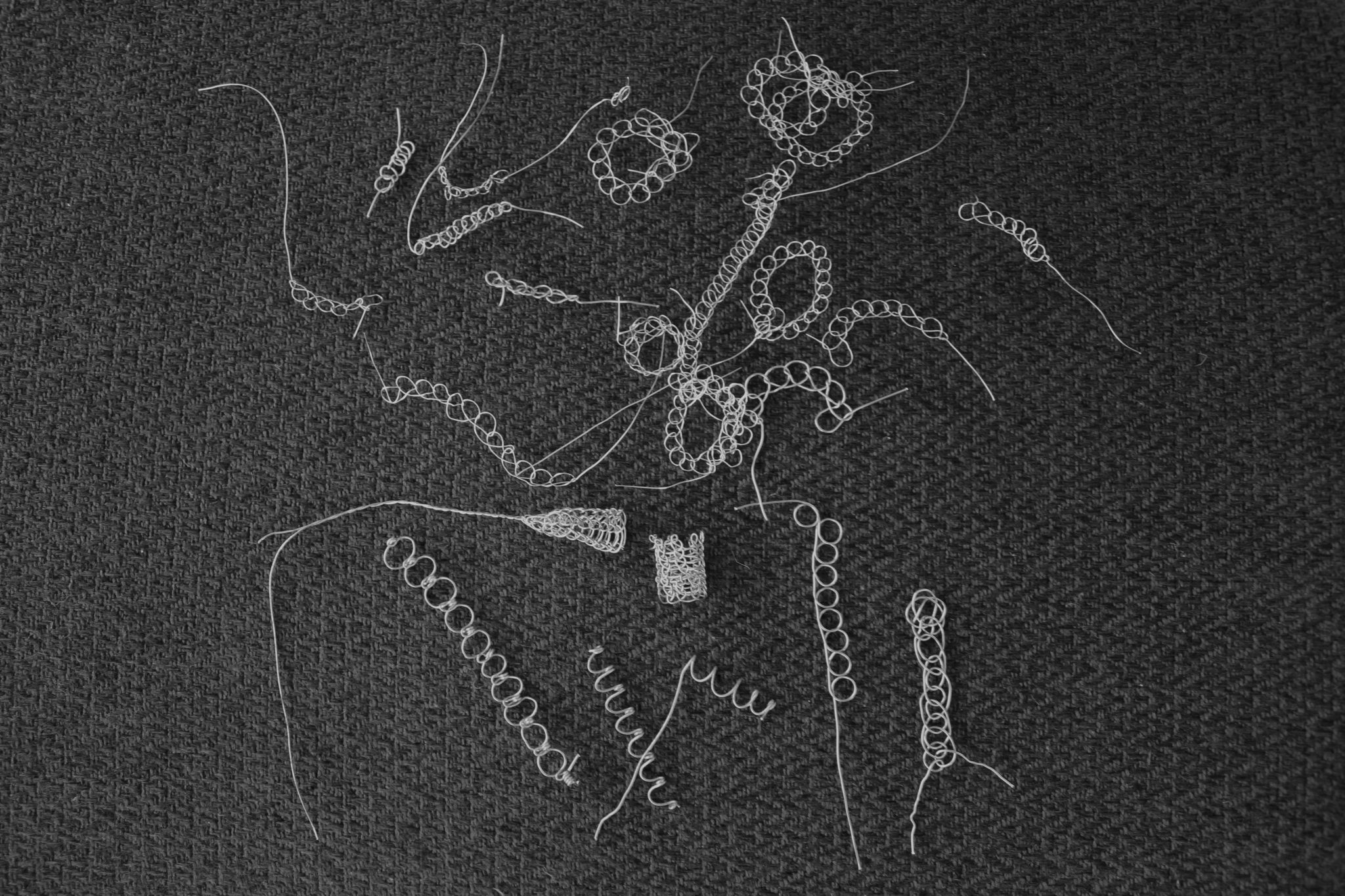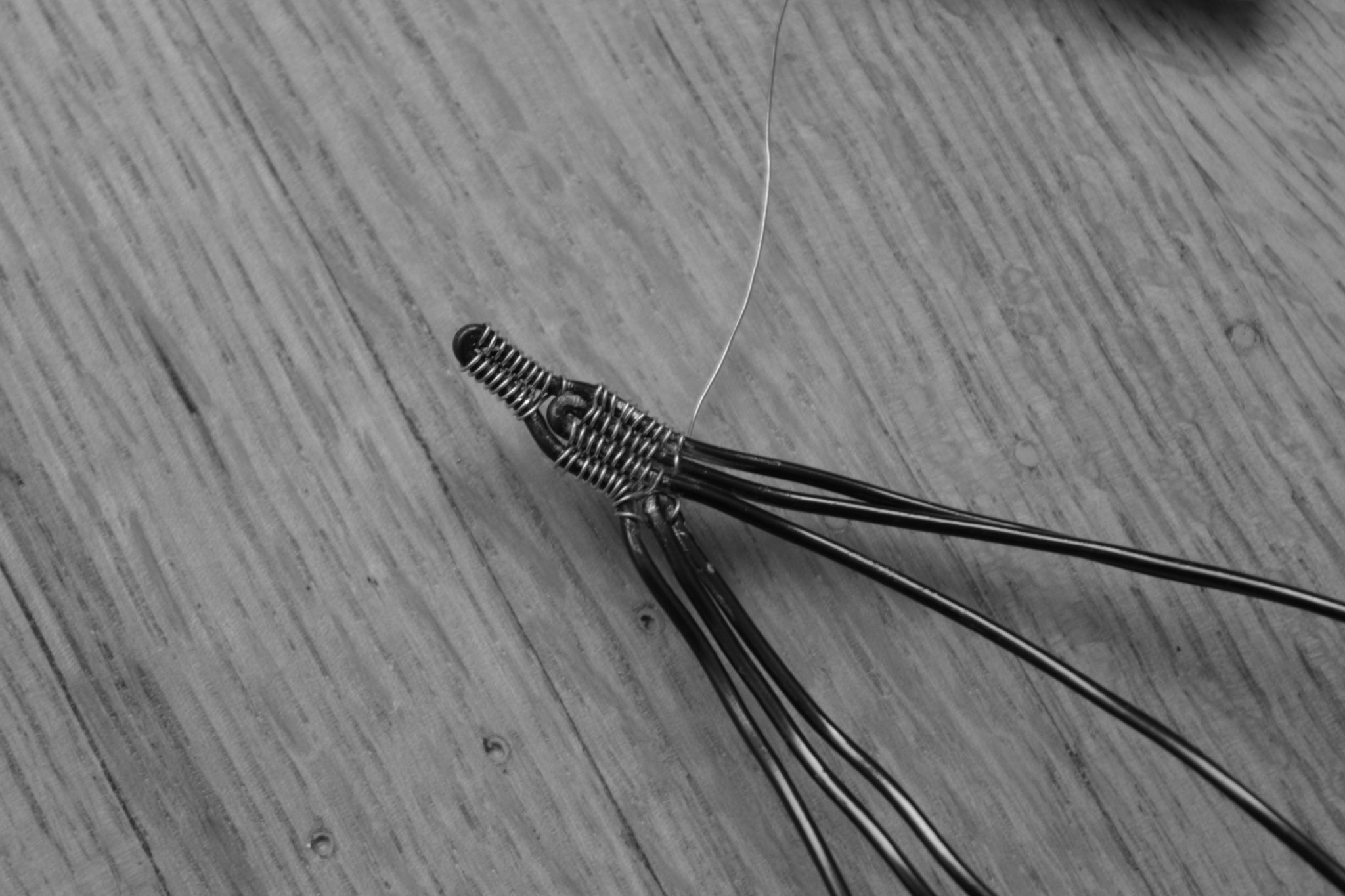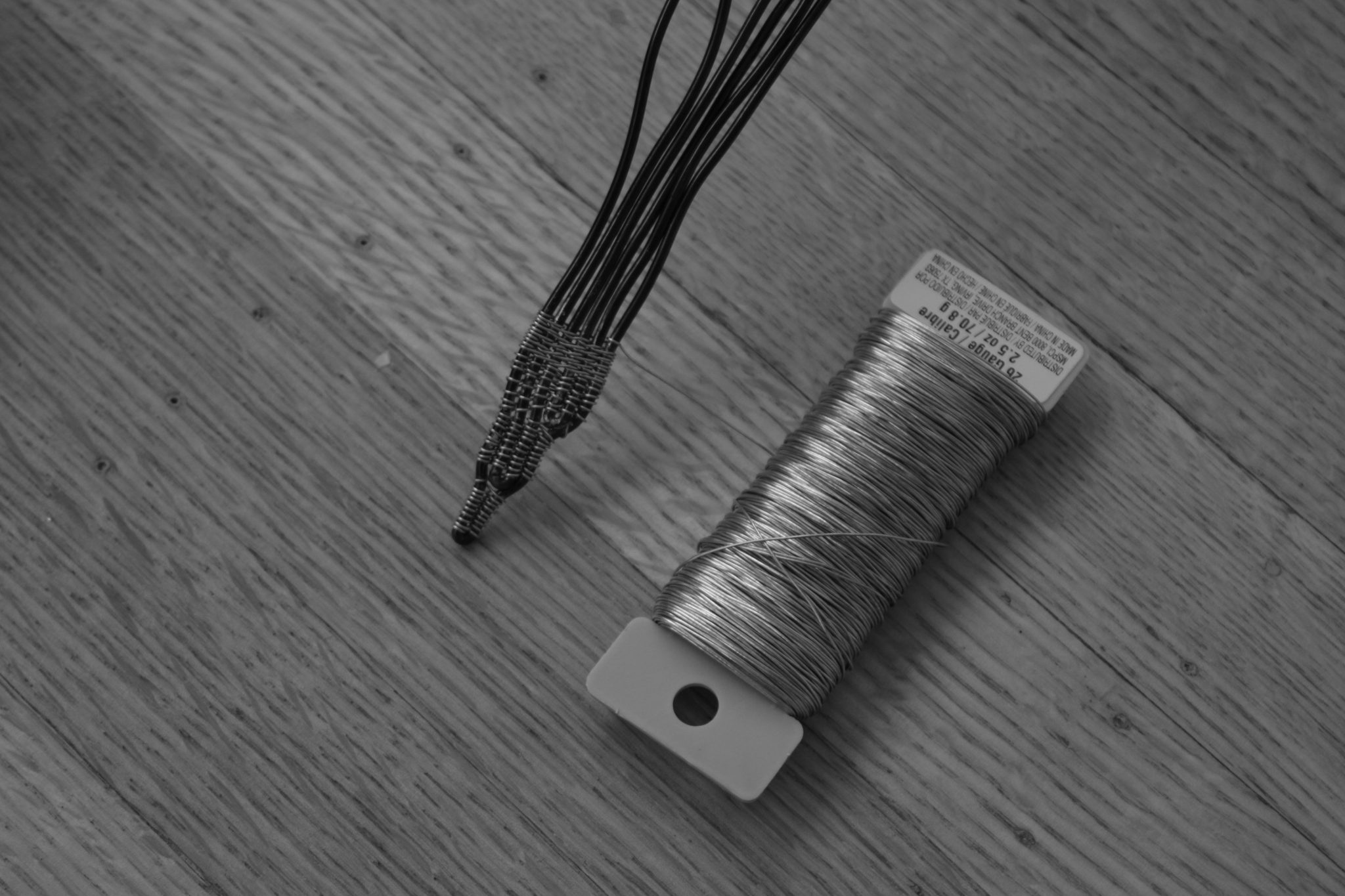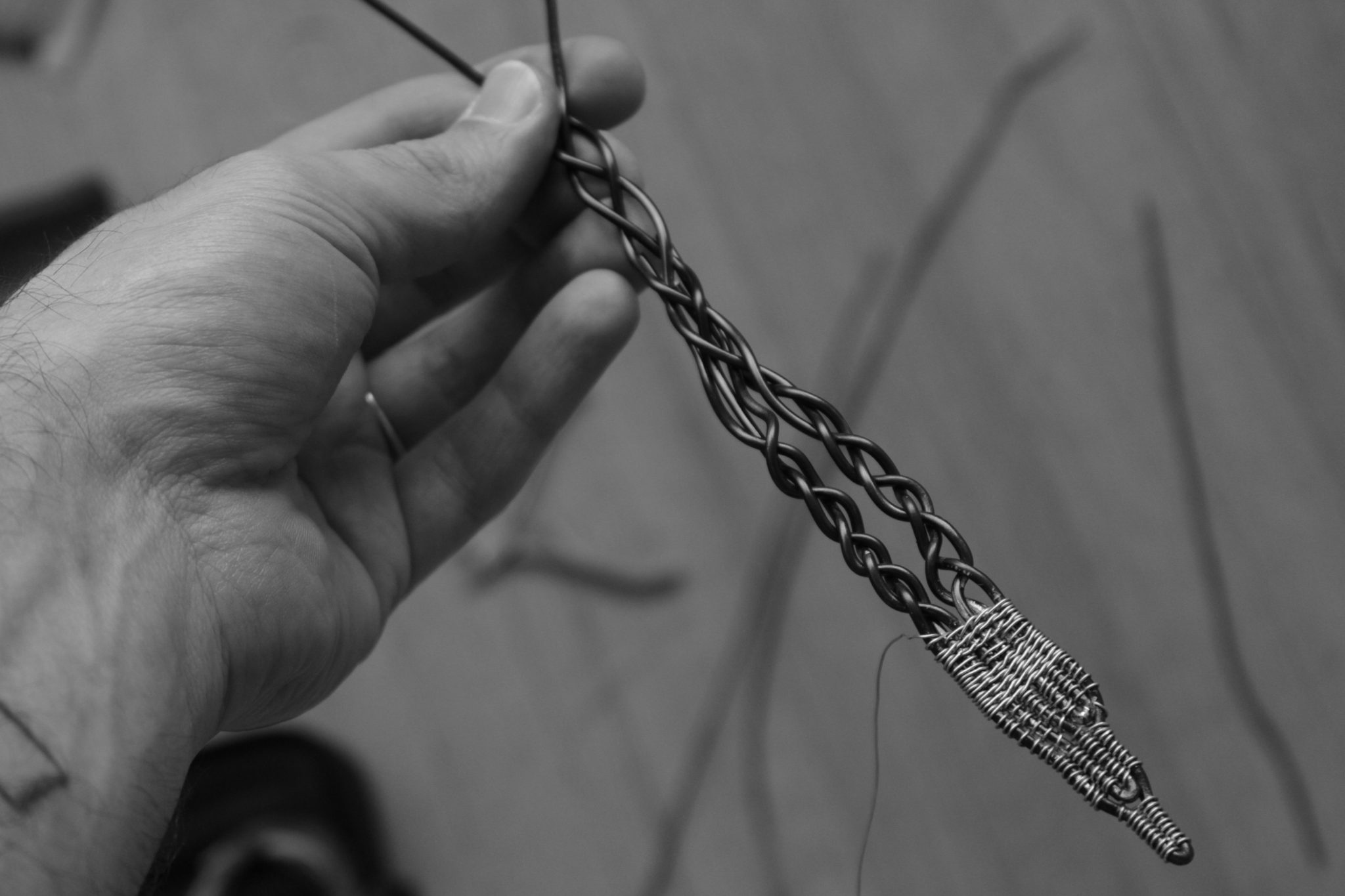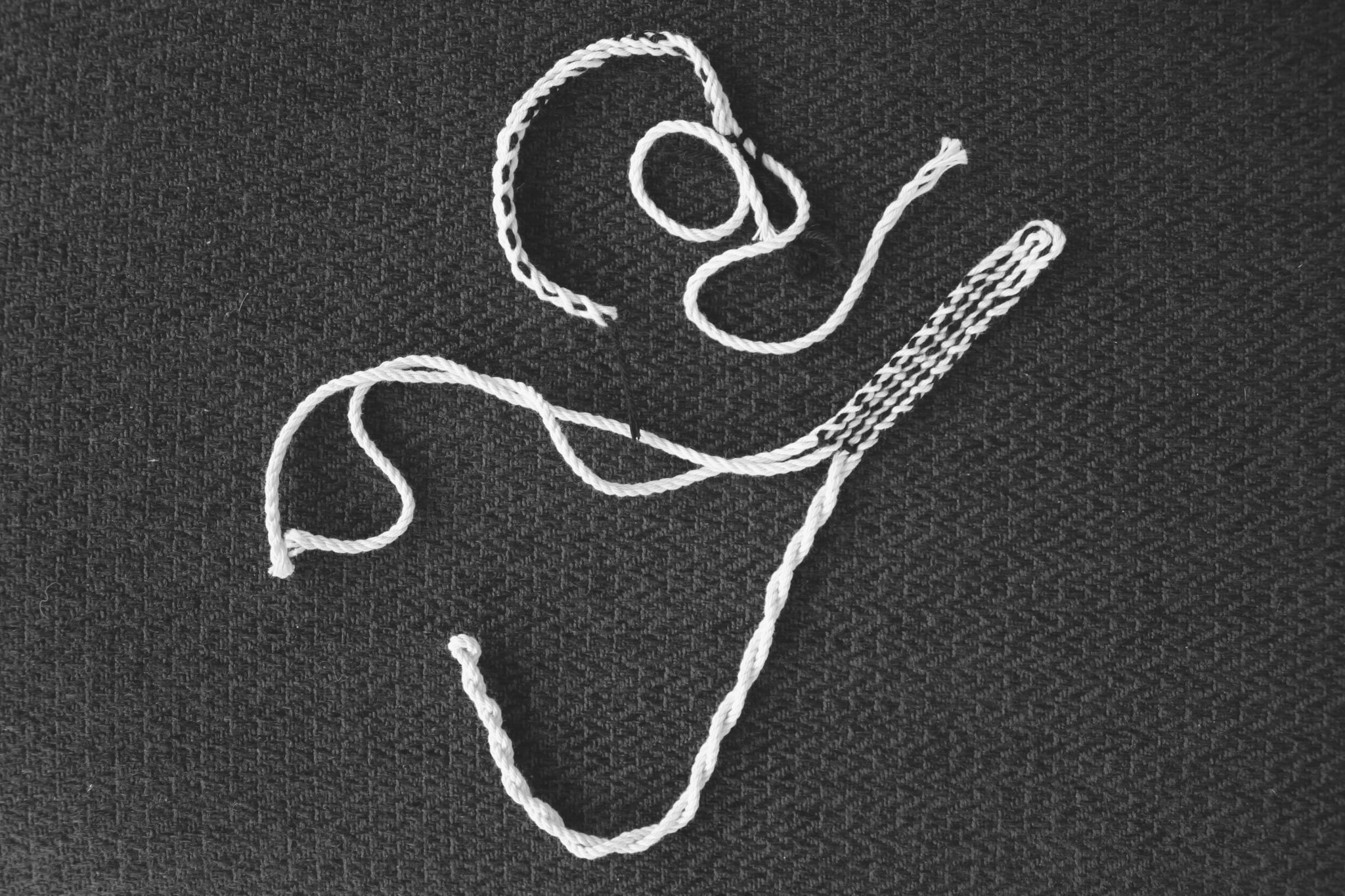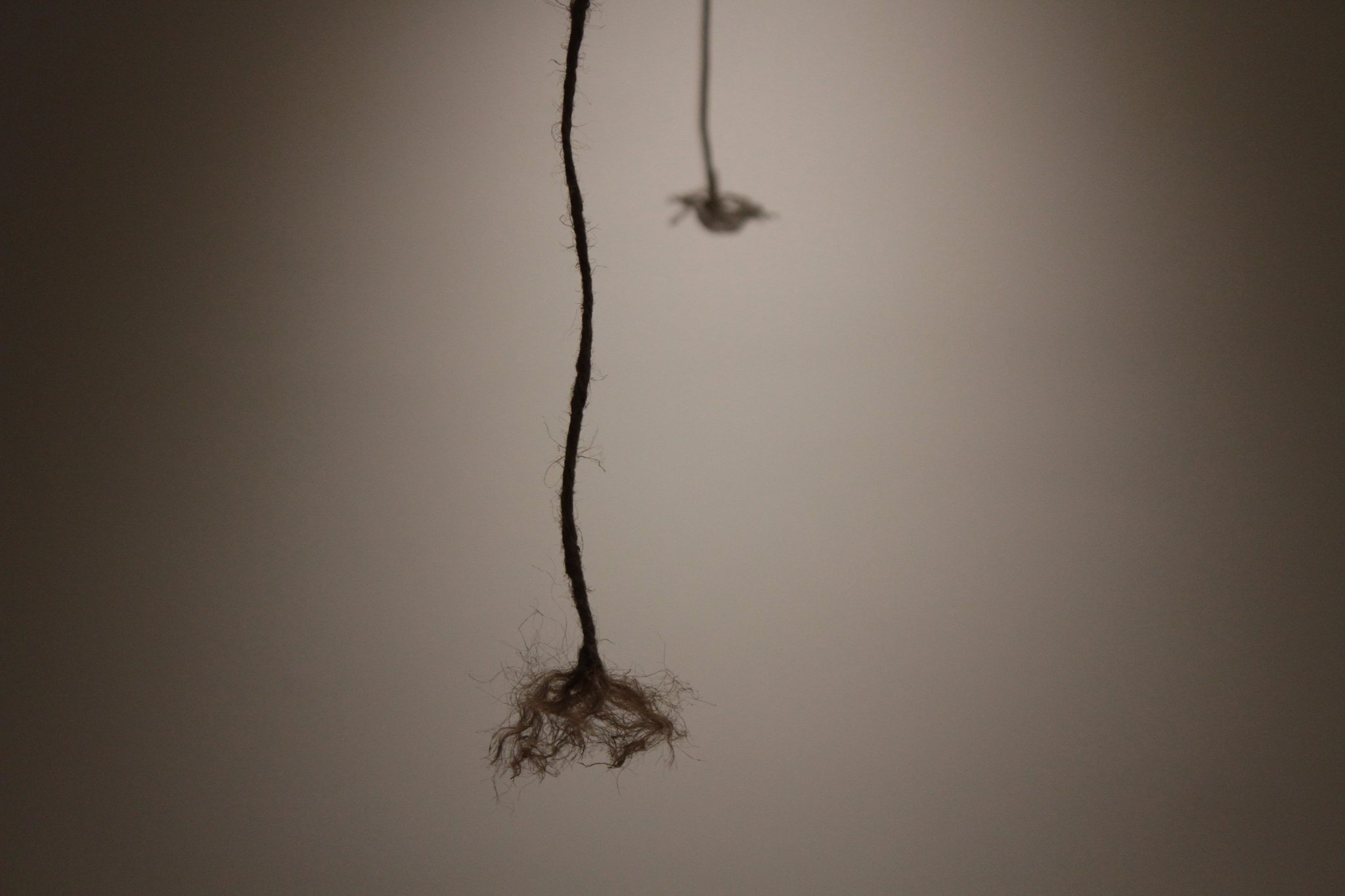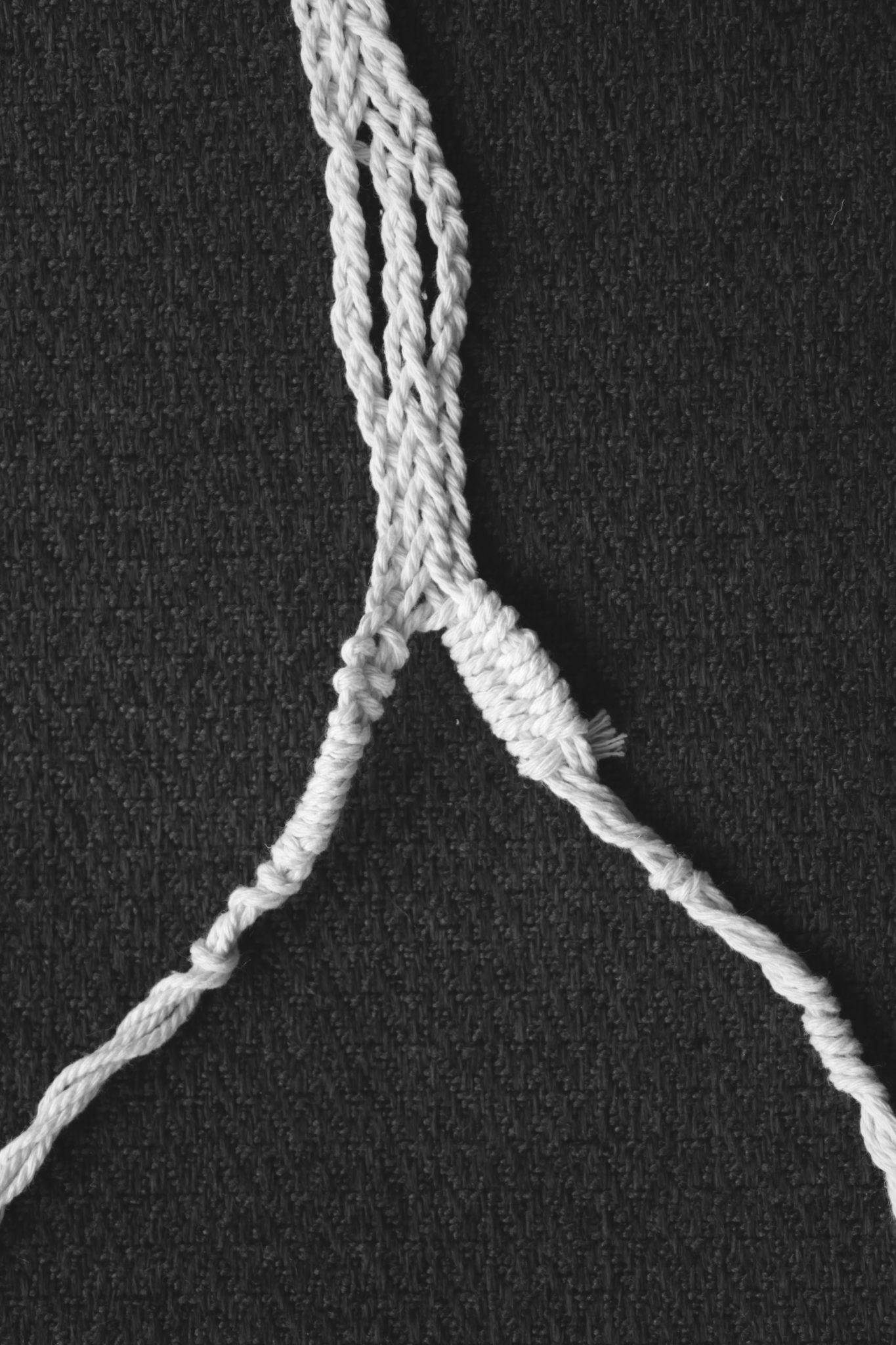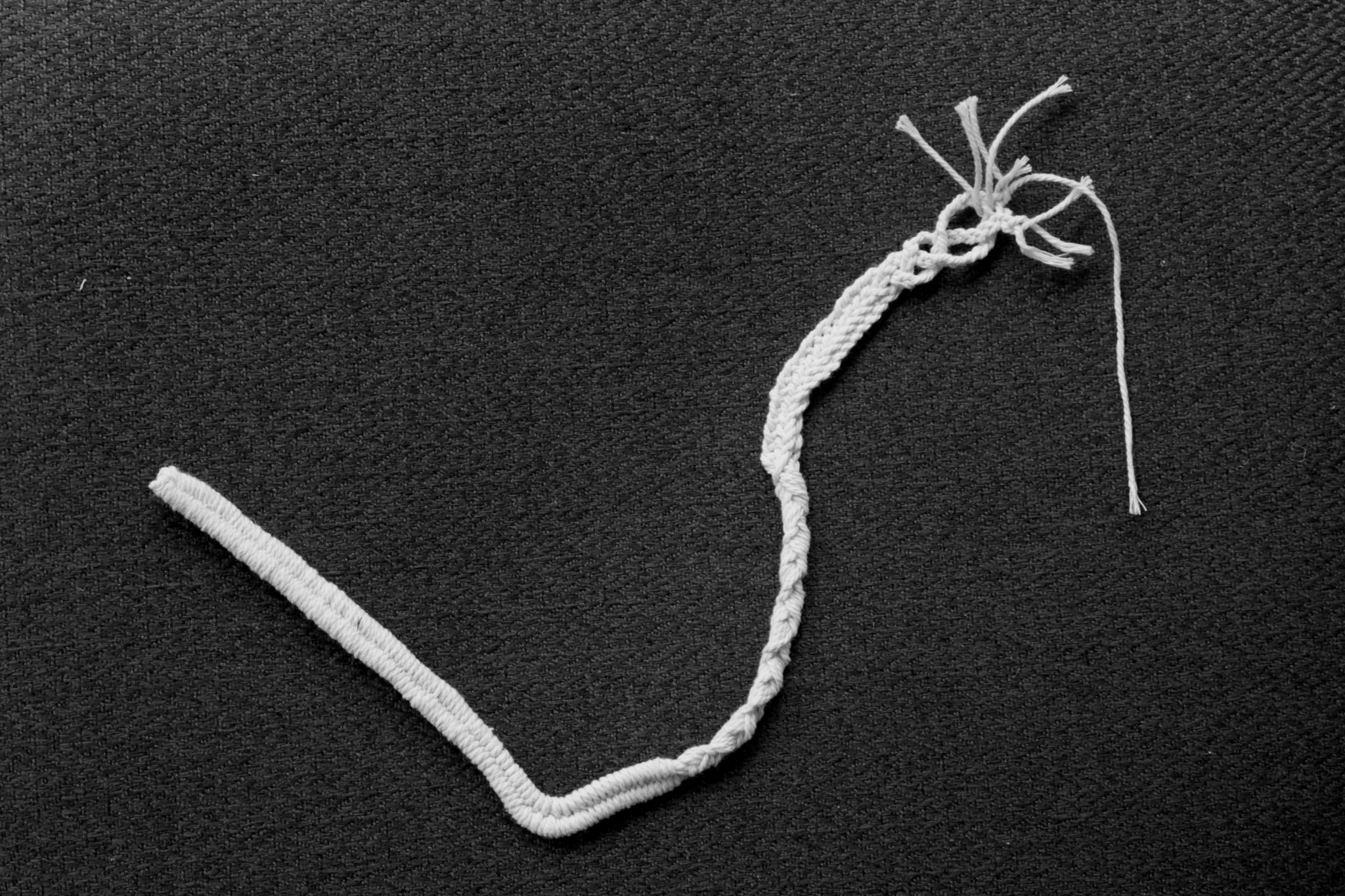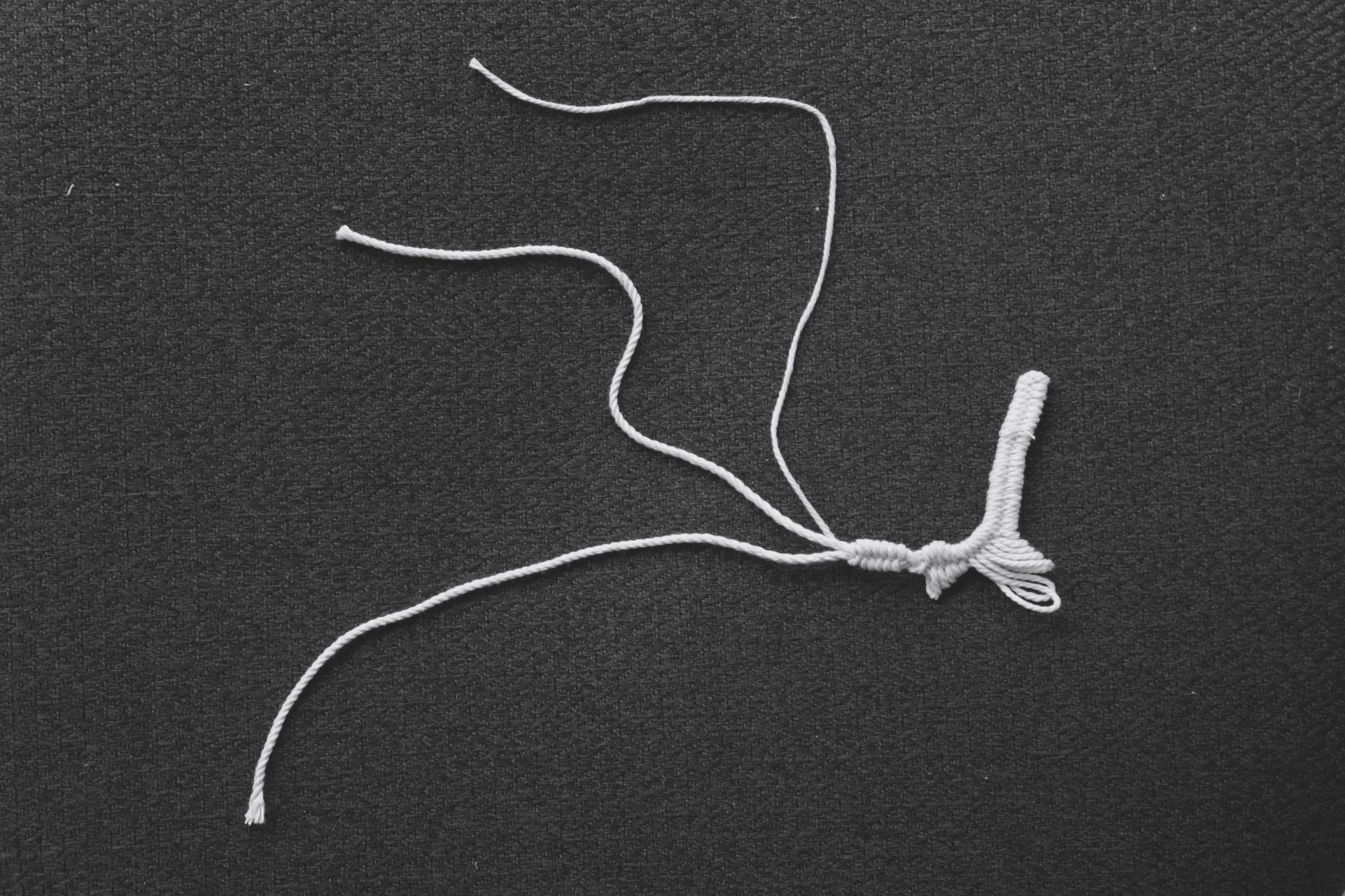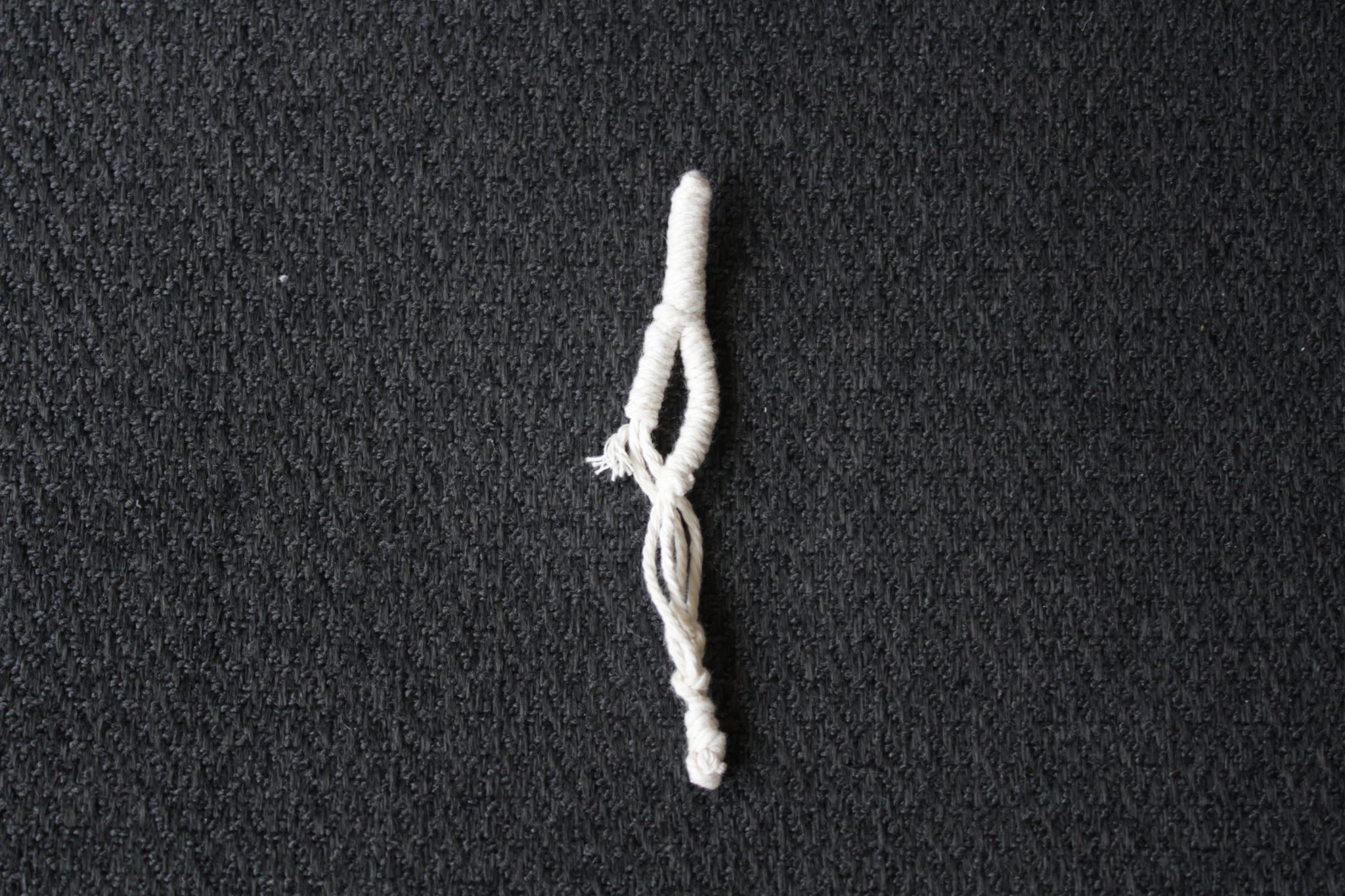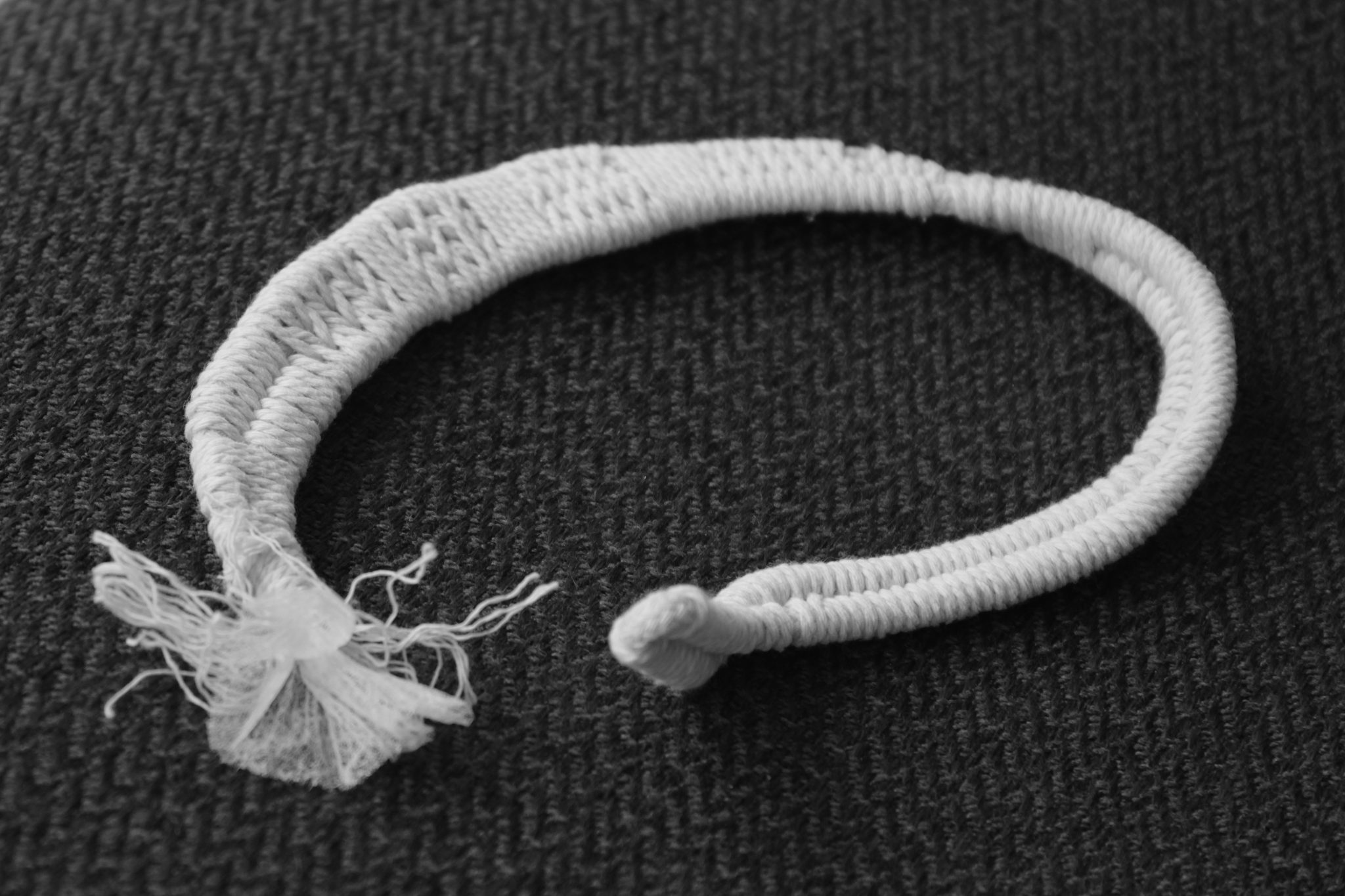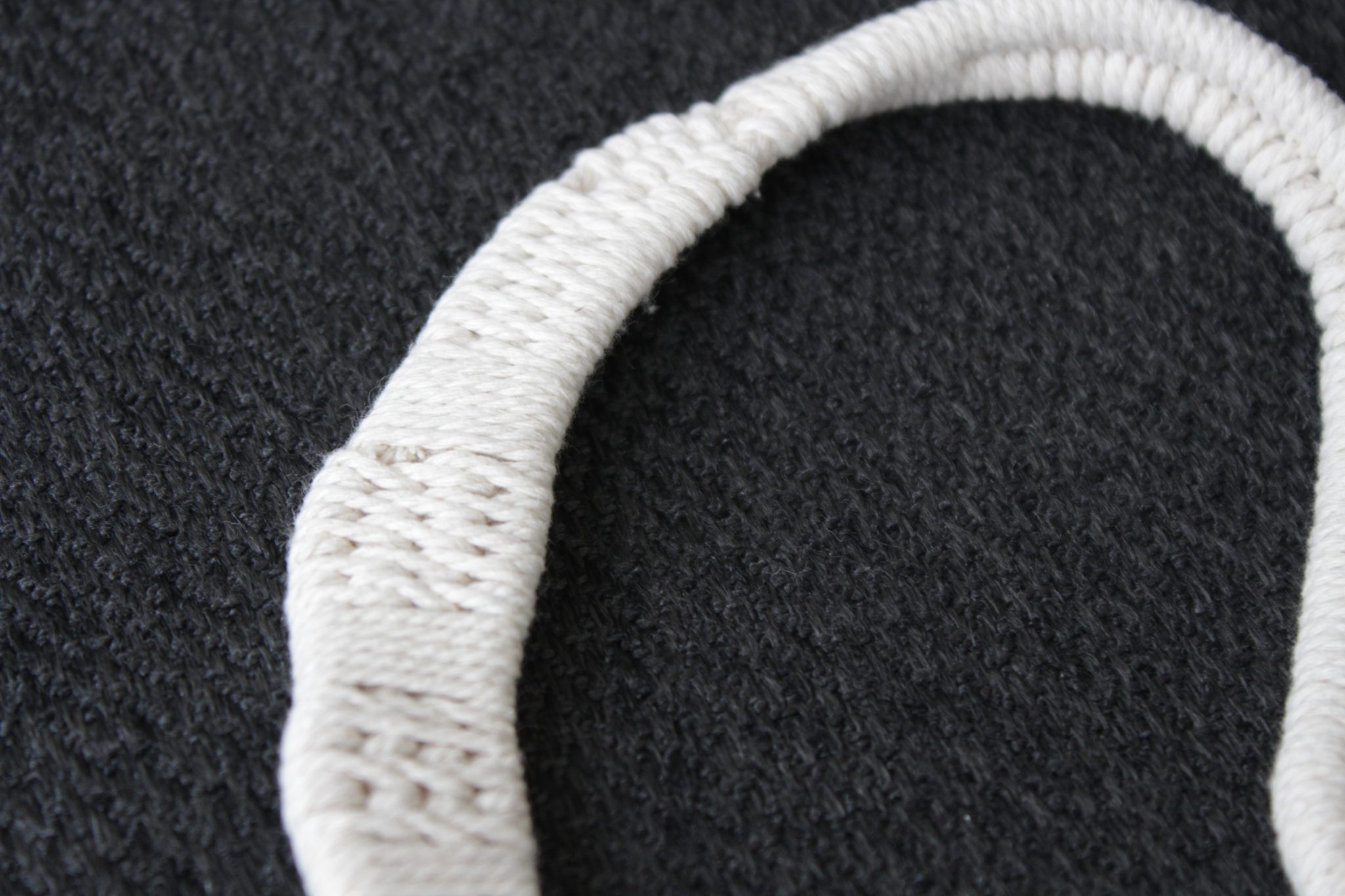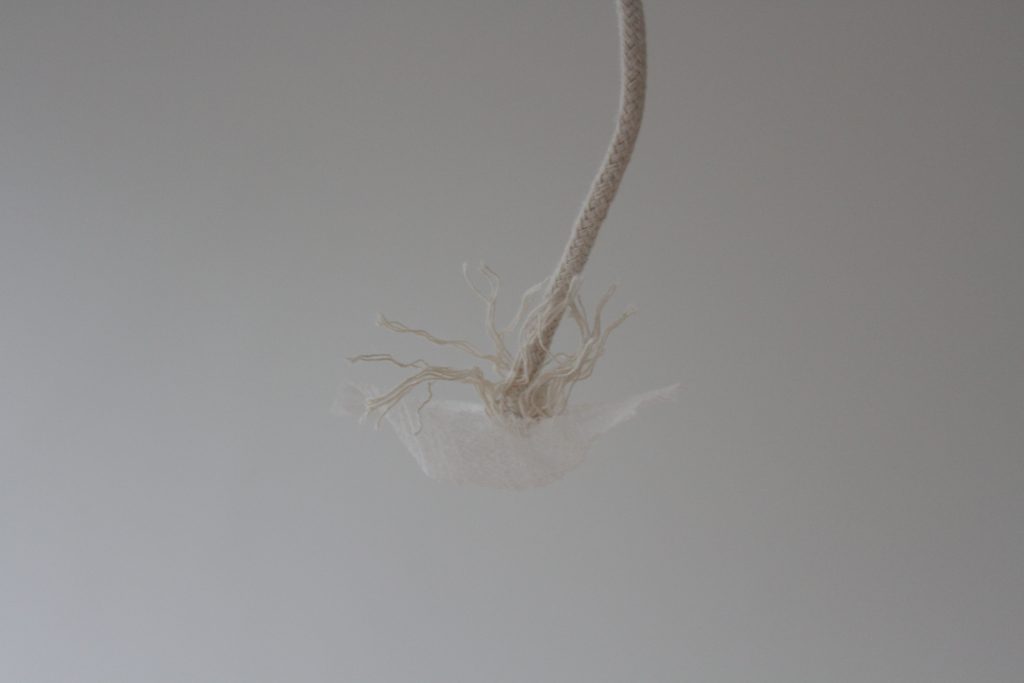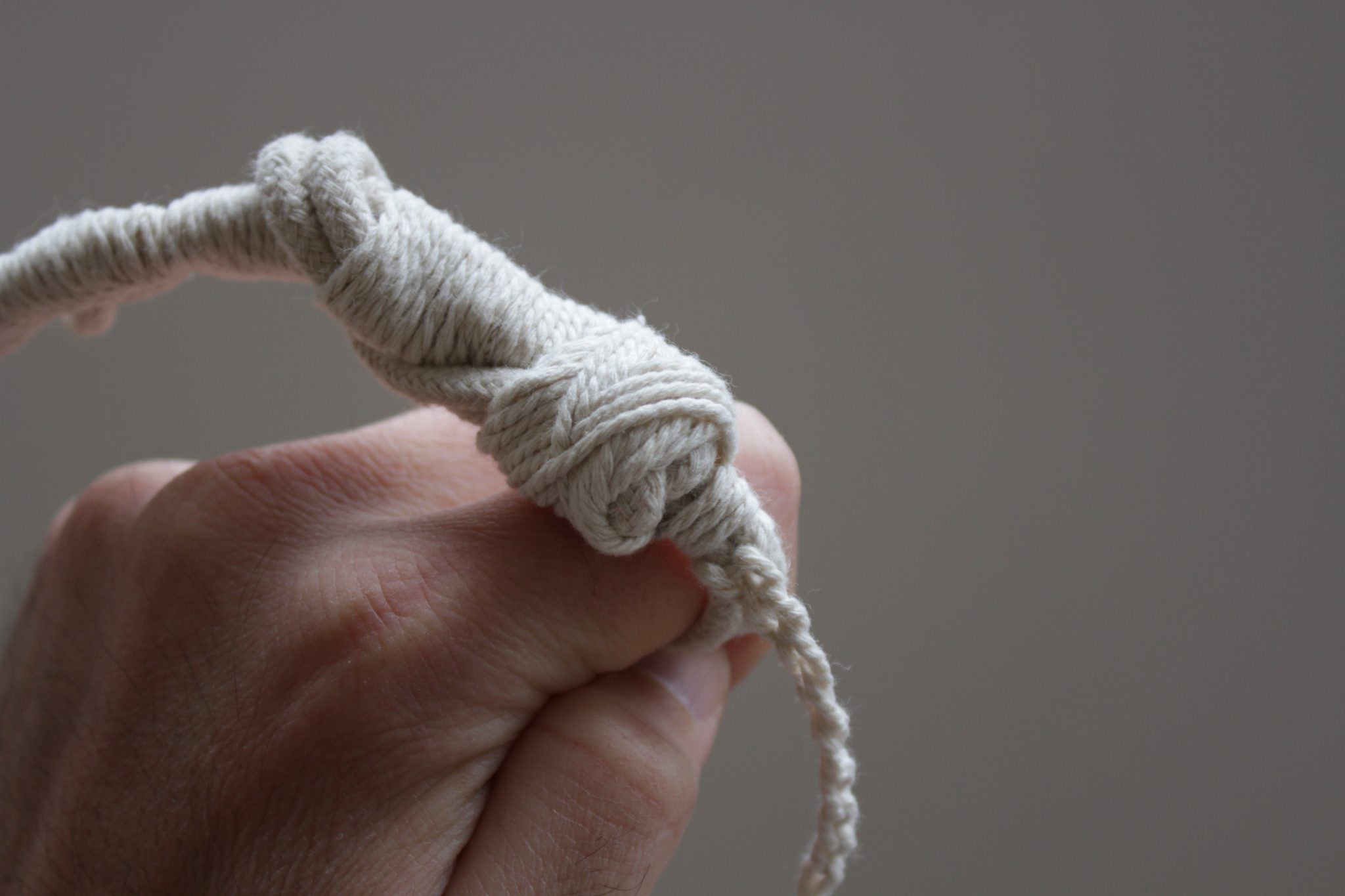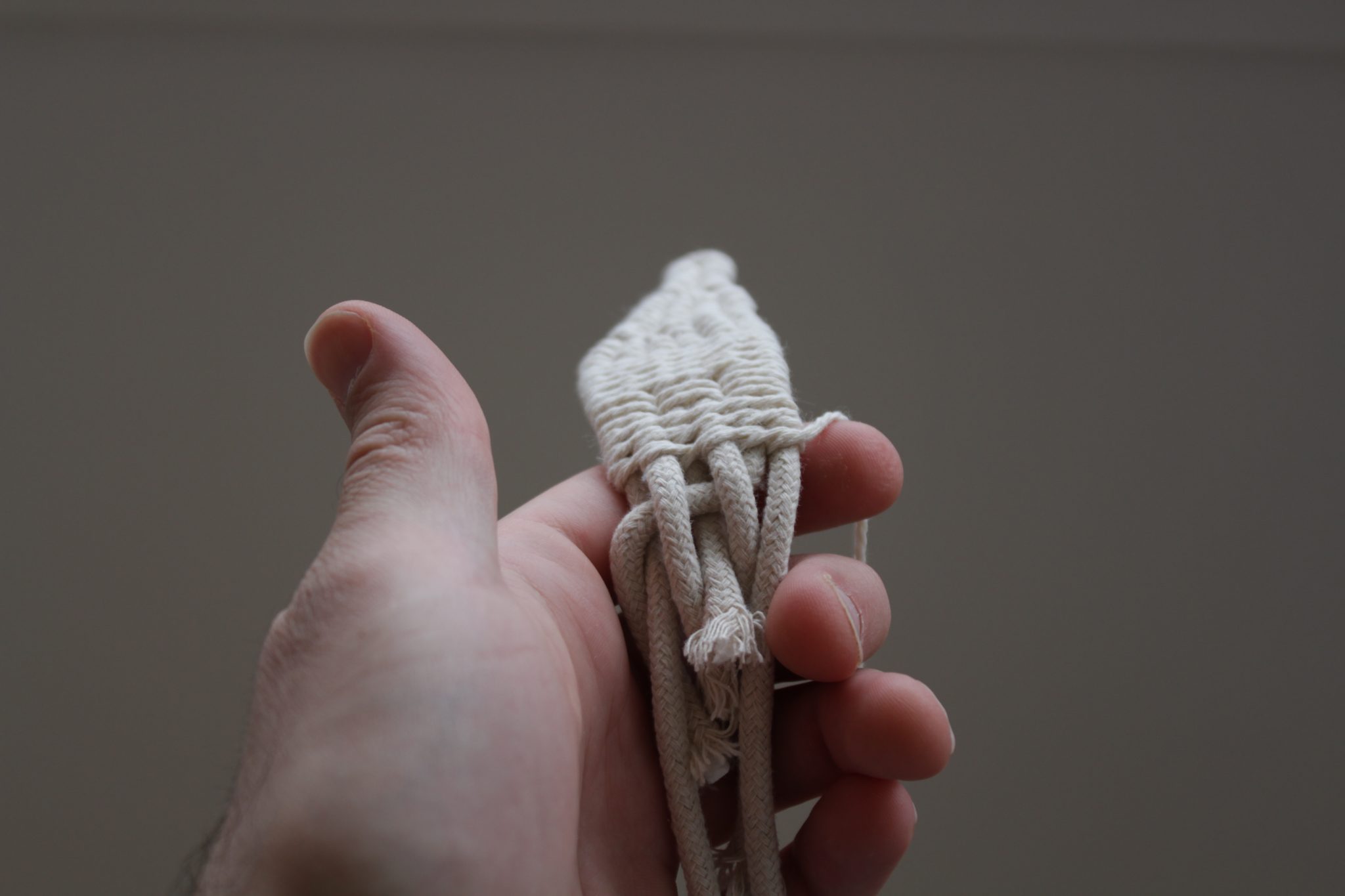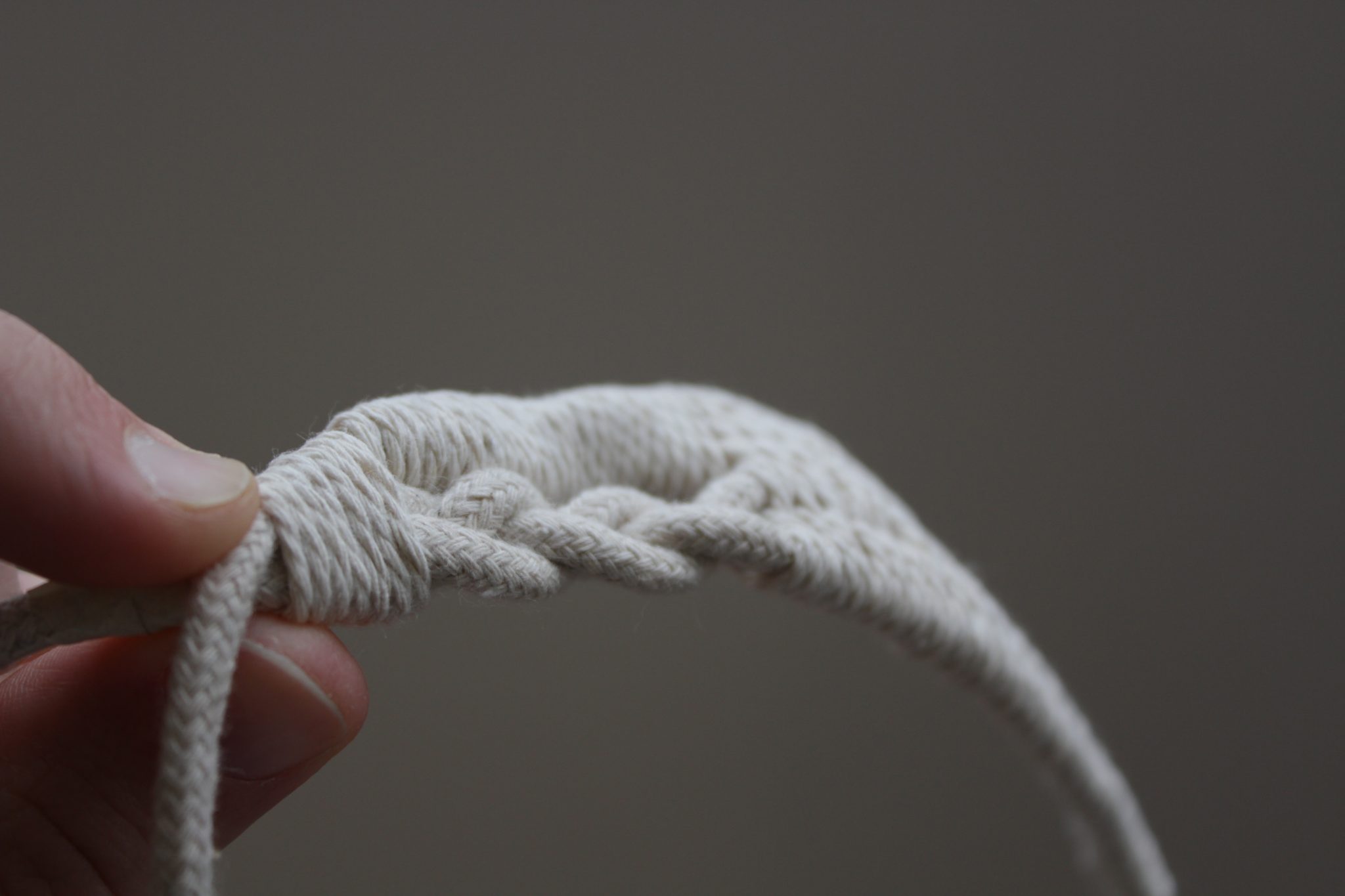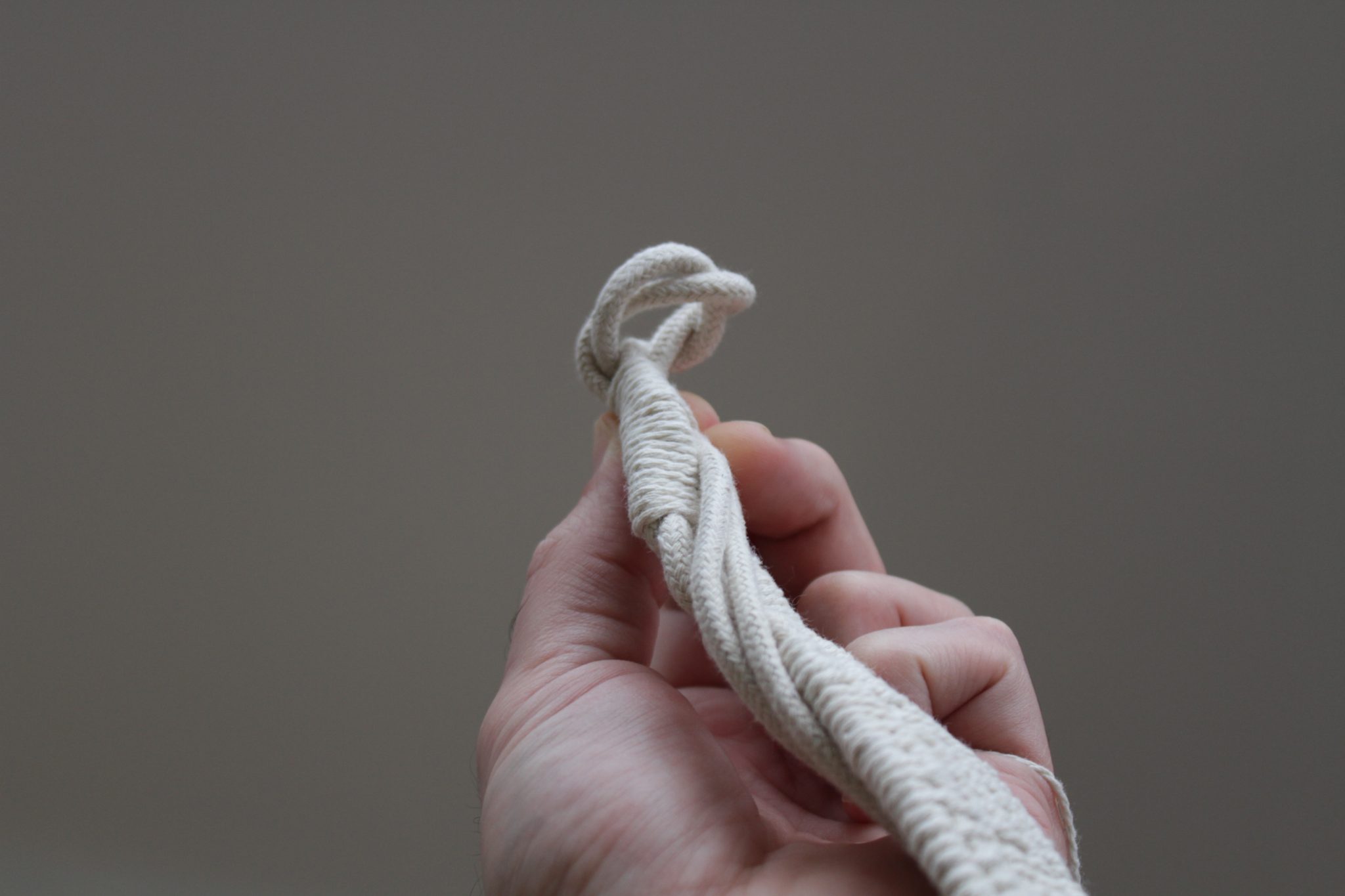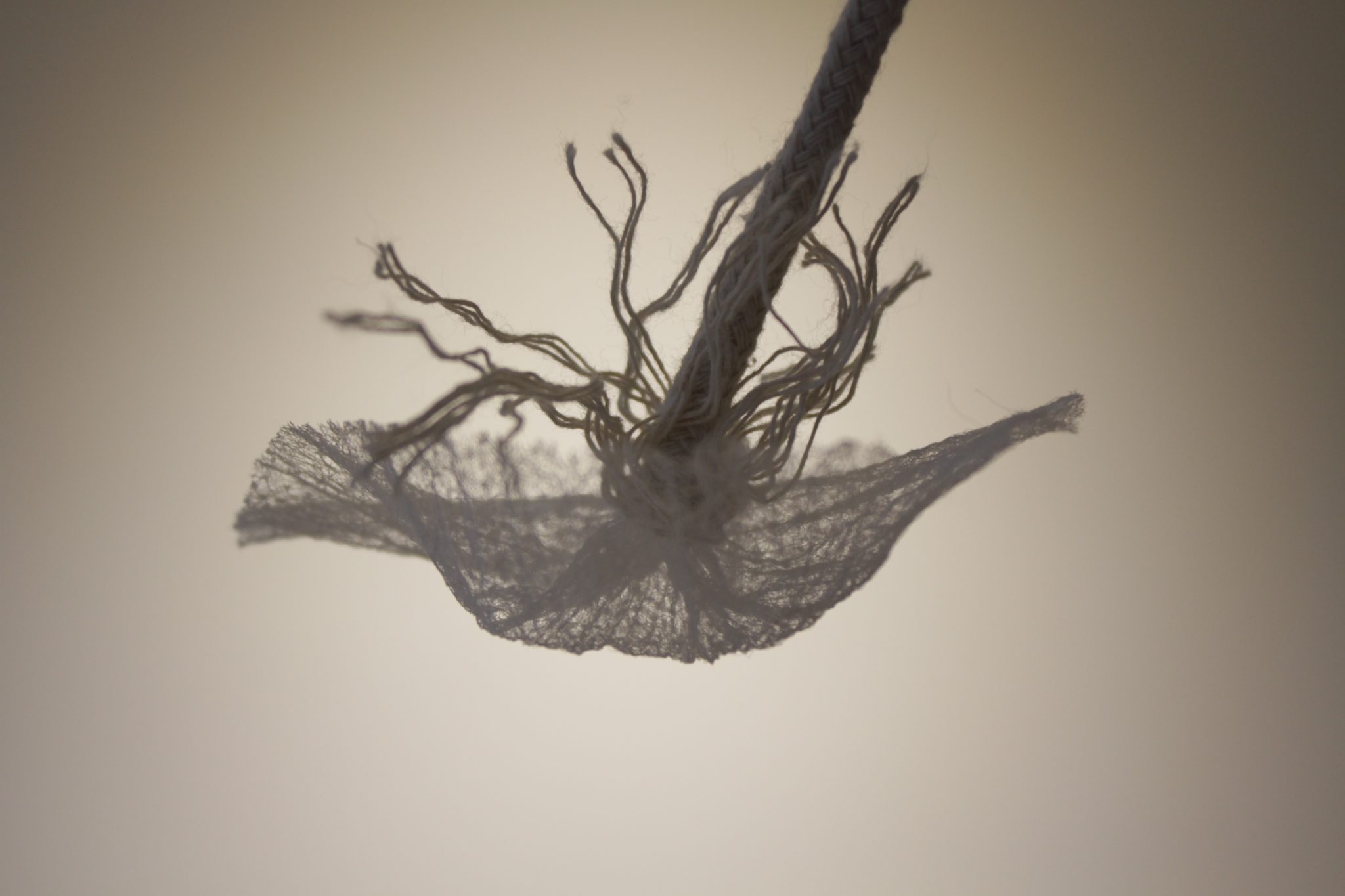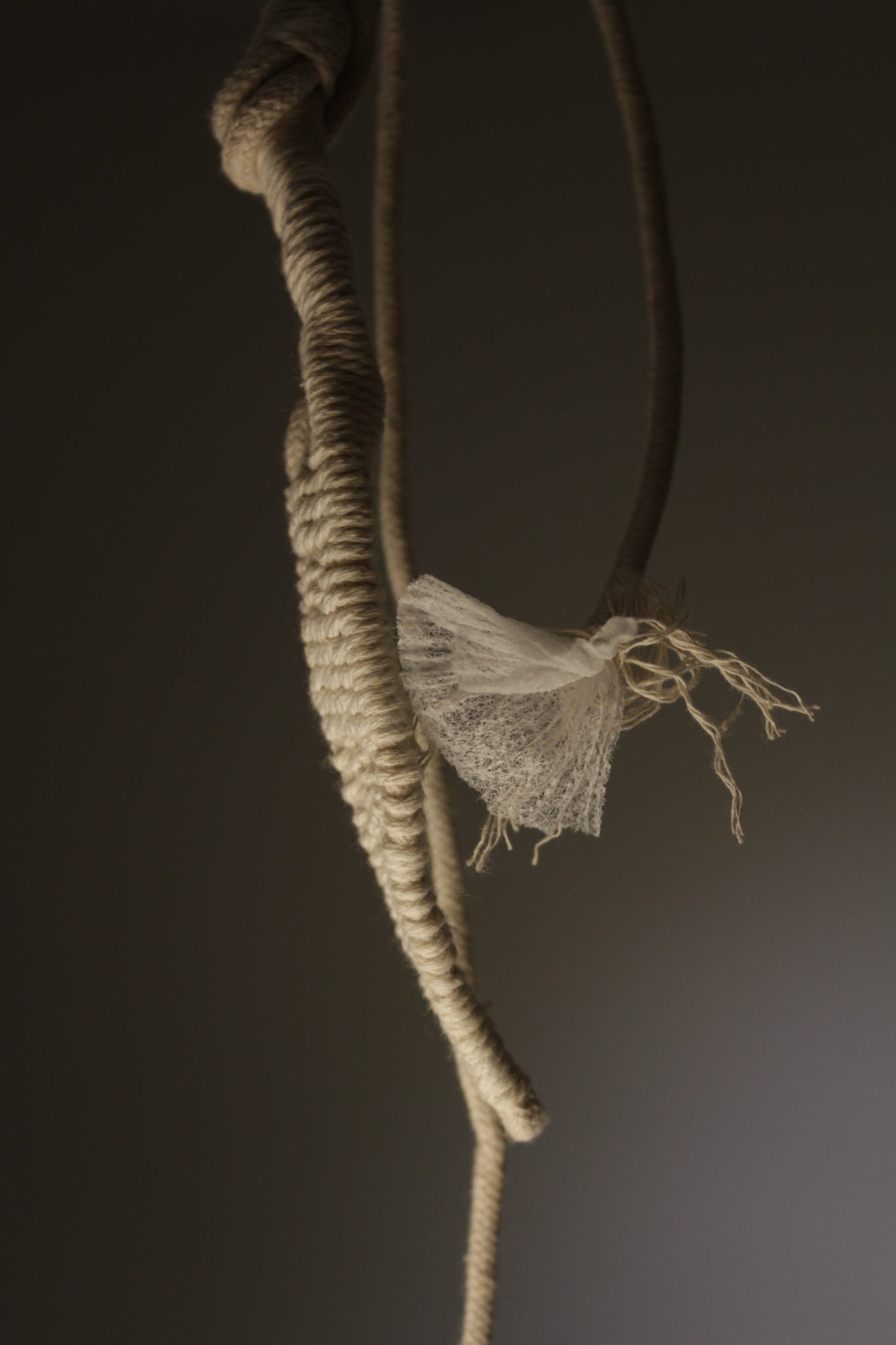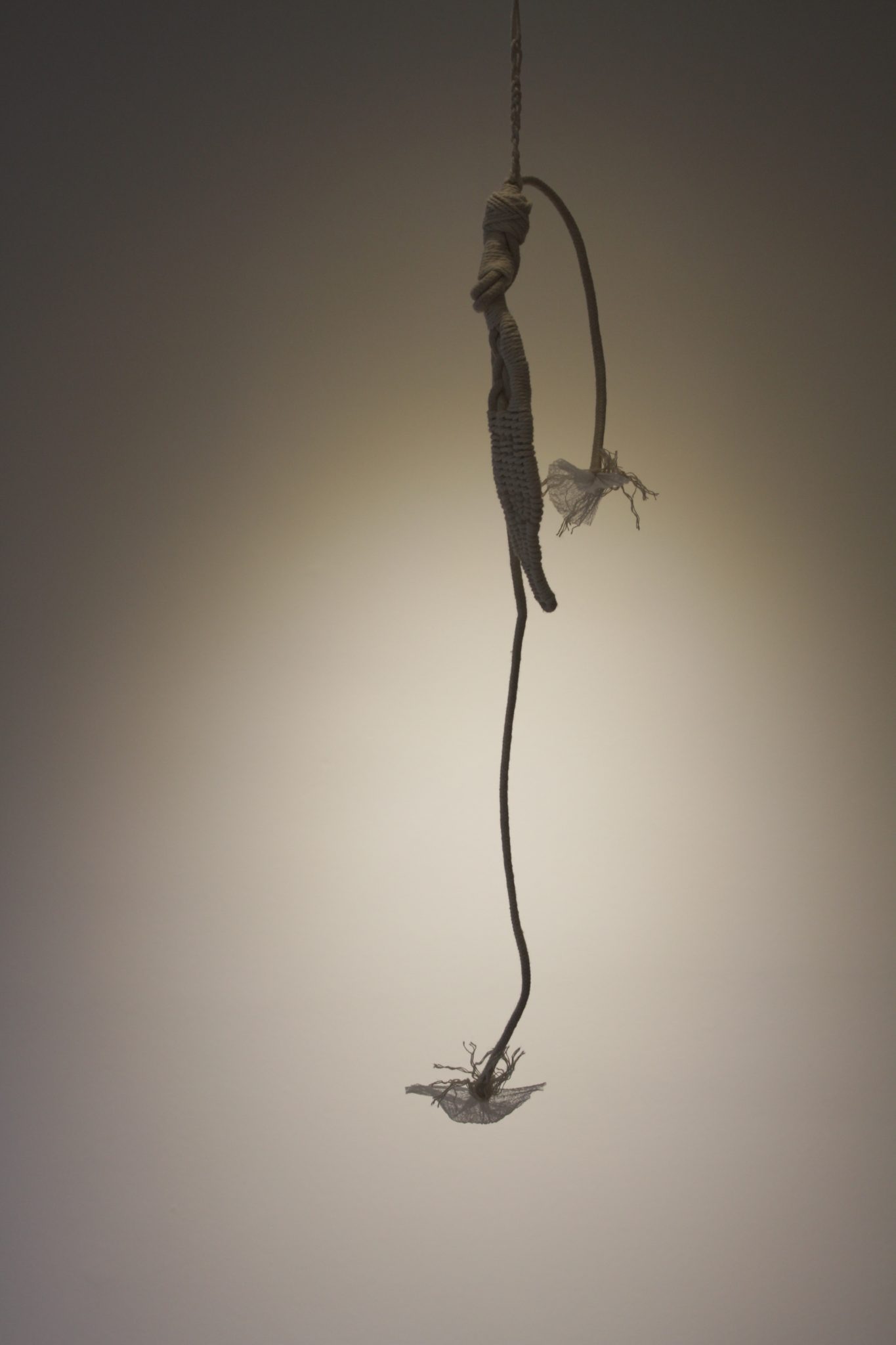Category: STUDIO II
The CNC at ECUAD making the first cuts on my boards.
3. Looking back and forth
The project and
the bigger context
This project meant for me at the same time both continuity and changes; it helped me to crystallize some ideas and methods, and it helped me outline the approach for my research (at least for the summer term). This project also worked as the link for getting to work in shops back again, serving as a vehicle for exploring new machinery and new ways of making and identifying new possibilities that come with those.
Overall, my work in Studio II was deeply related to the personal process of settling in Vancouver and trying to identify the current characteristics and potentialities of my practice. Project #1 looked for a possible way of crafting things at home and engaging with weaving-like work; Project #2 explored alternative but related ways of reinterpreting the outcome of #1; this project consisted in making objects related to the previous ones, but using the shops at school and further expanding the possibilities for exploring ideas in common.
New settings,
same old themes
For this assignment, I worked in two shops: the Tarp lab and the Metal Shop. In the former, I worked with the TC2: a digitally-controlled Jacquard loom, and in the latter, I worked with ¼” steel rod for exploring hot bending. The theme for these explorations remained, in essence, the same: lines crossing over and under, wrapping around, bending and pulling, and simple materiality. Using the same theme and kinds of objects as a creative catalyzer, allowed me to maintain the focus on the material and technique aspects and compare these experiences in contrast to the previous ones.
Physicality
The kind of tasks I engaged with for this project required a higher level of physicality than with the previous two projects. Both with the TC2 and the steel rods, the range of movement naturally became quite bigger by involving all the body and making the feeling of working rhythm and patterns more noticeable.
Approach to detail
I found an interesting contrast between the approach to detail in these two projects based on how these were conceived. In the woven pieces, the details sit mainly in the design stage and things like paying attention to the transitions between patterns and being thorough on the pixel level but not as much in the making process as the work is partly automatic and repeatable -and it’s even possible to undo and go backwards-. In the case of the steel objects, on the other hand, even though these might not be as complex as the former, the detail resides purely in the making process in interaction with the material; being mindful not to overheat, to heat in the right spot, not to force the bending excessively, etc.
Weaving with the TC2
Feedback:
Studio+Research Assistantship
Weaving with the TC2 Jacquard loom was a great experience that gave me many things to reflect on. Because of being part of the ECUAD/Material Matters research team in the Craft And The Digital Turn project, lately I’ve been paying more attention and reflection on how the digital may partake in craft practices. Luckily enough, by the time I decided to use the TC2, a few months into the CDT project had gone by and I was more receptive/prepared to observe things under this particular lens.
I used the machine twice, 3 hours each time, and I wove around 730 rows of weft across 1760 warp threads. Besides the quite amazing fact that the TC2 lets you weave pretty smoothly super intricate thread combinations and patterns -as intricate as you might be able to make them-, the machine still offers plenty of room for the user to interact and leave their imprint. Even though the weaving pattern is digitally generated and controlled following black-white pixels combinations, the user still has to do a big part of the work physically:
Keeping up the pace
Shuttle in hand, ready to slide
Confident pushing from left to right.
Shuttle aside, you tense the thread.
Pull hard the handle for pressing the weft.
Stomp on the pedal for moving the warp.
Push the bar back, shuttle in hand
Start on the right, end on the left.
Pull, stomp and push; start all over again.
That sequence, along with the sounds the components made in between each movement, became at some point quite rhythmic and served as a a way of observing my progress by hearing my work and paying attention to speed and periodicity in the repetitions. In a way, keeping the rhythm also became a little goal to achieve in addition to getting the technical aspects covered, and it made the experience even more entertaining and challenging.
The experience
with the digital
For working with the TC2, I had to posterize the images of the objects from projects 1 and 2 after setting the resolution to 60 dpi -which is the equivalent in pixels to the thread density that the loom offers-, and which is a lower resolution than what I would usually use. Interestingly, to work with the TC2, I had to use a fancy piece of software such as Photoshop in an almost counterintuitive way: thinking lo-fi and being able to observe and highlight the pixels rather than trying to hide them. It reminded me of using Microsoft Paint as a kid and training pixel-level mouse skills in plain black and white drawings.
But even more interesting was, of course, observing those pixels turning into threads going over and under and revealing those intricate patterns in just about some minutes. All that happened while I was only focusing on getting my technique right and my rhythm being steady.
Steel and a blow torch
Different shops,
different approaches
The design approaches and expectations set for my work in the Soft Shop and the Metal Shop were very different. On the one hand, with the TC2, the textiles were reproductions of images I had already composed: the textile pieces were expected to look as I had previously imagined and determined; the opposite would indicate that something didn’t go that well. For the exploration with steel, on the other hand, the idea was to get into the shop -and getting to know the place and tools-, and trying to replicate some aspects of the objects from #1 and #2. In essence, the idea was the same as many times before this term: simply starting to engage with something new (in this case, hot bending steel) and trying to replicate some particular movements; the objects would be the outcome of my exploration with the material and the tools.
The steel objects
As part of the bending explorations, I did five objects:
– Steel #1: the first one started by trying to reproduce some bending and braiding situations in the final object of project #1.
– Steel #2: I wanted to make a more elongated and less contorted figure that may offer some kind of support for light-weighted objects such as candles.
– Steel #3: started by bending and wrapping the rod from one of the ends for making a stand-alone object. The difference in weight between both ends made it interesting for balancing so since I had Steel #2 as a structure for supporting things, I bent its upper end so that #3 could balance on it.
– Steel #4: consisted of trying to replicate the wrap-around technique with this heavier, thicker steel rod. It was a good exercise for tight bends in tight spaces. The reference object here wasn’t from project #1 or #2, but instead, it was the one in the video in Studio I – Action 11.
Steel #5: I took the exploration in Steel #4 a little further and bent the whole 12′ steel rod. Things got even more interesting at this point.
The dance
To maneuver the 12′ rod, I had to move a few things in the shop and repeatedly make an effort not to hit things around. From walls and windows to a cabinet or an oxygen tank, everything seemed to be in the middle of my way while trying to bend that then larger-than-ever piece of steel. On the other end, right next to the vice clamp, was me, dodging and going under the rod on every turn and turning on and turning off, and turning on and turning off, and turning on and turning off the blow torch while pulling and bending the rod. That sequence would repeat as many times as turns I decided to do.
As the bending went on and the stock became shorter, things started getting a little less acrobatic. While doing this object, I noticed that because of the long rod having a significant weight towards the bending point, I could do the bending without exerting any force on the rod and just heating where needed and letting the rod do all the work on its own. When doing that, the bends would turn out very smooth, and the risks of over-heating the piece would be smaller. That way, the rod would fall and bend when it was ready to do so, and I wouldn’t hurry or delay that moment.
The ringing thing
As I usually do with things that may produce some kind of sound, while I was getting out of the shop, I hit the object to see how it might behave, and it turned out to ring like a bell. I was expecting some harmonics to ring -being a steel rod, it was supposed to vibrate and resonate-, but this turned out more interesting than what I could have expected. The acoustic phenomenon happening here is something I’ll have to research a little more to understand completely, but that’s for the future, not for this project. Funny enough, I think this founding happened later on the very same day I was introduced to the amazing Harry Bertoia’s sound sculptures by Sophie. There wasn’t anything conscious in these things, and I hadn’t even thought of making a sounding object; it just happened that way, but it made a lot of sense.
The object rings in pretty interesting ways, producing bell-like tones with a fundamental audible at a certain point and lots of harmonics coming out of every loop. It’s not that loud, but it’s got lots of sustain (rings for a long time), and it’s strikingly focused and directional: as you align the end where the two tunnels converge towards your ears -or a microphone-, the sound gets even more complex and pulsating.
I made a (very) homemade recording to show at least part of the sounds coming out of this object. As I don’t have recording equipment at home at this moment, the sound was captured with the camera microphone and an iPad inside a closet that worked as an isolation booth. As a big part of the sounds coming out of the object aren’t that loud, I used a glass of water and the wooden shelf to amplify the sound and to be able to capture more of it. The thing worked and, put into the water, many of the lower tones and harmonics came out louder. Below, the video:
2. Variations
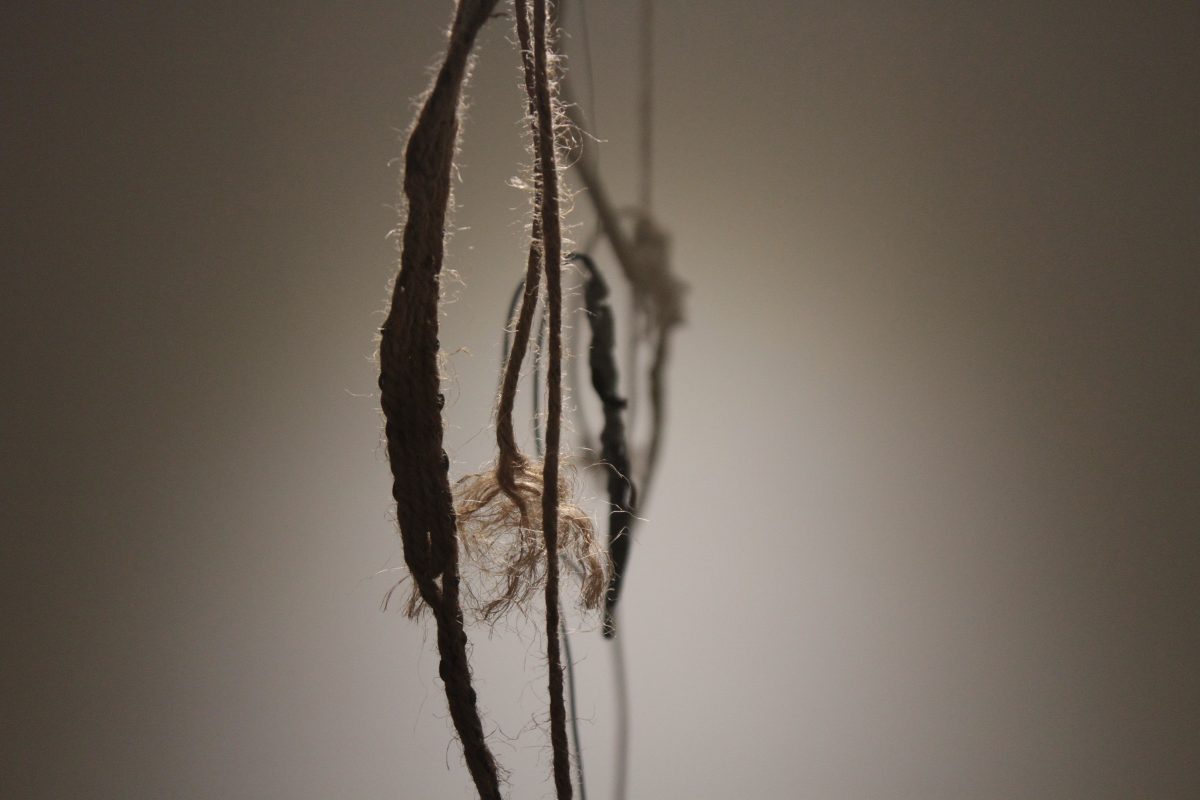
The project
My approach for this assignment was to deepen the exploration of weaving by resuming and continuing aspects, observations and reflections about the work done in Project 1. As many of these explorations and their resulting artifacts are quite abstract, a big part of the work in this project consisted of reflecting on what these inquiries mean to me and why I seem to be revisiting some recurrent ideas and themes during the last few months.
The final object I produced for Project 1 was the result of using many different techniques and ways of interacting with the twine (See Aesthetics, in Project 1). For this assignment, I found interesting the idea of exploring how replicating the artifact with different materials and techniques could work and what the outcomes would be. The first variation consisted of the object reinterpreted in wire, and the second was made with jute and green waxed cotton twine. For the wire version, I used the wrap-around technique and, for the jute one, I used ply-split braiding.
Parallel to these objects, I did many little exercise pieces exploring those techniques and others. I also worked with some wire crochet practice bits, but no artifact has come out of that exploration yet. Pictures of some of those pieces can be found at the end of this post.
The wire object
The wire object was the first step I took into this project. The idea was to reinterpret the artifact from project 1 using 14 gauge aluminum wire and 26 gauge wire instead of cotton. The result was an object intimately related to the first one in some aspects while completely contrasting in others.
The technique used for making this object would be the same as the one used to produce the one in Project 1 so, the criteria used was straightforward: following the wrap count, the braid loops and the rope/wire dispositions as strictly as possible.
Naturally, this object ended up being smaller than the one made in cotton (around 3:5), as the wires used were thinner than the twine. In terms of the form, the wire object quite resembles the first one, although the wire being naturally stiffer makes some of the wraps and curves look somehow less fluid than in the cotton version. Although the patterns and shapes look similar between both versions, aesthetically, the materials are quite different. That translates into radically different colours, texture and light refraction properties.
The haptic experience of working with wire for producing this particular artifact was also really contrasting with the previous one and working with cotton. That was easy to expect, and there was no surprise in there. But what I didn’t anticipate was the differences in my state of mind while working on each version, and how the materials could have such a direct impact on that.
When working on the cotton piece, the process was naturally very forgiving and responsive with my hands, and small interactions such as twisting one cord a few turns would generate a fluid and organic movement in the whole object. At some point, it felt like every thread would cooperate to generate movement in the piece. The situation with the wire, on the other hand, was completely different and in comparison, every wrap felt forced as if I was constantly asking the material to respond in ways that were not quite part of its nature. It wasn’t only wrapping; it was also bending, pulling and pushing, and it was still quite a thin wire. The marks of that process are even visible in the object.
It may be relevant to note that the conditions of the making for both those pieces were different on themselves from the beginning. Making the cotton piece was a creative process of interaction with the material and letting it work on its way and suggest the directions. Conversely, when working with the wire I was recreating a particular piece, following pre-established directions and imposing conditions to the material.
The jute object
This paragraphs are yet being written.
This second variation was made using jute and waxed cotton twine. Because of being made with cords instead of wires, this object was more related to the original piece than the previous variation in the form-determining aspect and haptic experience.
Although the similarities in terms of materials used, the technique employed was different, and that had a direct impact on the final form, aesthetics and size of the object. For this variation, I worked with ply-split braiding so, instead of wrapping around the big cord, I would be going through it. Wraps would become stitches, and so I followed the count in the cotton object so that one wrap would equal one stitch. Object 1 is a combination of different wrapping patterns that weren’t possible to reproduce here. Nevertheless, those changes still occur and respect the frequencies but differently. For instance, going through below different amounts of braids in contiguous cords, therefore showing more or less green twine in the surface, etc.
Because wraps would pile tightly against each other, and stitches would need a minimum space one from another, the object’s dimensions changed considerably, and the jute one ended up being twice as long. In those places where the big cords would braid or wrap around themselves, the scale was almost the same (9:10) between the jute and cotton versions, respectively, as the cords were similar in diameter. As a result, the proportion between the parts changed considerably in this variation, and the object ended up stretching.
The form of this object was also very much determined by the material and the technique. The twine going through the thicker cords and following its undulations seems to have given the piece an own spiralling movement that the cotton version doesn’t have. Naturally, splitting and spreading the thin braids was also possible with the jute for replicating the finishing technique from object 1, something not possible with the wire version.
The making experience was different from the ones with the other objects as well: focusing on finding the correct spots for stitching through the cord instead of thinking about the wrapping patterns was an enjoyable change of procedure and interaction with the material. Changing the technique made this process very interesting, as that allowed different situations and outcomes to happen in the making of an object that was already familiar to me. That generated a feeling of novelty similar to the one I had experienced with the cotton object forming itself throughout the making.
Some reflections
Working on these last two projects, I found some compelling aspects that can surely complement my practice and are worth exploring and developing.
One of those things was the meditational quality of the weaving or similar kinds of work. Although I’ve always been observant and reflective about the tasks in my craft, there’s something about the nature of weaving that makes it easier for me to observe and reflect while making. Of course, compared with woodworking or metalworking, I’d say things were quieter, cleaner and less rough and dangerous, and the whole setup and mindset are completely different. That already changes a lot, but I think there’s also something related to the repetition and the speed at which things elapse that I’ve found very meditative. I’m used to loud tools, dusty surroundings and clothes, cutting, grinding, drilling, hitting and heating things, but this was a very different way of making and something very compelling.
There’s something about the form, aesthetics, textures and the kind of movement possible with these objects that I hadn’t engaged with before. There’s even something related to gravity in these kinds of objects that suggest to me a different perspective. It’s quite simple actually; but I’m used to making sturdy, heavy functional objects that are supposed to anchor themselves against the floor, hopefully moving as little as possible and these objects are quite the opposite of that: they’re light, undetermined and suspended objects that will move and shift with a breeze.
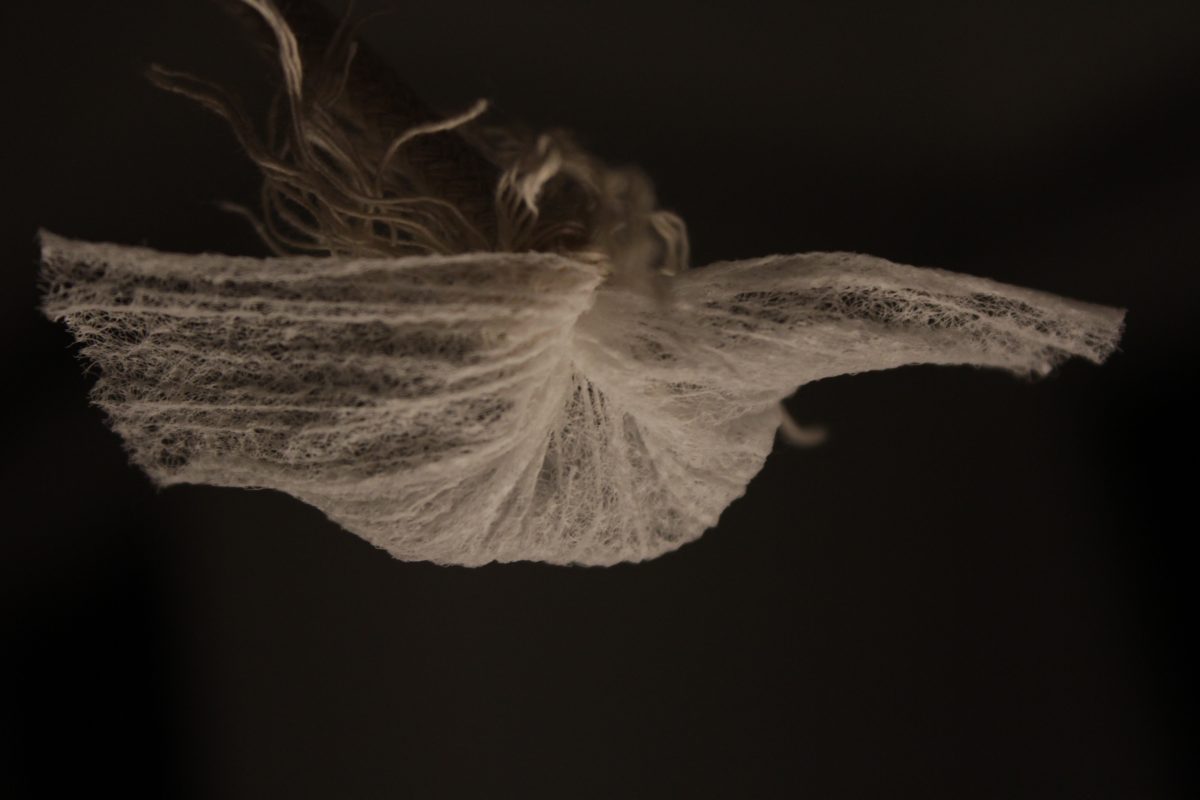
The Project
For this project, the first one this term, I wanted to continue and expand in the direction I took in my last assignment for Studio I. That action, #11, consisted of explorations with thin wire, mainly using the technique of wrap-around -commonly used in jewelry-. For this assignment, I decided to use cotton twine instead of wire to experience and engage with a new material while still using many of the same weaving techniques I had used before.
The making and the objects produced
The result of this exploration was a set of objects, many of which were exercise pieces for trying different techniques, and the last two were complete objects on their own. The objects weren’t meant to be either representational or functional. They are explorative objects with the focus put on texture, asymmetry and broken patterns, with a sense of beginning, middle and end in an interaction with the material and the movement it can generate on its own.
Framework.
How does this relate
to my research?
Scissors were the only tools I needed for working on this project. The idea of being able to work and produce something with as few tools as possible in a small space is something particularly compelling for me right now. That idea relates with the work I did during the last term in Studio I -low fidelity materials and working with the resources at hand-, but it also relates to my personal story with crafts, and to a big part of where I believe so far my thesis research could head to.
My personal experience with crafts and so many of the things I am today are entirely connected to working in my shop in Argentina. Having that space allowed me to experience relevant personal growth and opening to so many new creative possibilities. For many years, the work me and my partners were producing was something I could identify with, but that came to an end when the economical crisis context in Argentina forced us to close. As time goes by and the MDes moves me to reflect, I’m realizing all the things I gained with that experience but also the ones I could have lost. Closing a shop can mean a severe backdrop to the practice of a craft person, even more so if that also means having to sell tools. In that sense, counting with the place and machinery to make can generate so many possibilities, but it can also generate dependence on infrastructure.
Even though I had to close my shop, the MDes is the best continuation and development for my practice I could have asked for. One of my goals here is to explore new ways of making and broadening my making and expressing possibilities with practices that may not require a big infrastructure. The idea of a walking shop/studio and a craft practice I could take with me wherever I may go is something I hadn’t ever considered before this program, but that actually makes a lot of sense to me now.
What can I learn from
a new material?
The cotton twine allowed me to experience a different type of connection and interaction with a material while working. The haptic experience was naturally very different from the one when using wire, and the response to traction and compression/pressure offered more possibilities and nuances than the wire. The resultant texture and the formal and aesthetic qualities also varied. The objects tend to move in different ways following the changes in pressure and density of the cotton twine turns, and the structures on themselves are much more fluid than with the wire.
What can I learn from
a new technique?
Working with the same logic but using a softer medium was also an interesting way of observing the technique. Technique exploration is always appealing to me, and it’s one of the main drives of my practice: incorporating new techniques into my skill set is for me like learning new words and broadening my expression means. A new skill means new ways of making; new ways of interacting with materials, tools and spaces; new ways of moving and engaging with my body -particularly my hands-; new ways of observing and understanding, and new creative pathways.
Aesthetics
The nature of the object was defined by the material, and many aspects of the form and aesthetics were determined by the twine and the way it interacted both with my hands and with itself, turn after turn. I felt this project ended when I completed this hanging cotton twine object that represented the technique and material explorations I had been working with over those two weeks. The artifact was complete when I found that the thick twine I was using contained a synthetic fabric in its core. This material was something I could unfold from inside the rope, and it had an interesting texture and transparency. The finishing technique was embedded in the material itself, and it consisted of revealing what was inside of it rather than trying to hide it.
The lightning and the photography make, of course, a contribution to the whole aesthetics of the project. For me, the photos not only serve a communicational purpose, but they’re also an extension of my works themselves. The process of setting the lights, placing the object and taking pictures, works for me as a way of observing the artifact from a different perspective, with a more contemplative attitude and a different mindset. The viewpoint shifts, and it’s not me watching my hands working on the object anymore; it’s now me observing the thing and how it stands/hangs and how it interacts with the light, the shadows it casts and the way it moves or the movements it may suggest. The photography process lets me see the object from the outside and reflect on it and perhaps learn something else from it once the making is over.









